Italy - 2017
Operatif Music-lovers Verdi tour.
(Dubai – Bologna – Reggio Emilia – Parma – Milan - Dubai)
After a night in Dubai, we flew to Bologna.
Bologna
Bologna is the largest city of the Emilia-Romagna Region in Northern Italy.
It is the seventh most populous city in Italy, at the heart of a metropolitan area of about one million people.
Bologna has a well-preserved historical centre,
thanks to a careful restoration and conservation policy which began at the end of the 1970s.
Home to the oldest university in the world, the University of Bologna, established in AD 1088,
the city has a large student population that gives it a cosmopolitan character.
In 2000 it was declared European capital of culture and in 2006, a UNESCO "city of music".
Bologna is noted for its collonades. There are more than 40km of them.
Bologna’s porticos were built because of the city’s early growth when eager students rushed to the world’s first university.
Bologna simply needed more room. Porticos created more liveable space higher above ground level, with shops underneath them.
Arches at least 4 metres tall meant people riding their horses could easily pass through.
Even artists and craftsmen could work outside, sheltered from the elements.
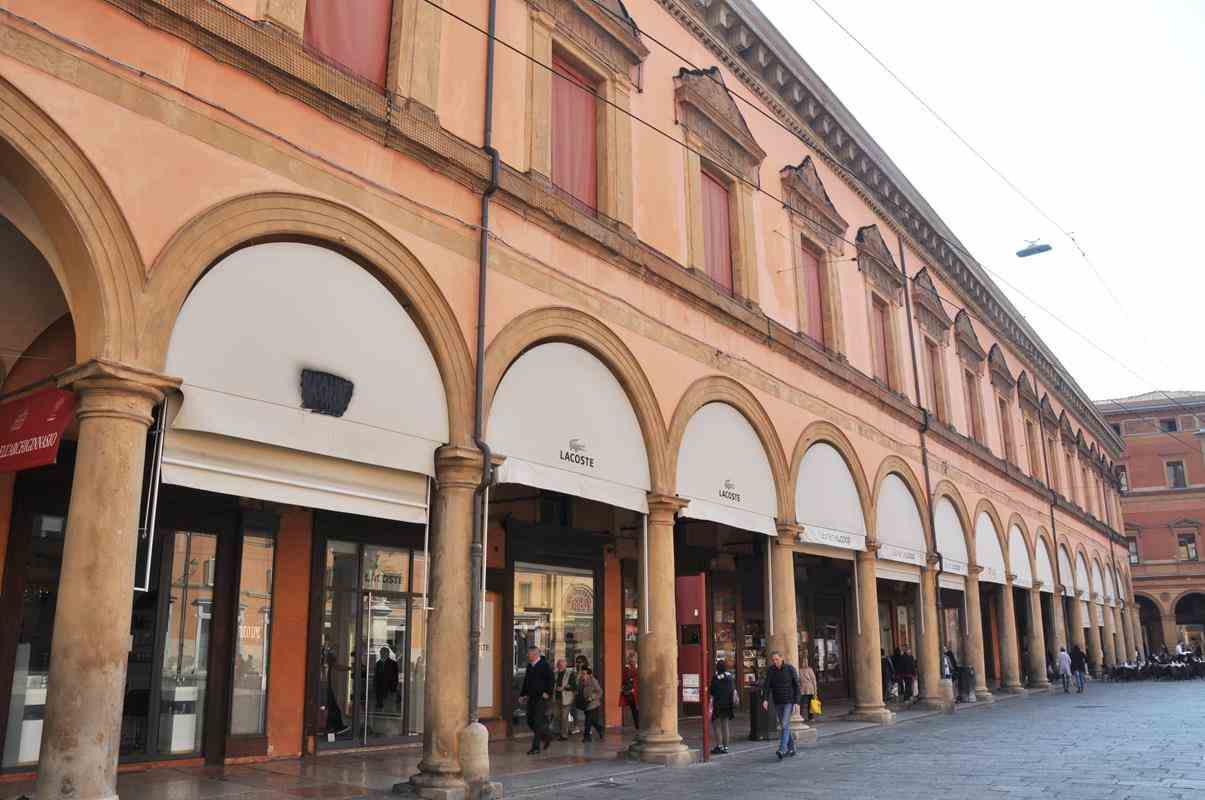
University of Bologna - The Archiginnasio
The University of Bologna, founded in 1088, is the oldest university in continuous operation,
as well as one of the leading academic institutions in Italy and Europe.
It is prestigious, commonly ranking first in Italian national rankings.
This building (The Archiginnasio) was built very quickly (1562-1563).
The goal of this project was to create a single place where the Schools of the "Legisti" (Canon and Civil law)
and "Artisti" (philosophy, medicine, mathematics, natural sciences and physics),
previously located in various places across the town, could be hosted together.
The building of the new "Schools" was named Archiginnasio after the classical term which was used to designate the Studium,
as the University was first called, of Bologna.
The Archiginnasio ceased from being a University in 1803 when the University was moved to Palazzo Poggi where it is still located today.
Later we visited the museum at the Palazzo Poggi.
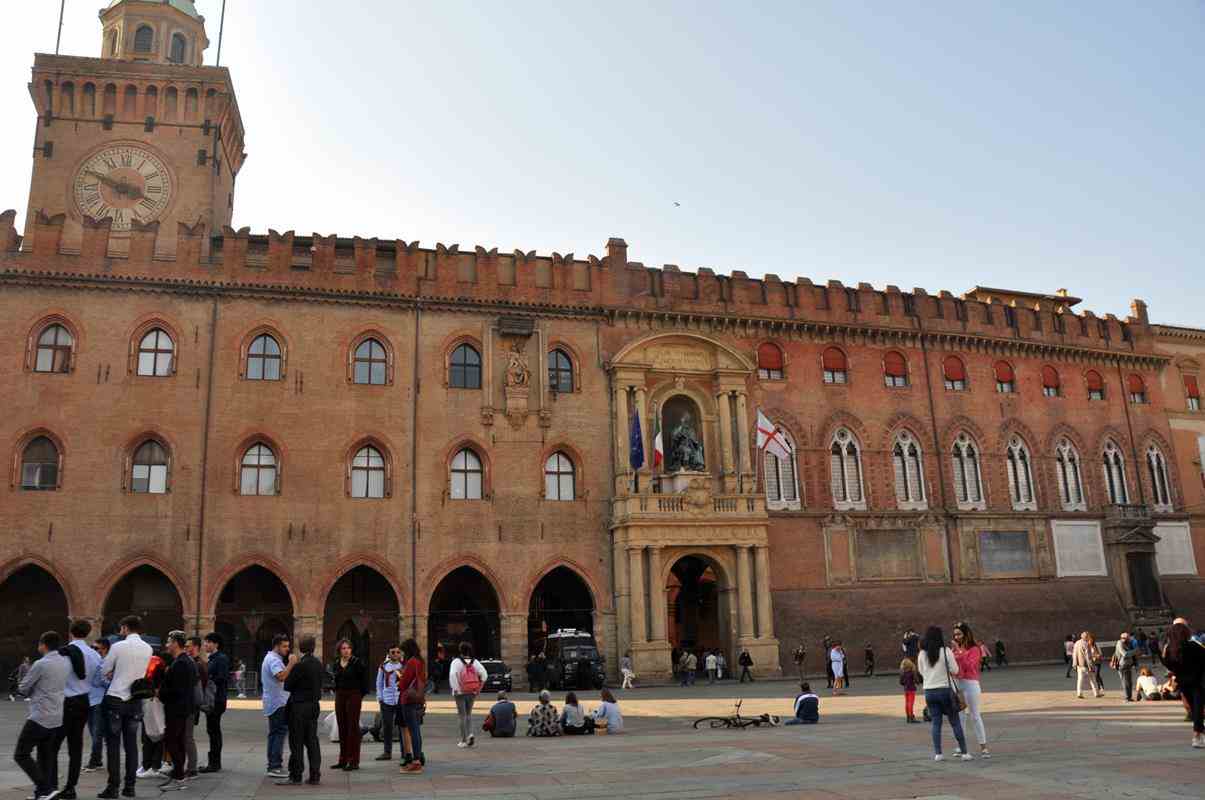
The Anatomical Theatre of the Archiginnasio at the University of Bologna
This beautiful, ornate wood-lined lecture theatre was built between 1636 and 1638.
The ceiling and the wall decorations were completed from 1647 to 1649.
The theatre was almost completely destroyed during the Second World War, by an air raid on January 29, 1944.
After the war the theatre was rebuilt using many of the original pieces recovered among the rubble of the building.
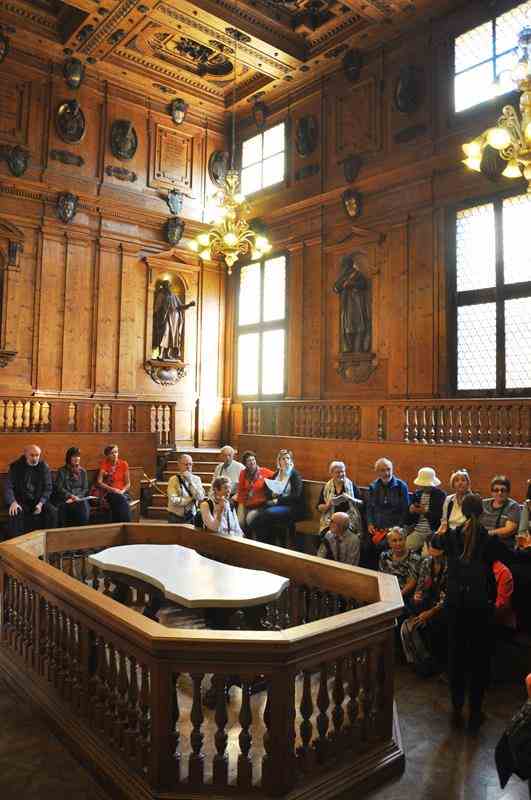
Biblioteca comunale dell'Archiginnasio
This ornate library is a another beautiful part of the Archiginnasio at the University of Bologna.
It dates from 1838 when this section of the Archiginnasio palace was used to house and preserve the books
collected from the closure of the religious orders made by Napoleon
Besides purchases there have been many donations from eminent people and scholars of Bologna since then..
Many of the handwritten and printed items deal with the civil, cultural, religious and social history of Bologna
and its territory from the Middle Ages to the present day.
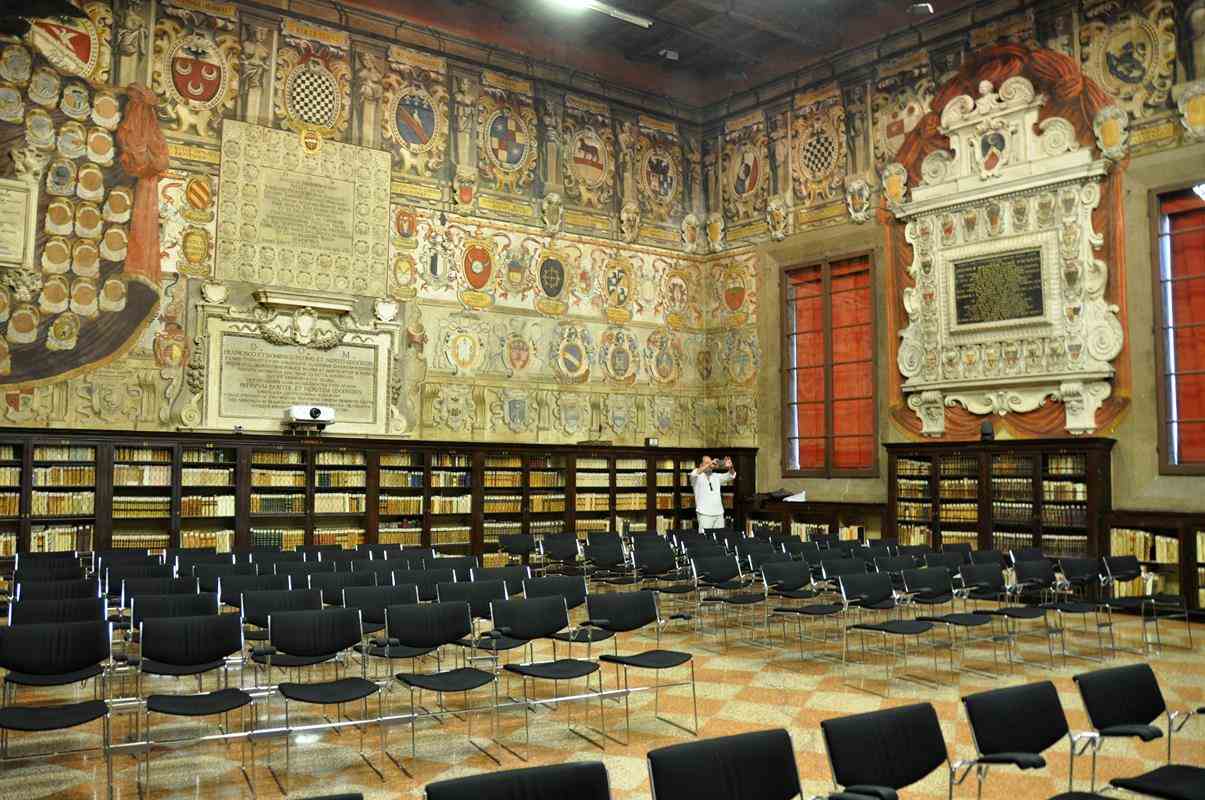
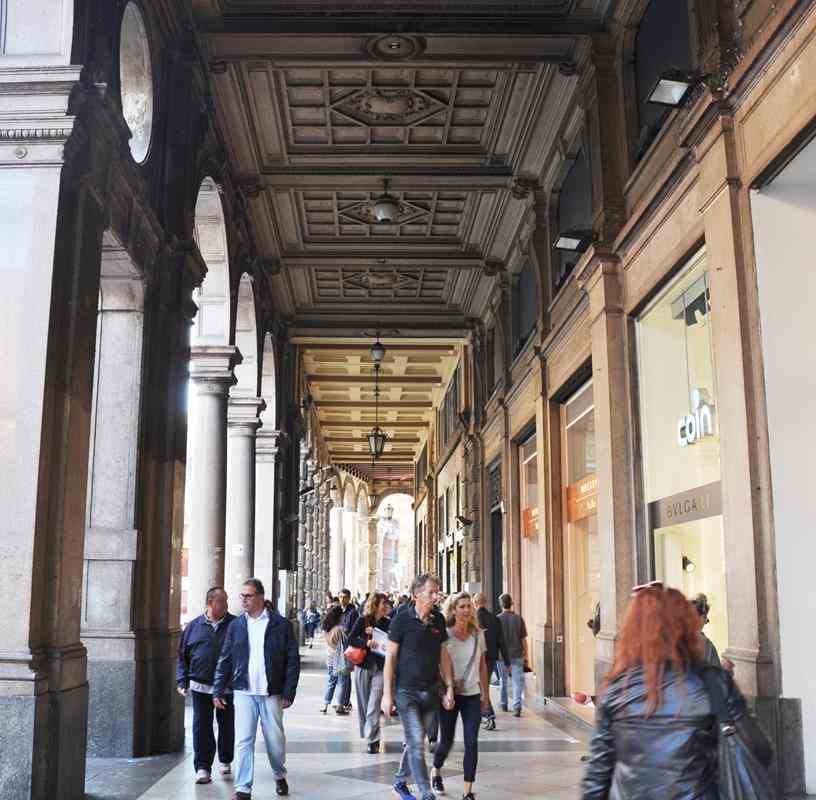
Views of Bologna from the roof of San Petronio Basilica
We rode a lift to a viewing platform on the roof of the Basilica.
It was a temporary platform unlike the walk on the roof and beautiful terraces of Milan Cathedral later on our tour.
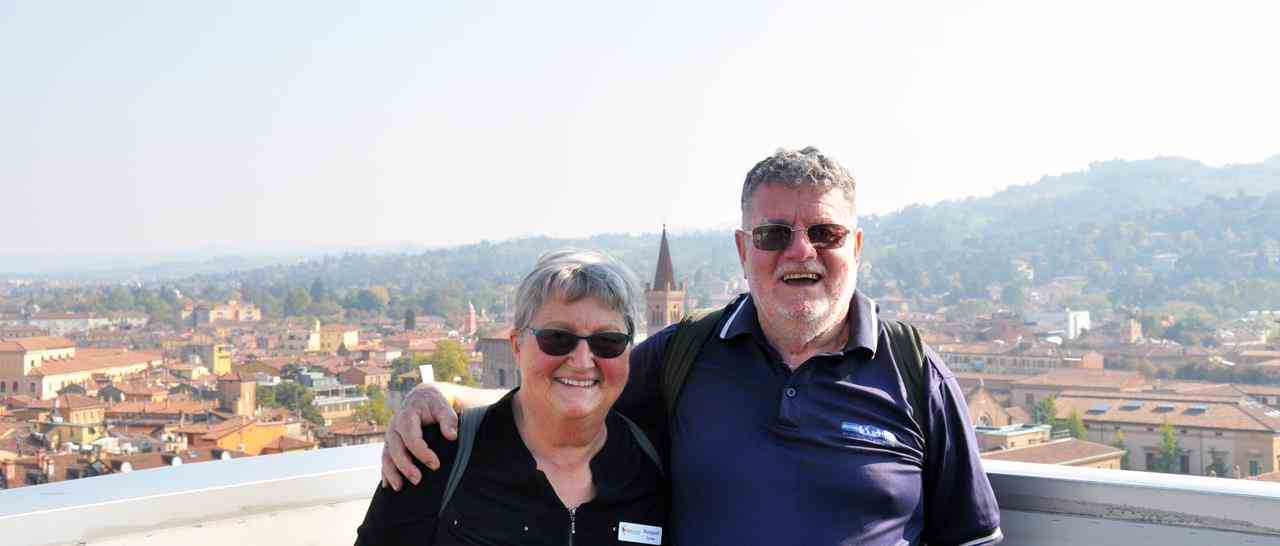
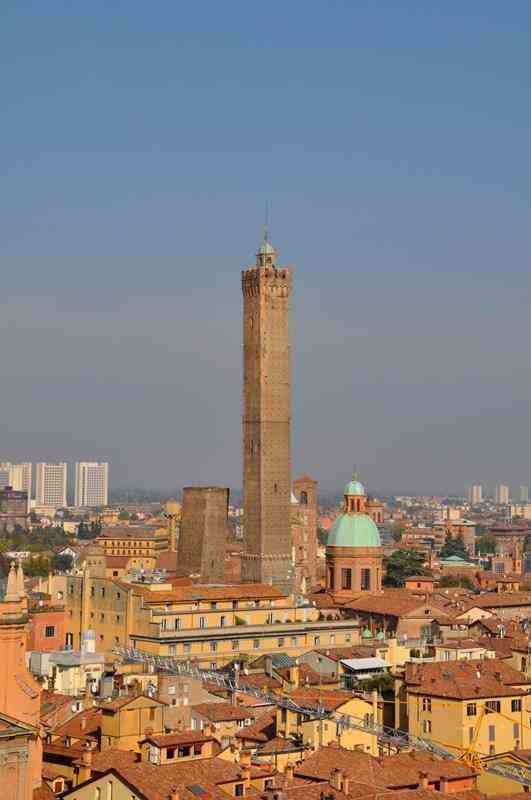
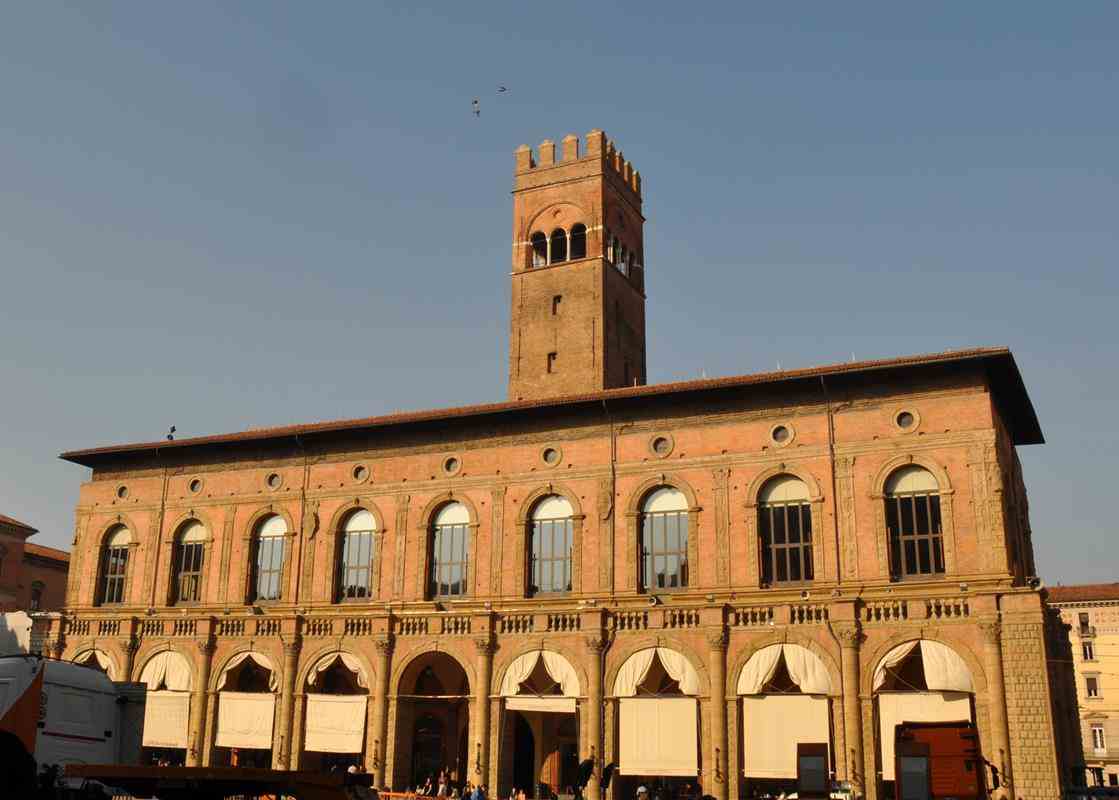
Poggi Museum
The Palazzo Poggi was built as the home of Alessandro Poggi and his brother the future Cardinal Giovanni Poggi.
The building was erected between 1549 and 1560.
In 1714 the Palazzo Poggi became the House of the Instituto dell Scienze of Bologna.
The Institute of Science was a model learning establishment in Europe during the Age of Enlightenment and a key part
of the University of Bologna.
The beautiful library of the university was built in 1744.
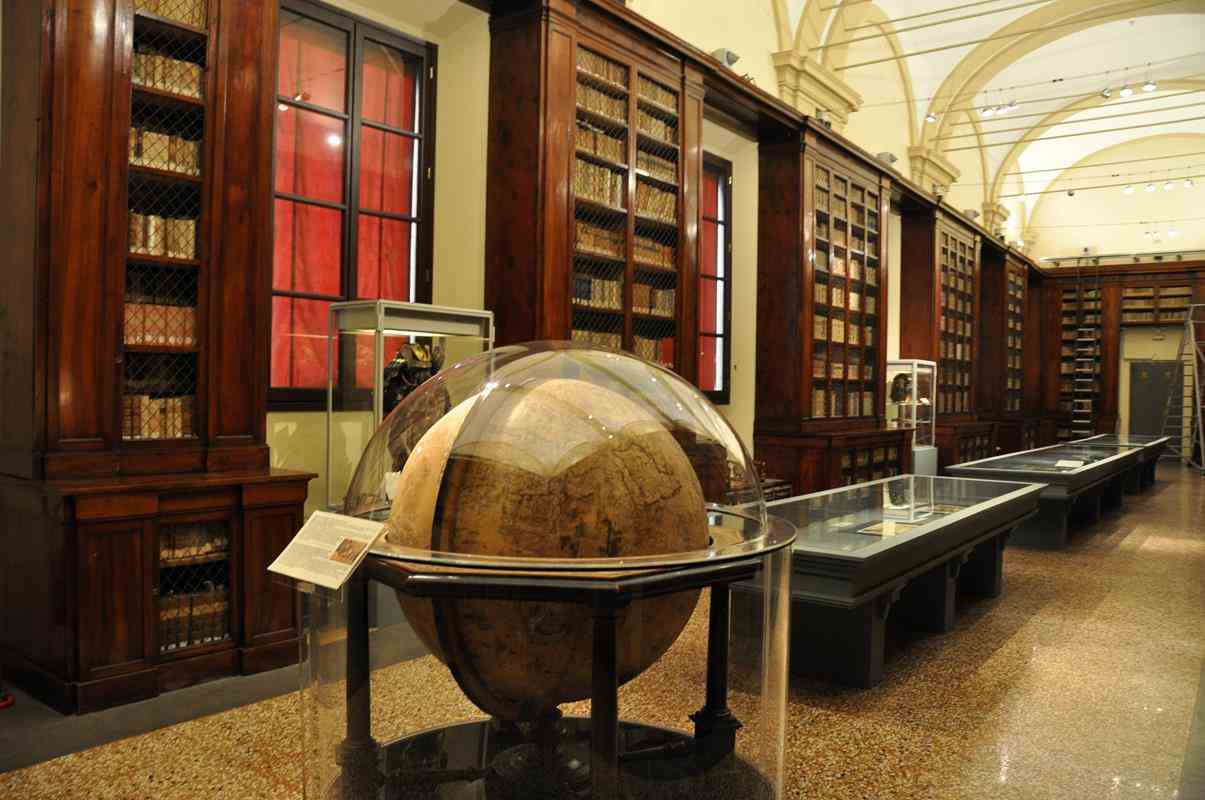
There was a large collection of wax models of difficult birth situations
that had been used as teaching aids in the Obstretic School of the University.
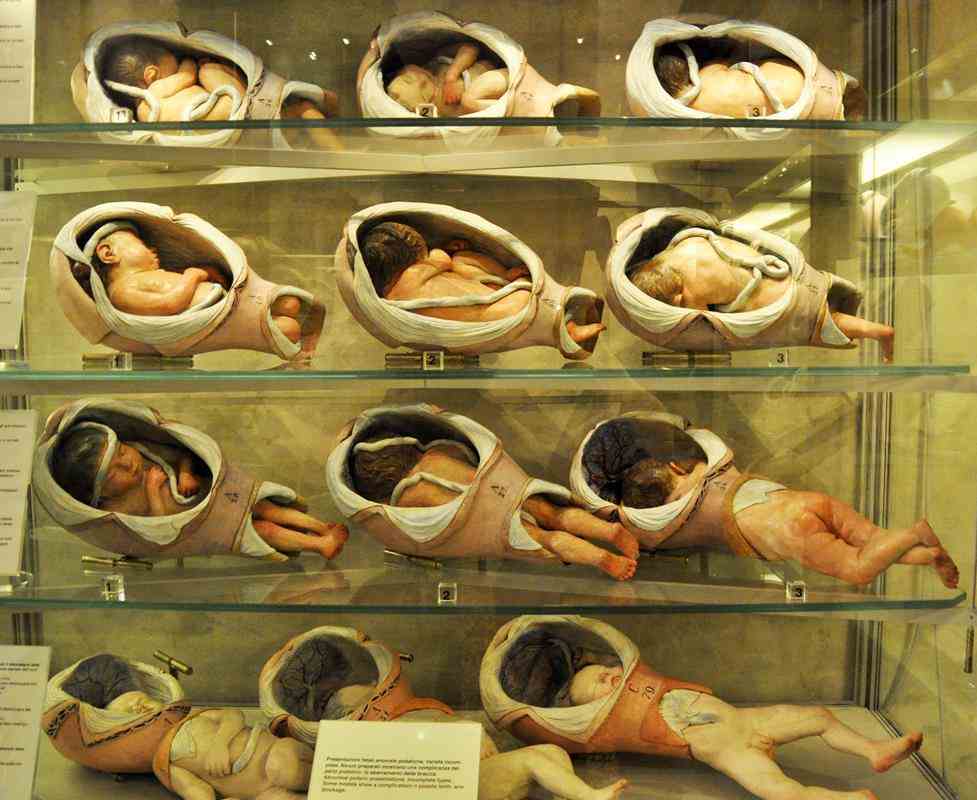
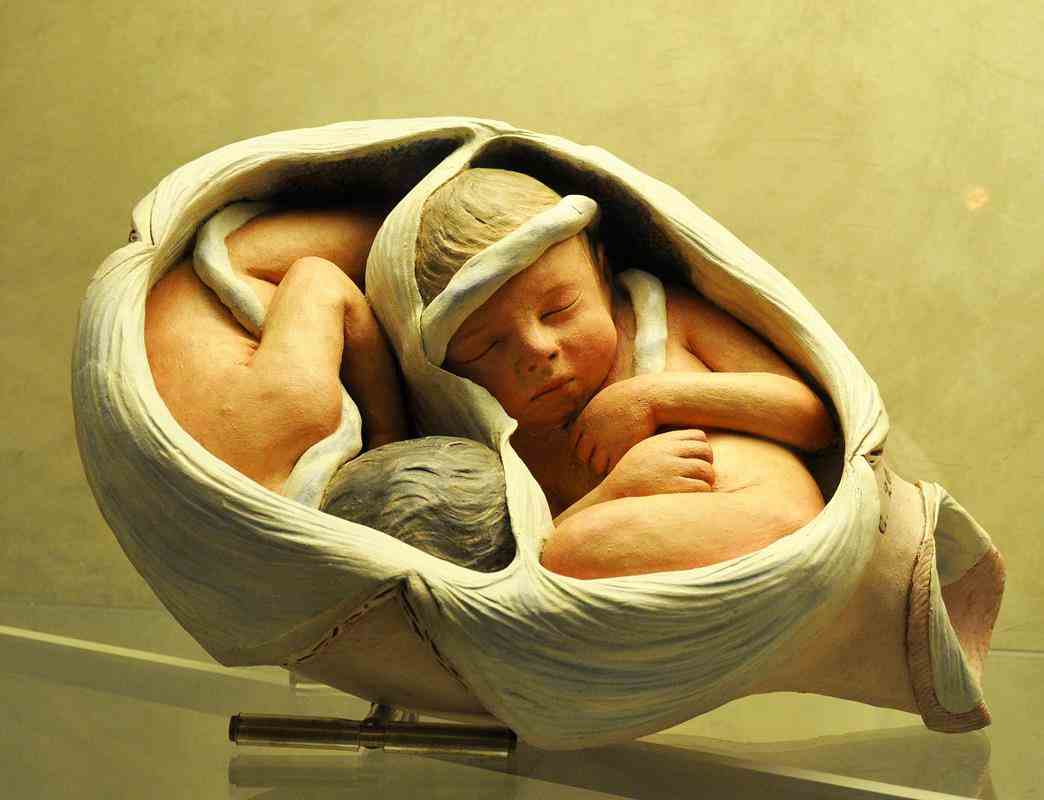
An Australian "Professor" in one of the ornate lecture rooms.
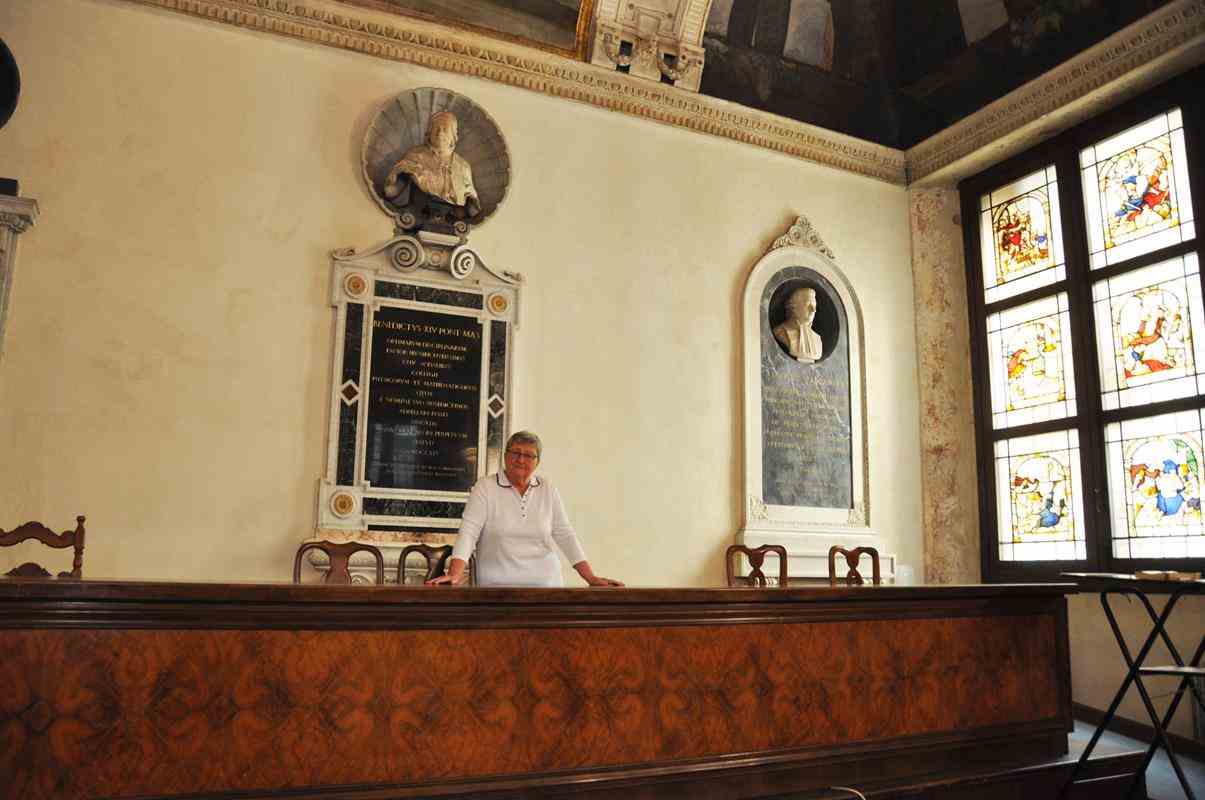
Ravenna
Ravenna, about an hours drive from Bologna, was the capital city of the Western Roman Empire from 402 until that empire collapsed in 476.
It then served as the capital of the Ostrogothic Kingdom until it was re-conquered in 540 by the Eastern Roman (Byzantine) Empire.
Afterwards, the city formed the centre of the Byzantine Exarchate of Ravenna until the invasion of the Lombards in 751,
after which it became the seat of the Kingdom of the Lombards.
Although an inland city, Ravenna is connected to the Adriatic Sea by the Candiano Canal.
It is known for its well-preserved late Roman and Byzantine architecture and mosaics, and has eight World Heritage Sites.
Basilica of Sant' Apollinare Nuovo - Ravenna
The Basilica of Sant' Apollinare Nuovo was erected by Ostrogoth King Theodoric the Great as his palace chapel during the first quarter of the 6th century.
This Arian church was originally dedicated in 504 AD to "Christ the Redeemer".
It was reconsecrated in 561 AD, under the rule of the Byzantine emperor Justinian I, under the new name "Sanctus Martinus in Coelo Aureo"
("Saint Martin in Golden Heaven").Suppressing the Arian cult, the church was dedicated to Saint Martin of Tours, a foe of Arianism.
According to legend, Pope Gregory the Great ordered that the mosaics in the church be blackened, as their golden glory distracted worshipers from their prayers.
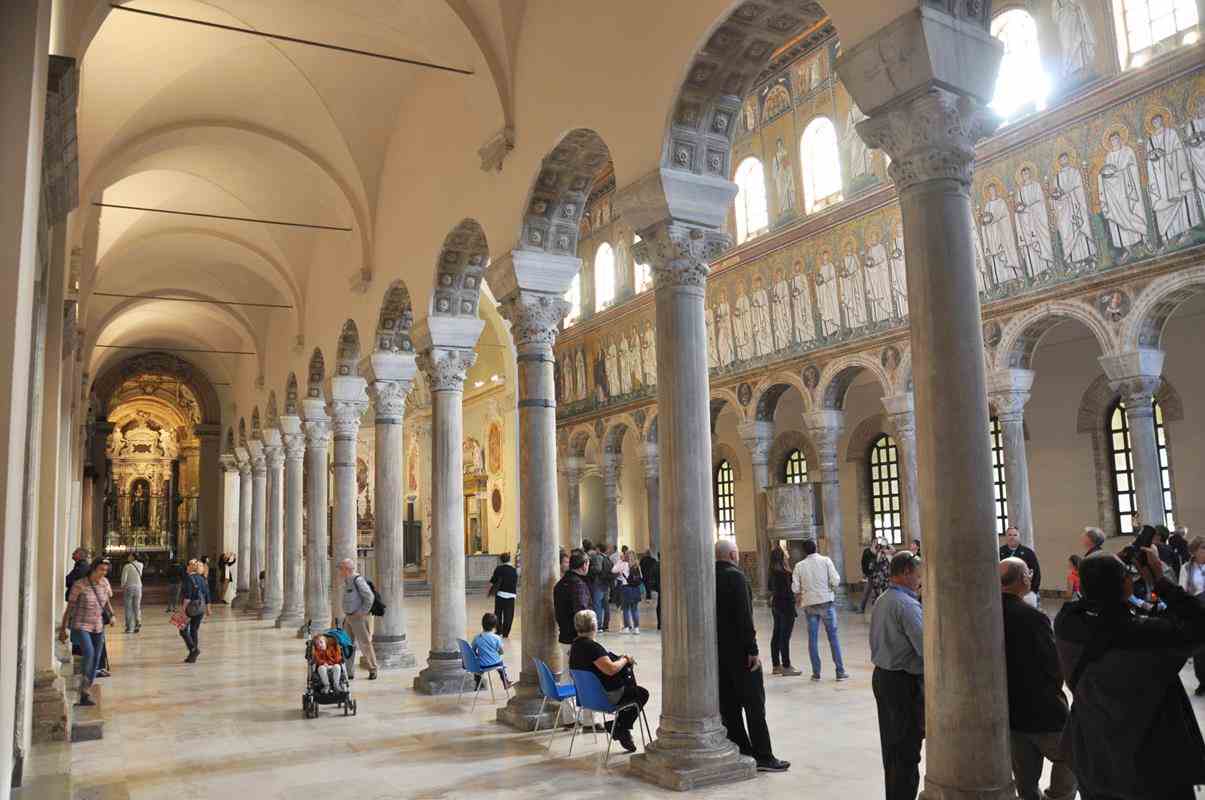
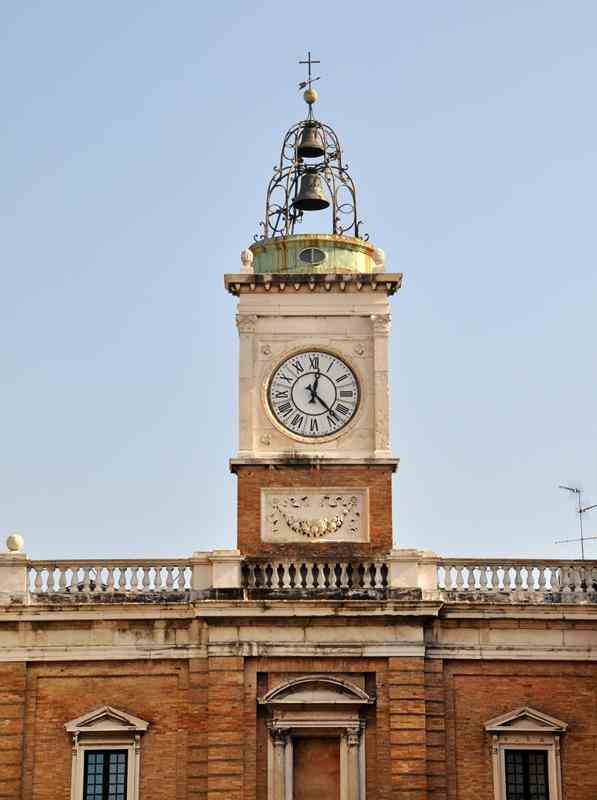
Basilica di San Vitale - Ravenna
The Basilica has an octagonal plan. The building combines Roman elements (the dome, shape of doorways, and stepped towers)
with Byzantine elements (polygonal apse, capitals, narrow bricks), and an early example of flying buttresses.
The church is most famous for its wealth of Byzantine mosaics, the largest and best preserved outside of Constantinople
The church was begun by Bishop Ecclesius in 526, when Ravenna was under the rule of the Ostrogoths
and completed by the 27th Bishop of Ravenna, Maximian, in 547 preceding the Byzantine Exarchate of Ravenna.
The church is of extreme importance in Byzantine art, as it is the only major church from the period of the Emperor Justinian I
to survive virtually intact to the present day.
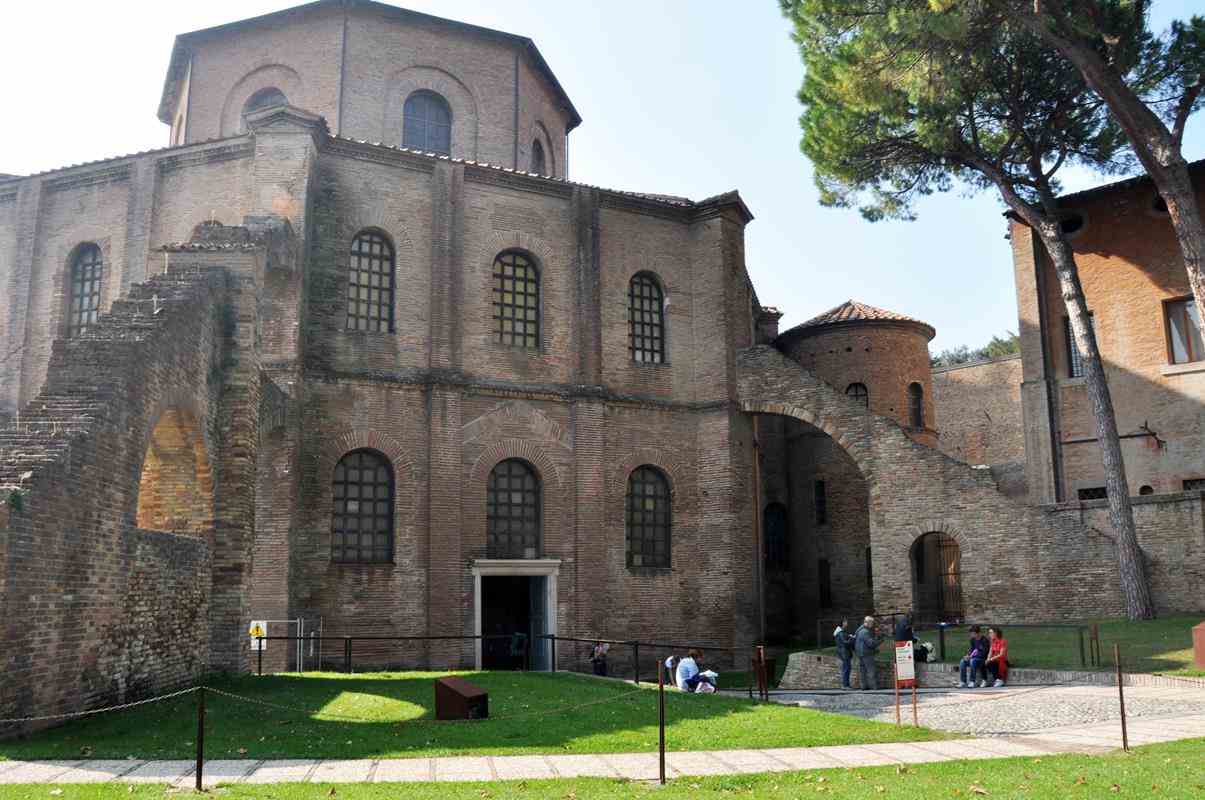
There were lots and lots of stunning mosaics inside the Basilica.
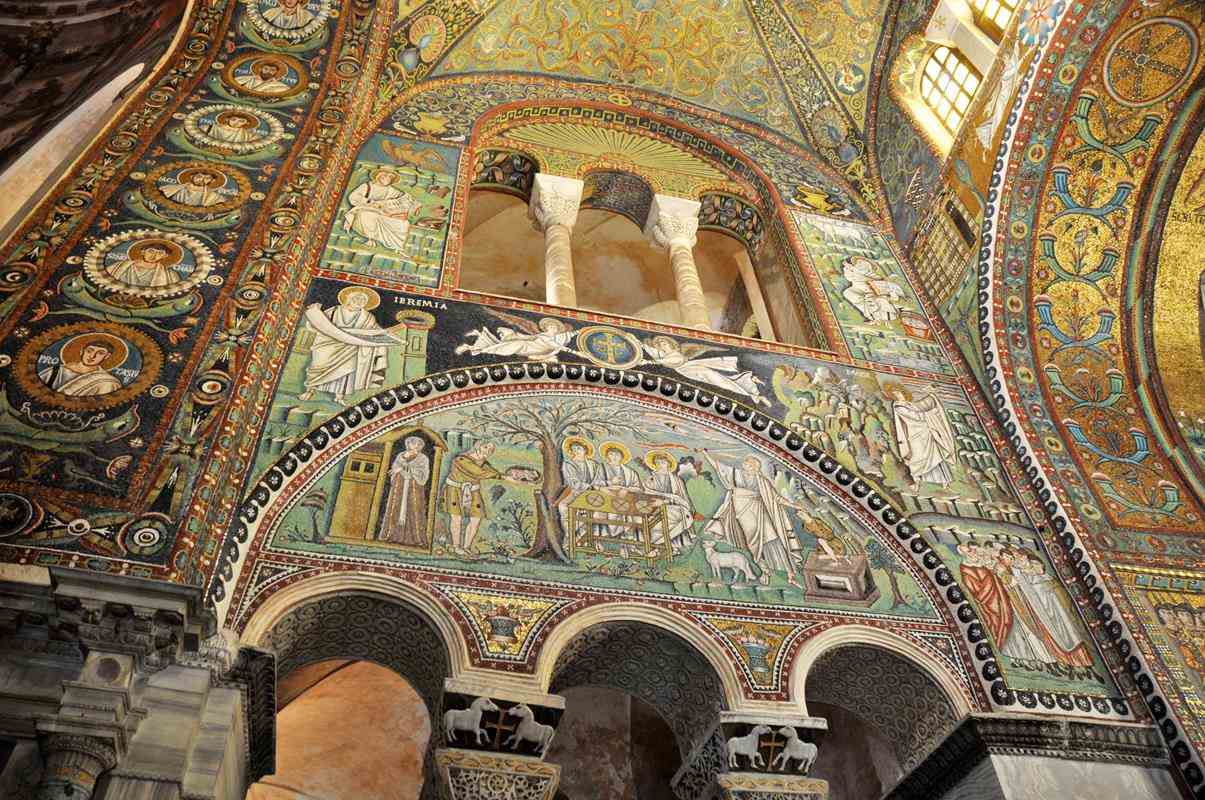
Battisero delgi Orthodossi
The Baptistery of Neon (Battistero Neoniano) is the most ancient monument remaining in the city.
The octagonal brick structure was partly erected on the site of Roman baths at the end of the 4th century.
It is also called the Orthodox Baptistery.
The original floor is now some 3 metres underground, so the proper structure and extent of the building can no longer be seen.
The octagonal design of the building, employed in virtually all Early Christian baptisteries,
symbolizes the seven days of the week plus the Day of the Resurrection and Eternal Life.
The Baptistery was part of the great Basilica which was destroyed in 1734.
Before you could enter the Basilicas or Cathedrals you had to be baptised.
Hence Baptisteries were built for this ceremony.
It is not known at what time the baptistery became absorbed into the Basilica.
The change was made earlier in Rome than elsewhere.
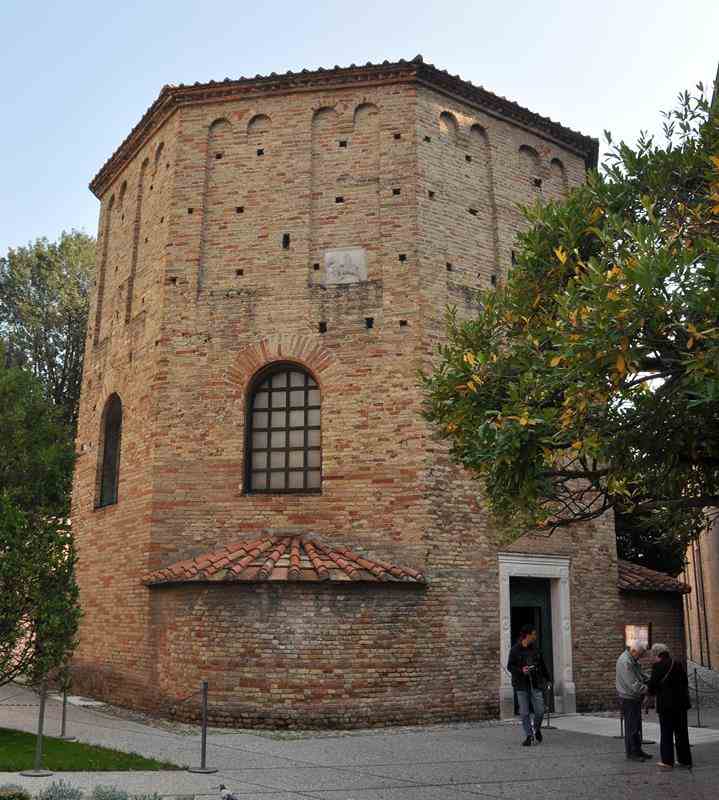
A pizza in Ravenna.
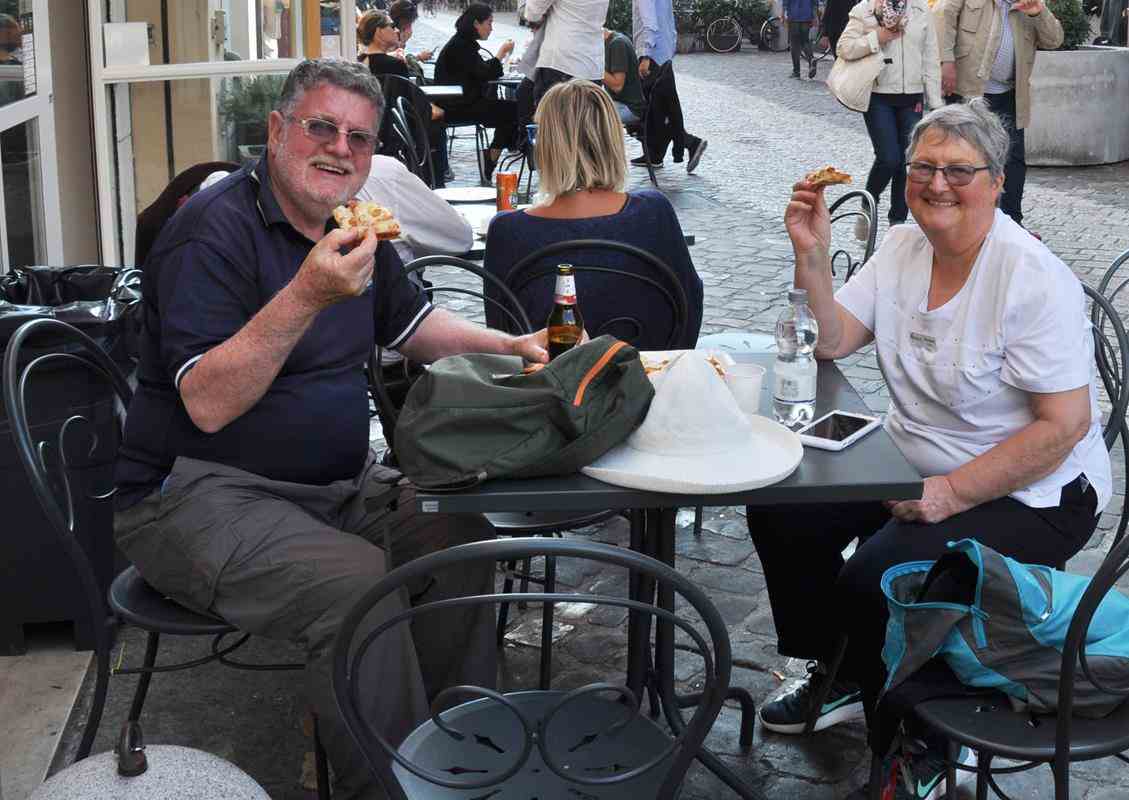
Pavarotti's House
Pavarotti built this house near Modena in 2005. He lived here until he died in 2007.
He acquired this small rural property in the mid-eighties. In keeping with his passion for horses, he built a riding school on the property.
From 1991, for 11 years, he hosted a prestigious show jumping competition attended by
the most famous show-jumpers of the international horse riding circuit.
The Luciano Pavarotti Foundation has transformed Casa Pavarotti into a museum
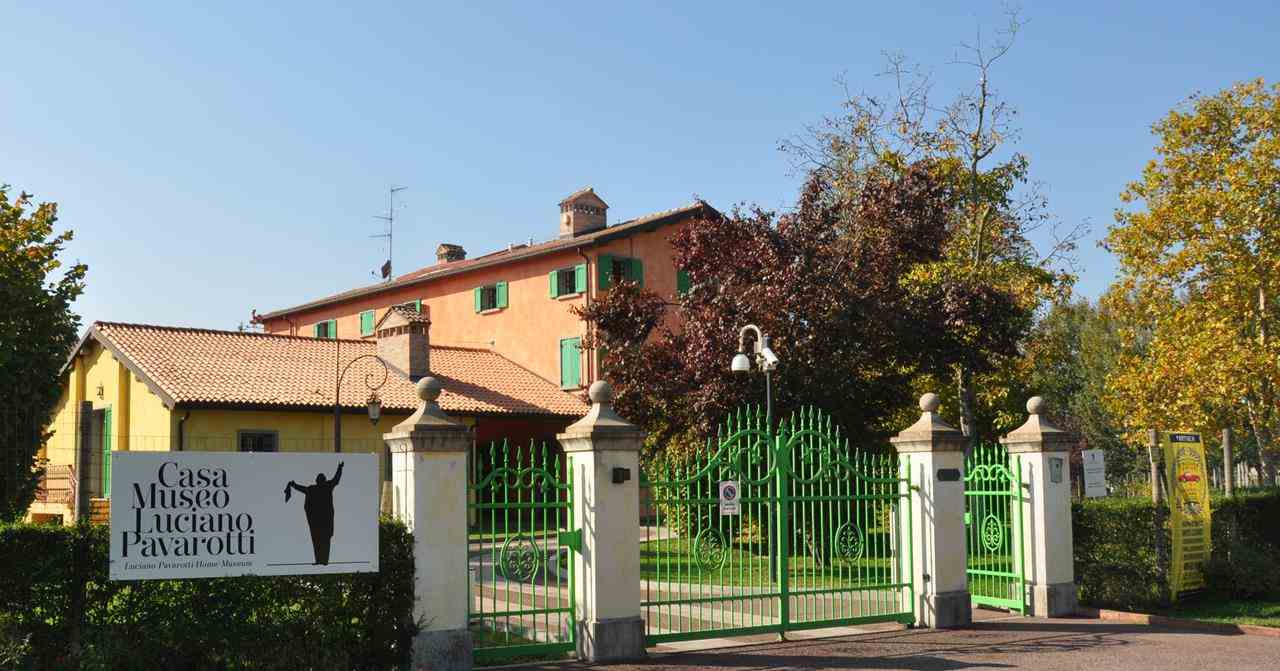
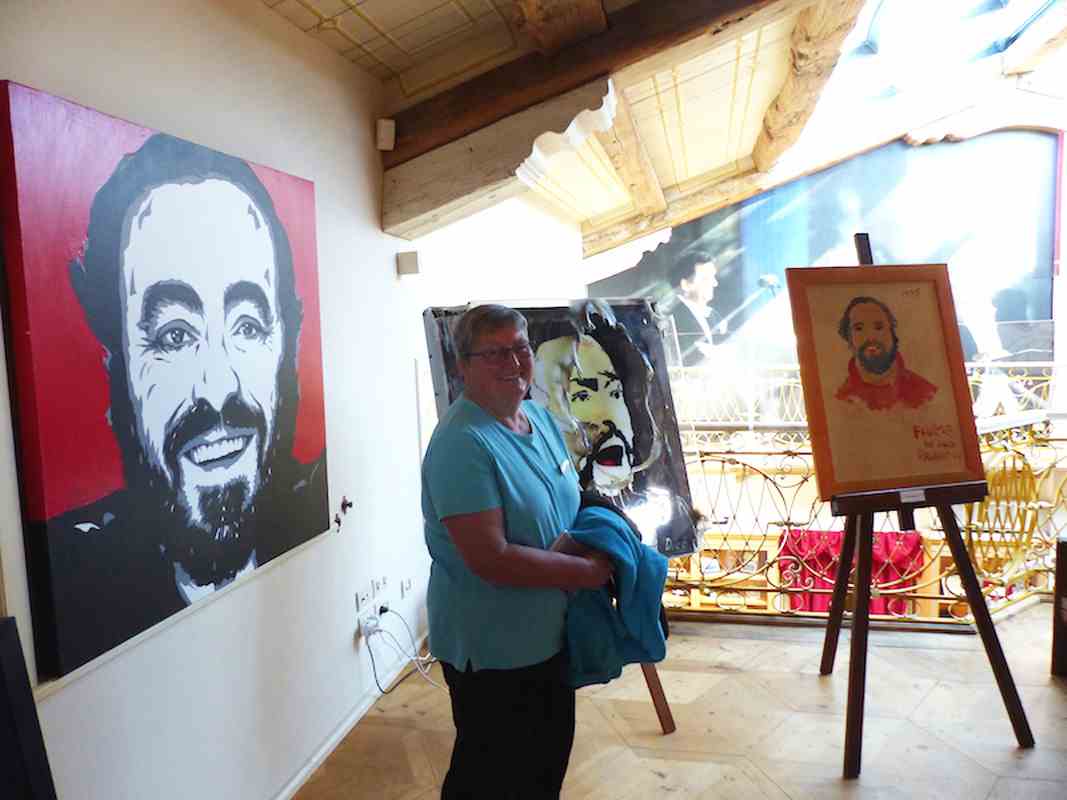
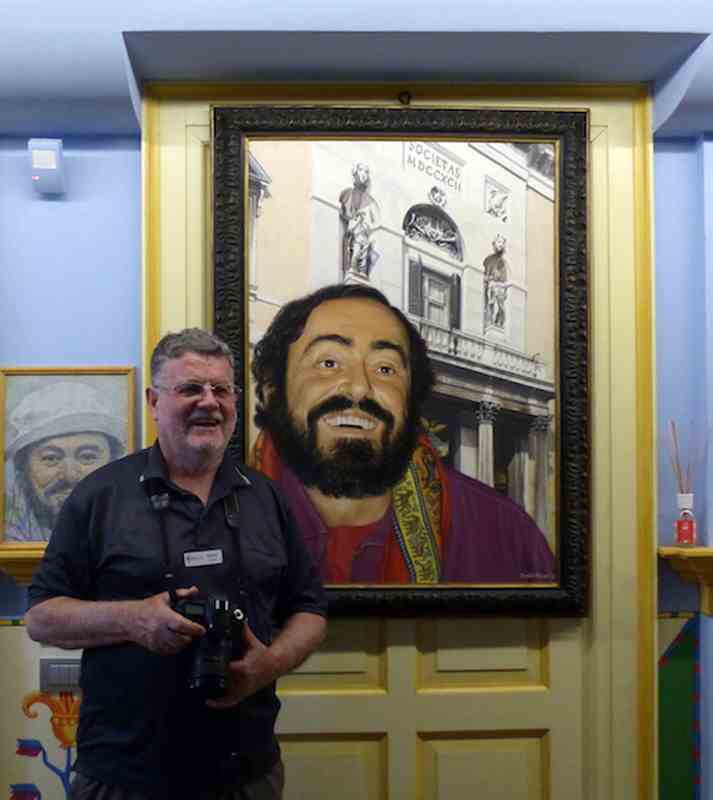
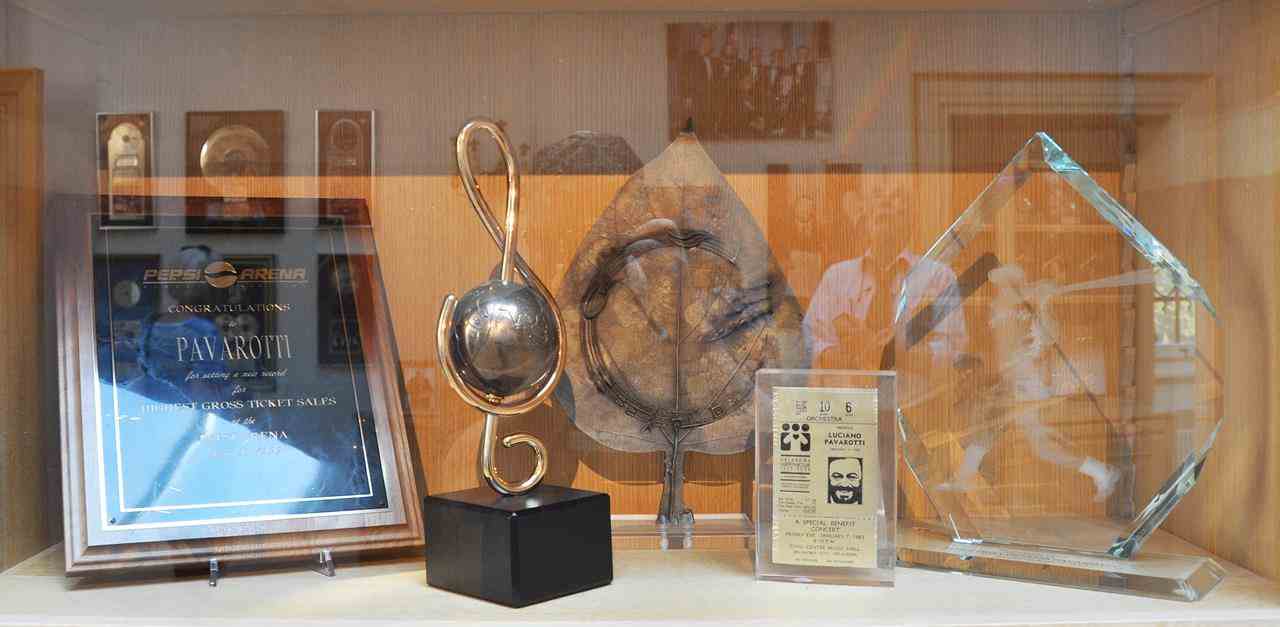
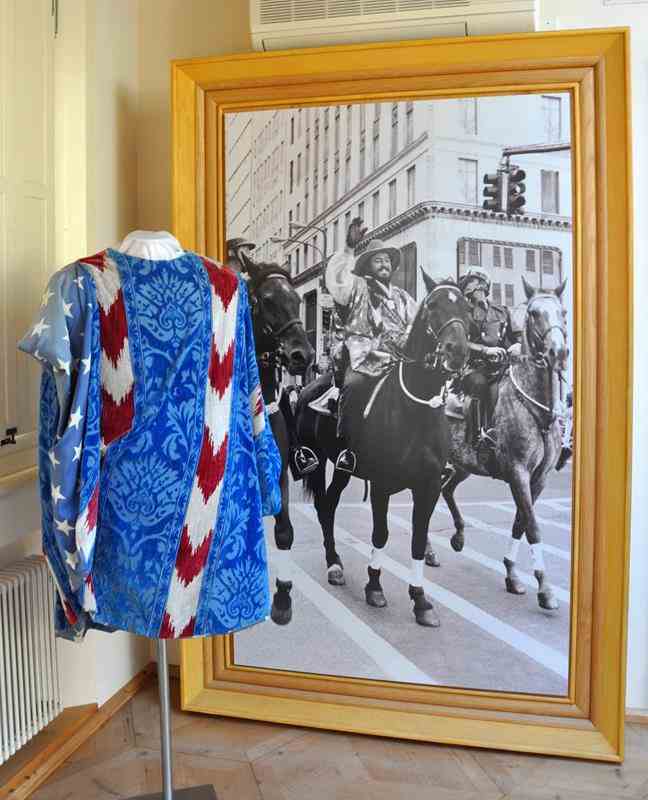
Reggio Emilia
After leaving Bologna we stayed 3 nights at Reggio Emilia, a small city about 75km away.
The Reggio Emilia approach to preschool and early primary education was developed after World War II
by psychologist Loris Malaguzzi and parents in the villages around the city and has now been adopted world-wide.
It is a pedagogy described as student-centered and constructivist that utilizes self-directed, experiential learning in relationship-driven environments.
The program is based on the principles of respect, responsibility, and community through exploration and discovery through a self-guided curriculum.
At its core is an assumption that children form their own personality during early years of development and are endowed with "a hundred languages",
through which they can express their ideas.
The aim of the Reggio approach is to teach children how to use these symbolic languages (e.g., painting, sculpting, drama) in everyday life
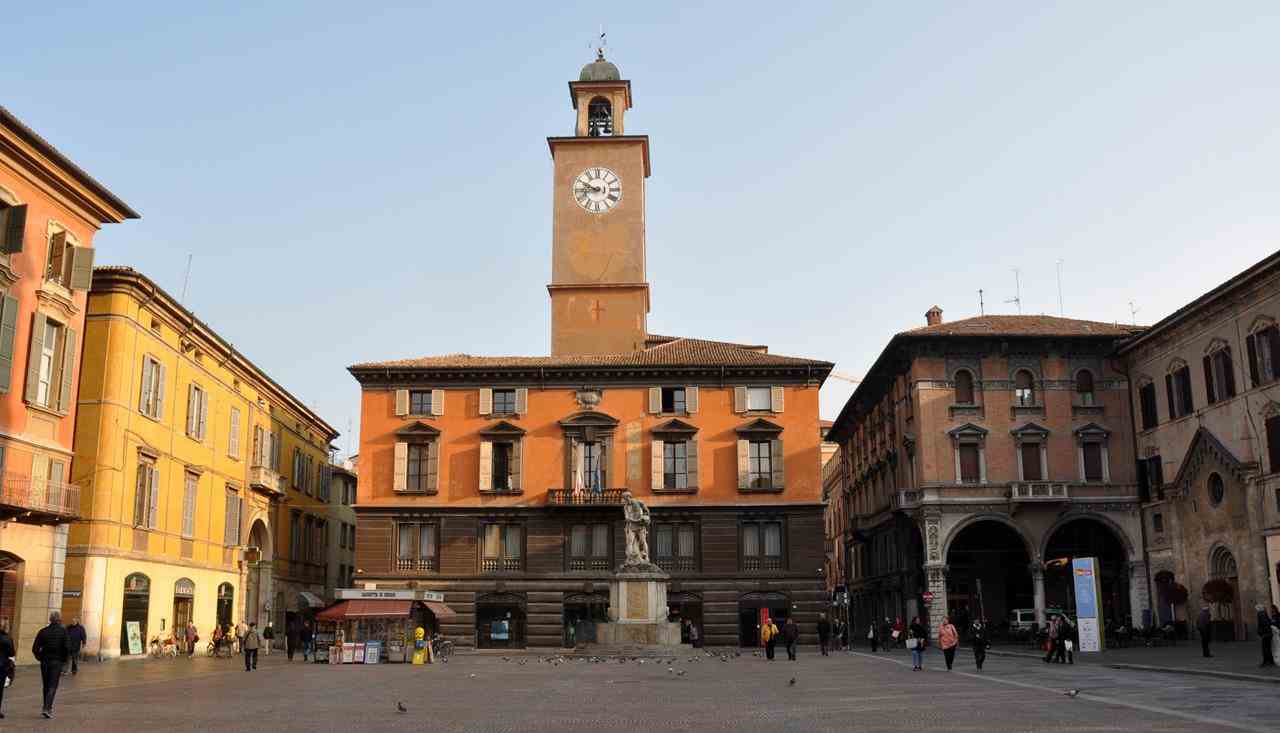
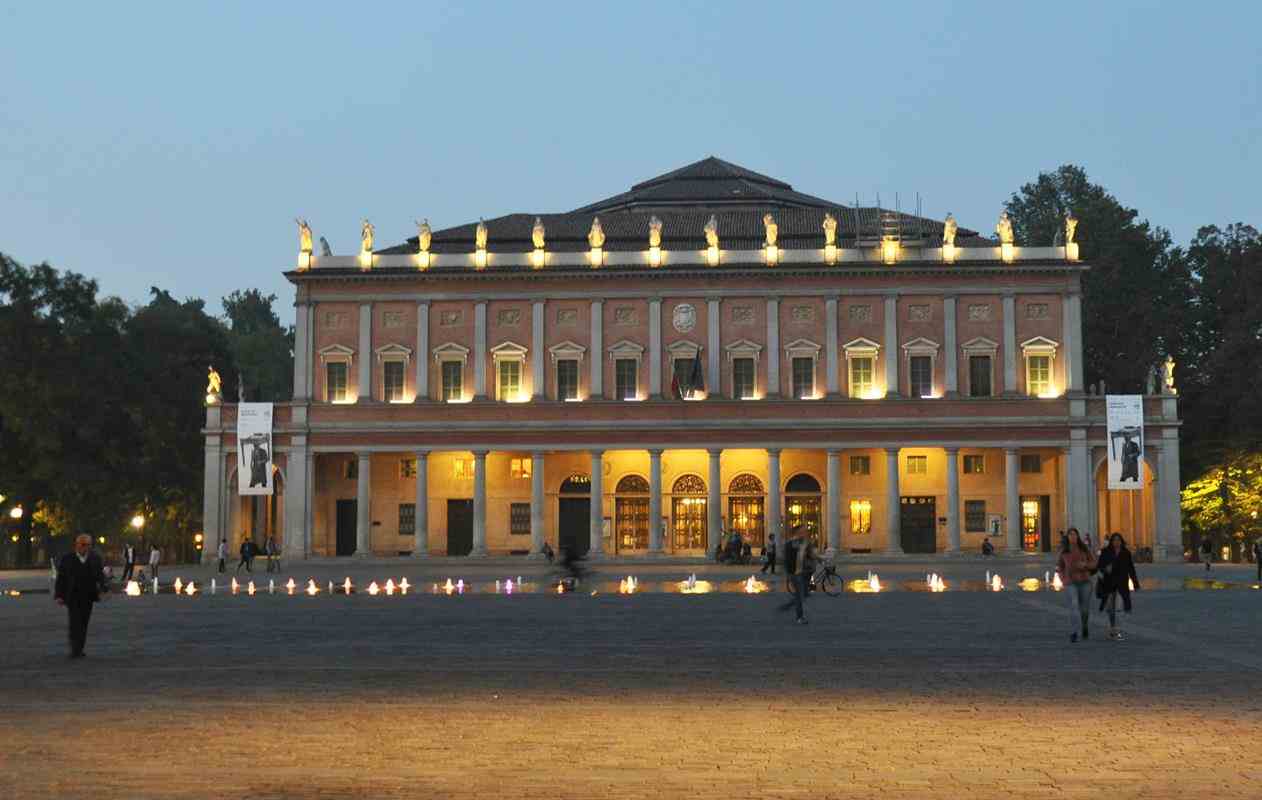

Cavazzone Vinegar Factory and Restaurant
We had an excursion to this vinegary in the undulating hills outside Reggio Emilia.
We were taken on a tour and given a talk about how they make high-quality balsamic vinegar.
After the tour we had a delicious 3-course meal in their restaurant.
We had many fine meals on this tour but this one was the best.
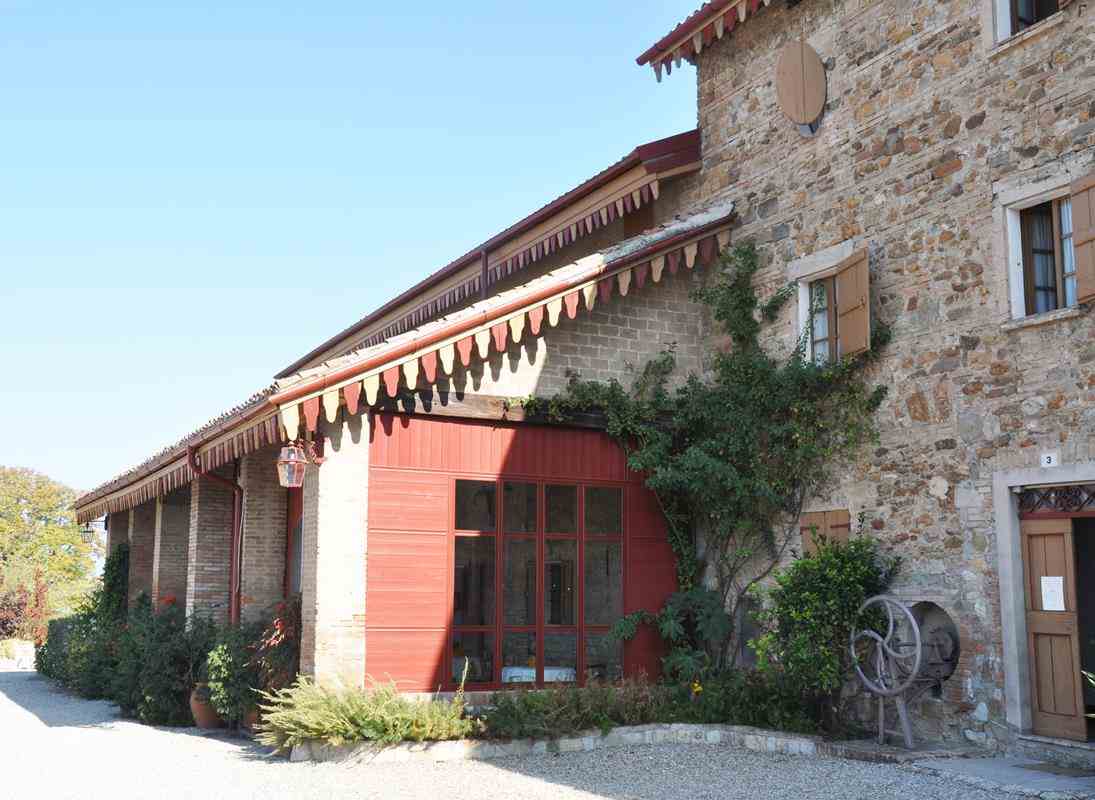
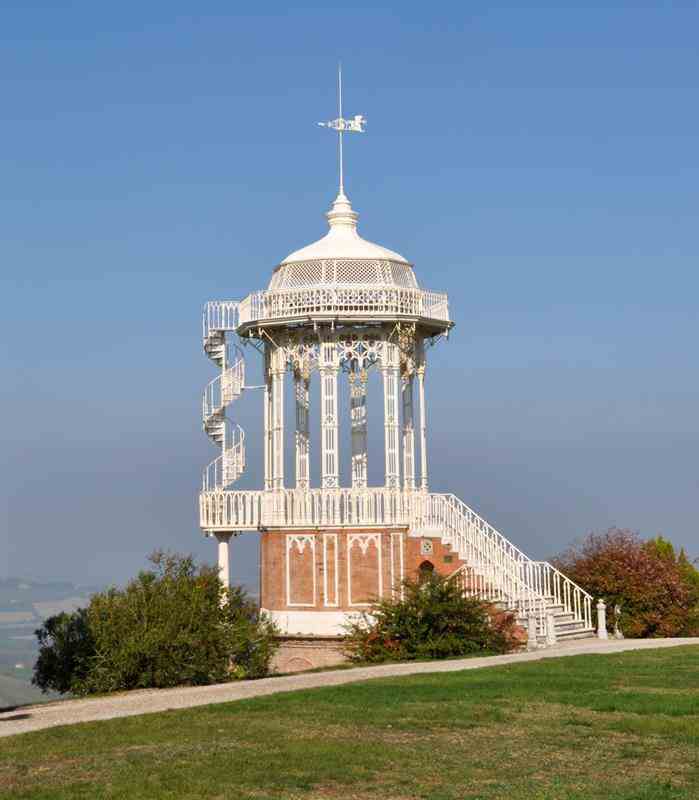
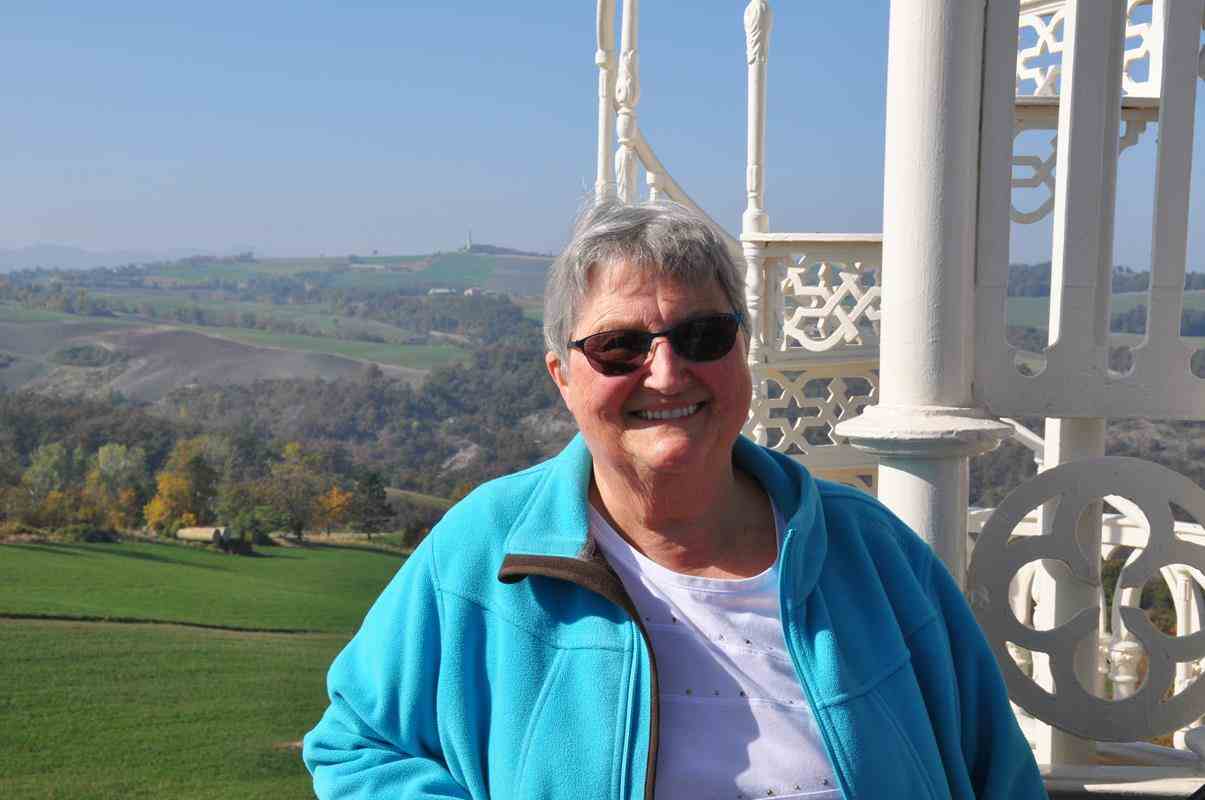
Sabbioneta
On our way from Reggio Emilia to Parma we stopped at Sabbioneta, a World Heritage town.
The main attraction in Sabbioneta is The Teatro all'antica ("Theatre in the style of the ancients"),
the first free-standing, purpose-built theatre in the modern world.
The theatre was constructed between 1588 and 1590.
Up until this time theatres were built as part of palace complexes.
The Duke Vespasiano-Gonzaga wanted to turn his tiny Ducal seat into an idealized classical city and
the theatre was to be a sign of a civilized society that the Duke was trying to create.
The Teatro all'antica is the second-oldest surviving indoor theatre in the world (after the Teatro Olimpico in Vicenza),
and is, along with that theatre and the Teatro Farnese in Parma, one of only three Renaissance theatres still in existence.
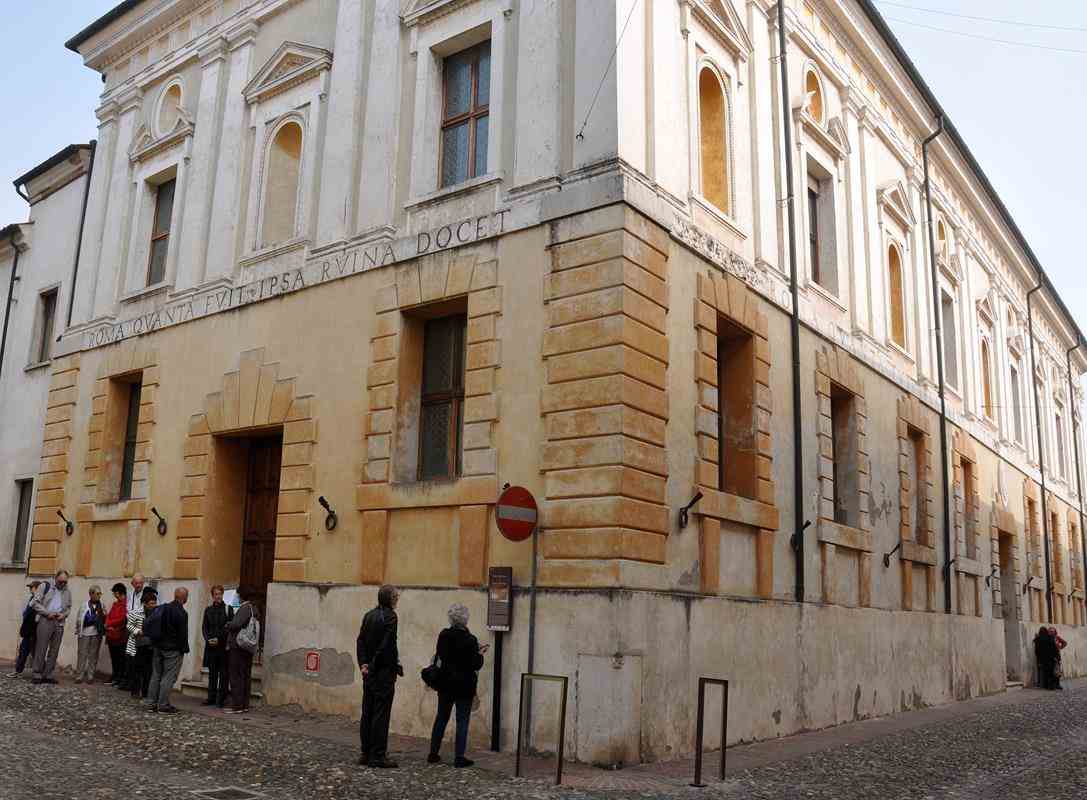
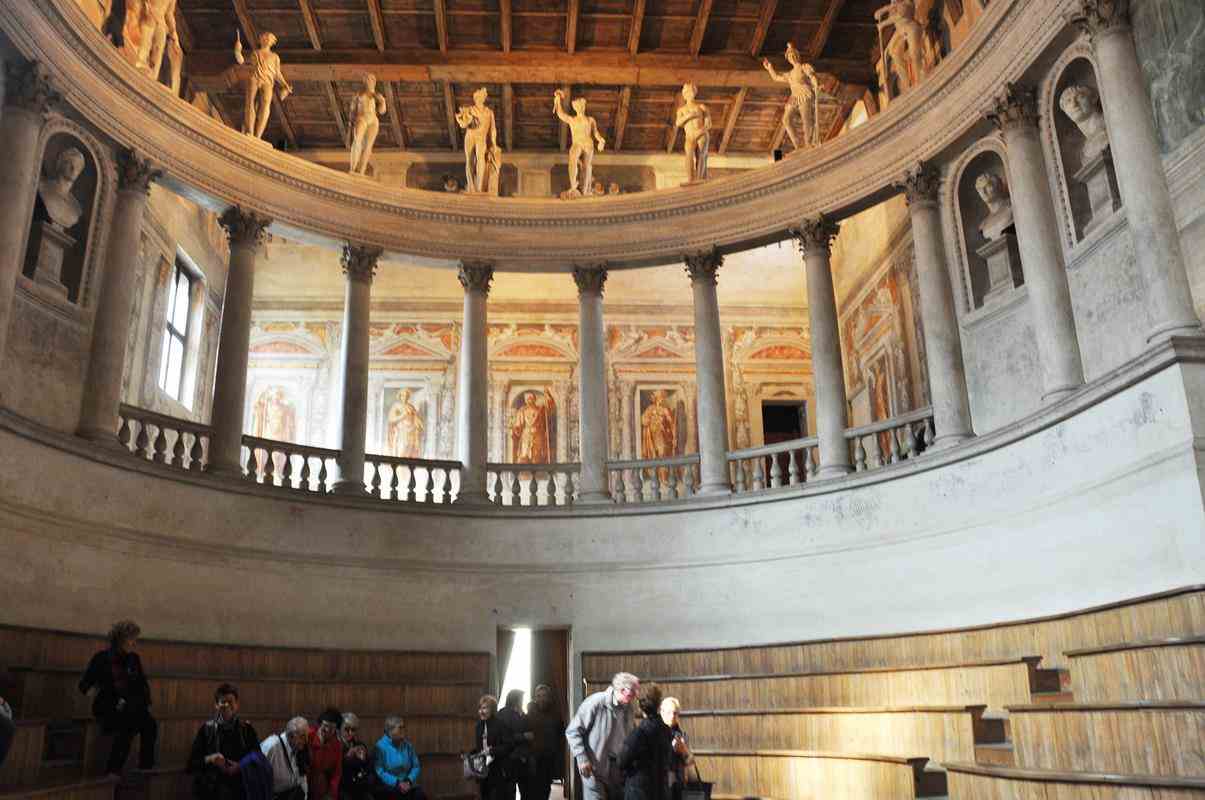
Parma
We stayed 5 nights in Parma. Most of the Verdi Festival operas and concerts were taking place here.
The city is famous for its prosciutto (ham), cheese, architecture, music and surrounding countryside.
It is home to the University of Parma, one of the oldest universities in the world.
The name Parma means circular shield.
Parma Opera House
We saw 3 shows here, a Verdi Concert and 2 Verdi operas - Jerusalem and Falstaff.
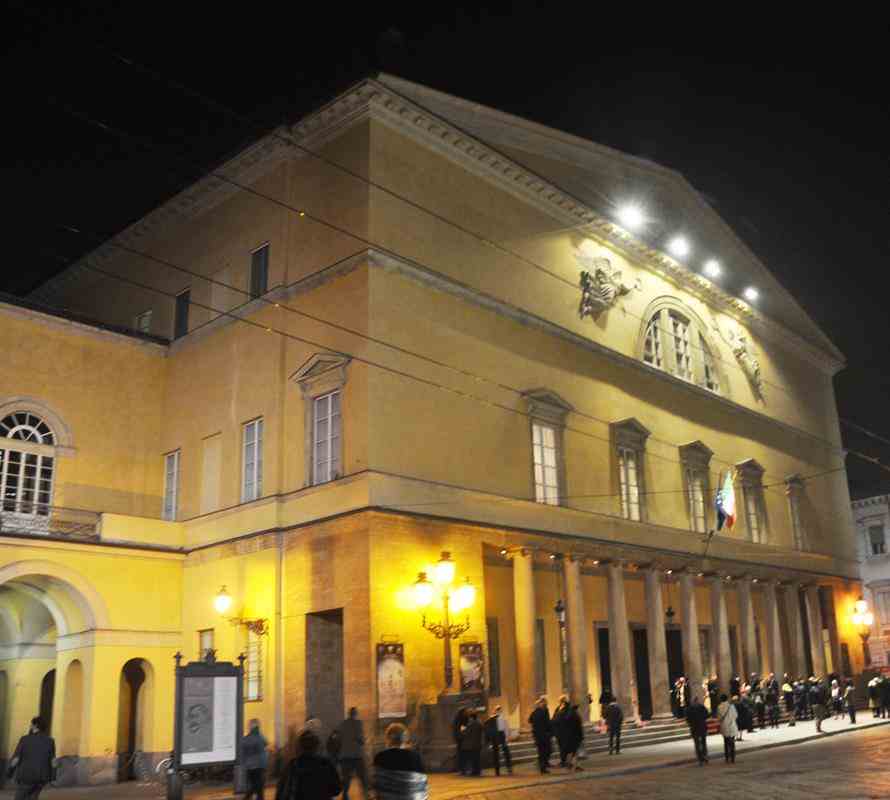
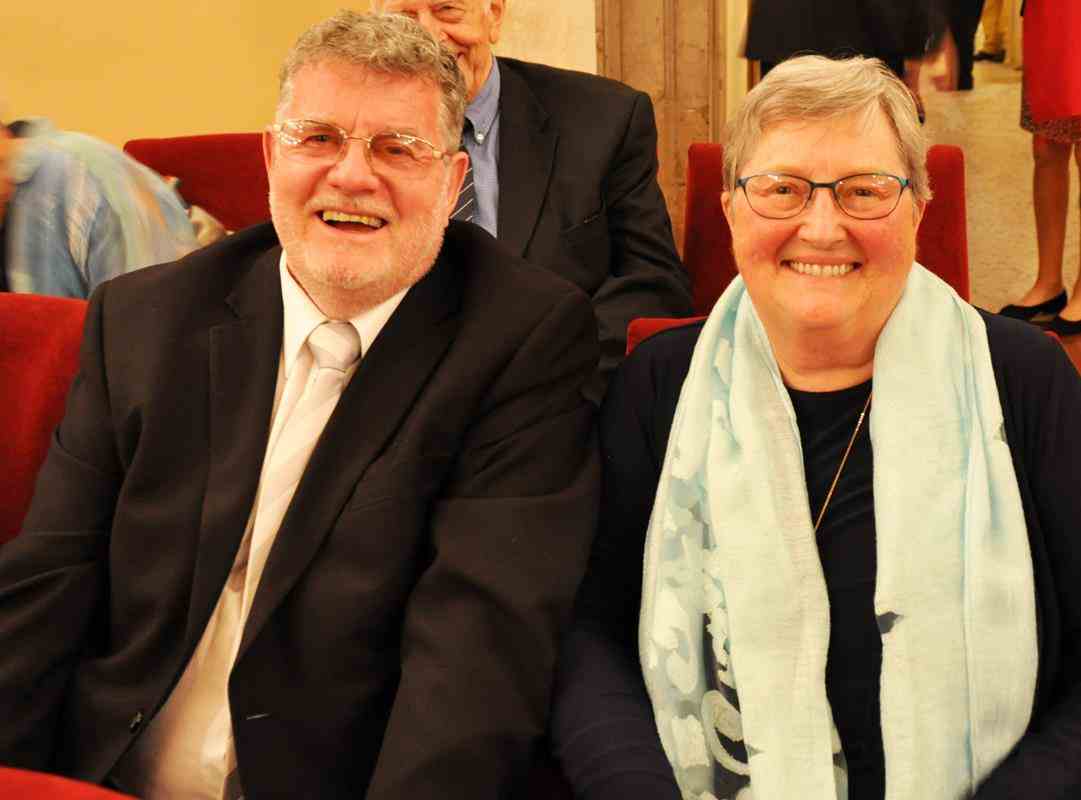
9:35pm - the clock in the opera house.
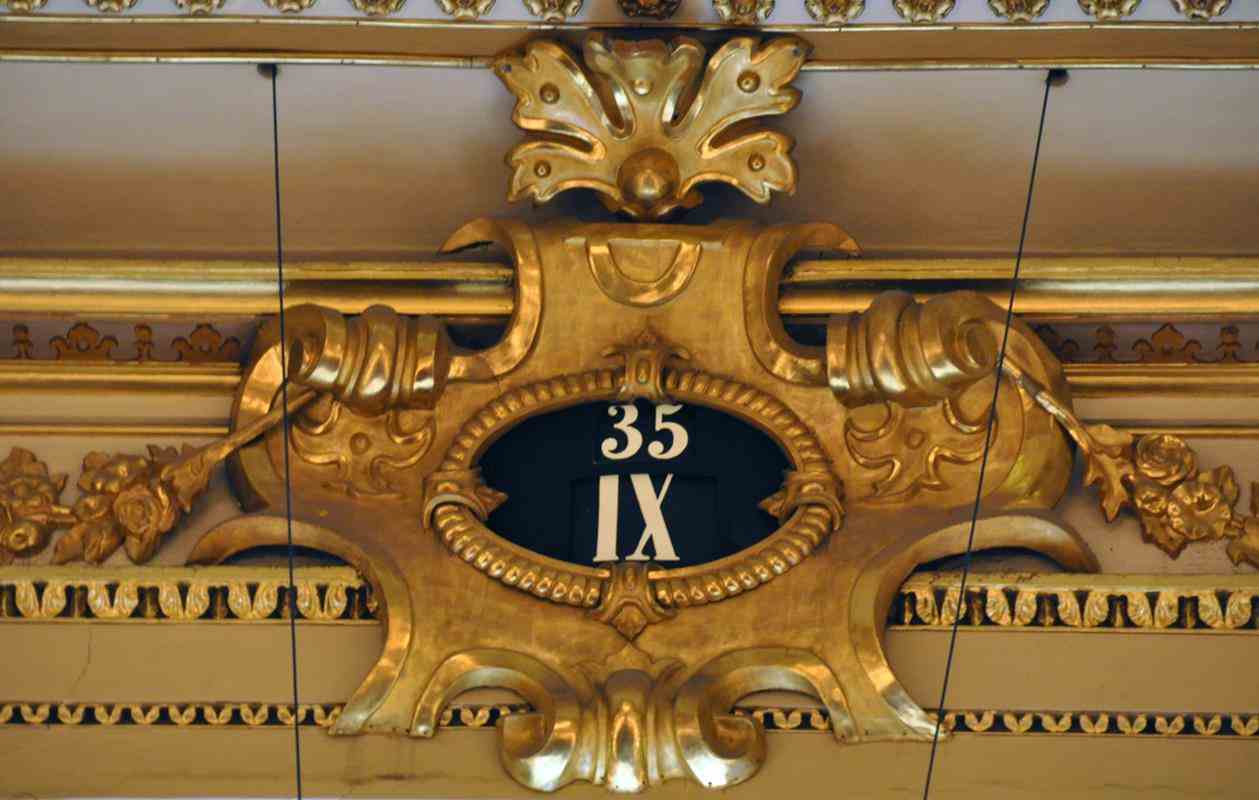
Baptistery of Parma Cathedral
This striking octagonal building was commissioned in 1196.
Before you could enter the Cathedral you had to be baptised.
Hence Baptisteries were built for this ceremony.
It is not known at what time the Baptistery became absorbed into the Basilica.
The octagonal design of the building, employed in virtually all Early Christian baptisteries,
symbolizes the seven days of the week plus the Day of the Resurrection and Eternal Life.
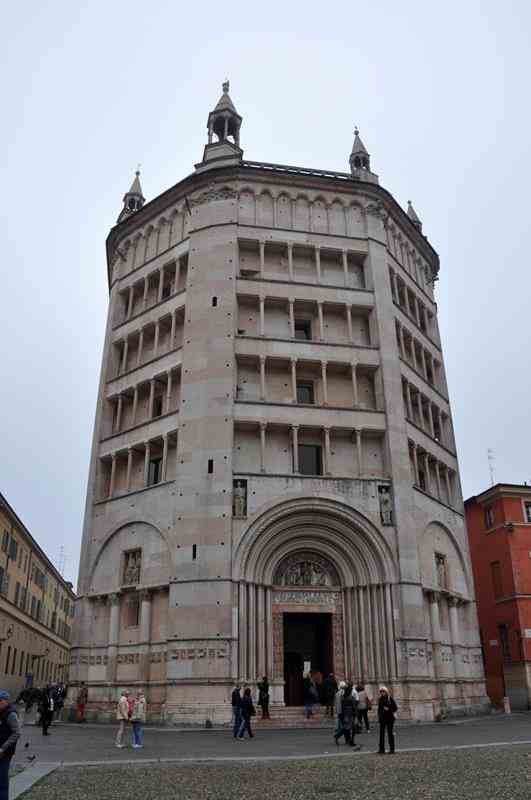
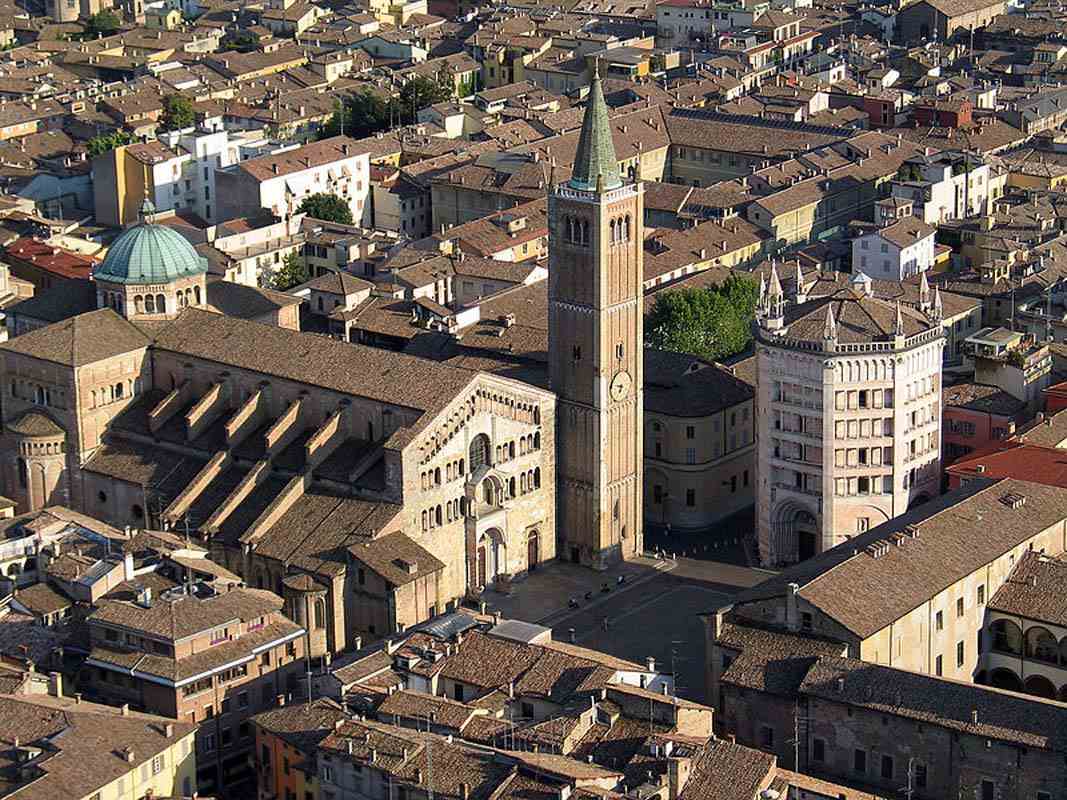
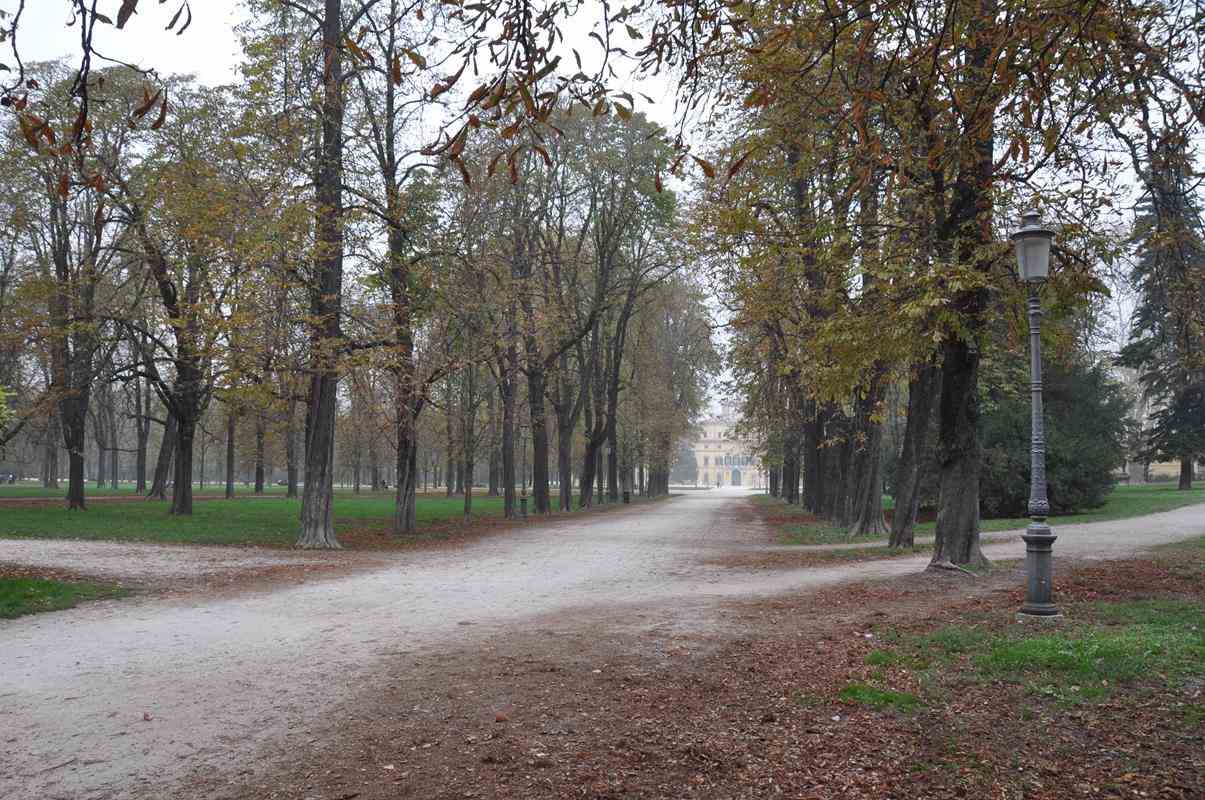
Busseto
Not far from Parma, Busseto is a small town that has many associations with Verdi.
He was born in the nearby village of Le Roncole in 1813 and he moved to the town in 1824.
The Rocca dei Marchesi Pallavicino on the Piazza Giuseppe Verdi in Busseto.
From the 13th century, the “rocca” or “fortress” was the family’s palace; it is now the city hall after being acquired by the municipality in 1856.
Teatro Giuseppe Verdi (the Giuseppe Verdi Theatre) is a small opera house located in a wing of the former fortress.
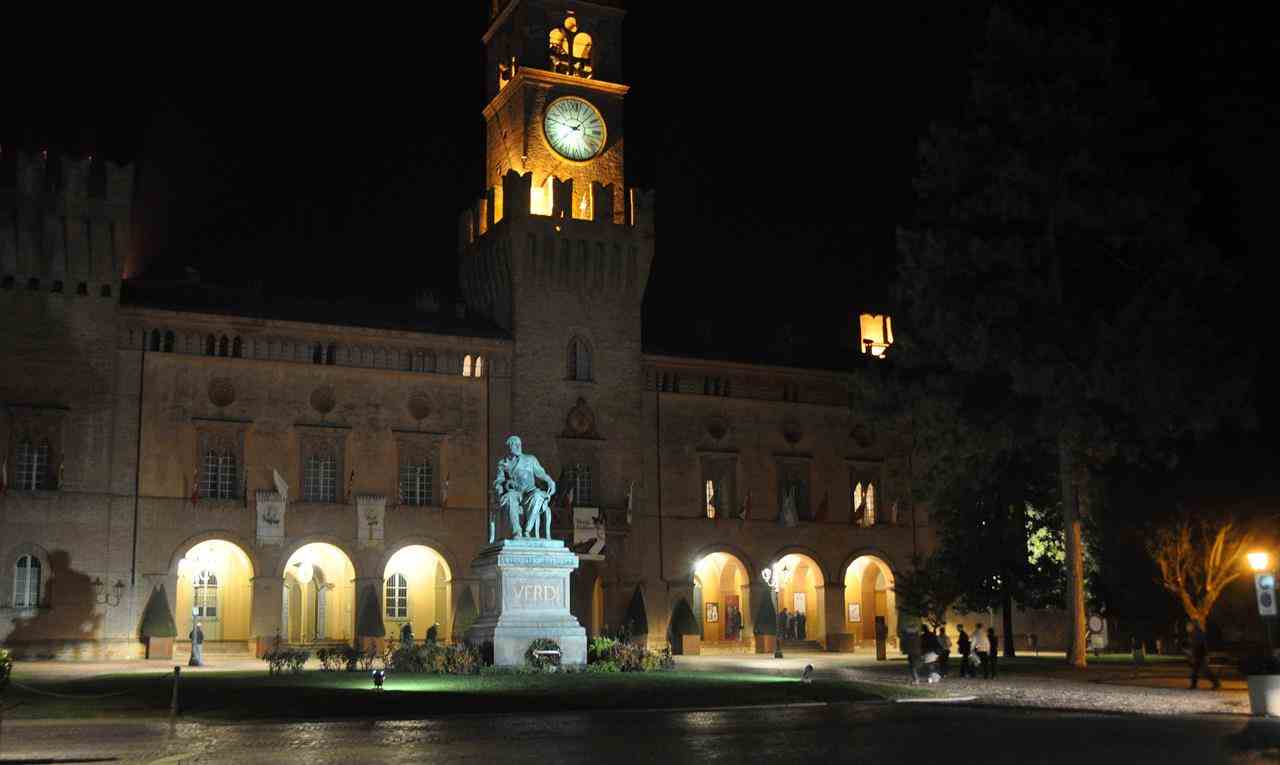
Although Verdi opposed its construction (it would be “too expensive and useless in the future”, he said)
and is reputed never to have set foot in it,
he did contribute 10,000 lire towards the construction and maintained his own box.
The Theatre opened in 1868 when 2 Verdi operas were presented - Rigoletto and Un Ballo in Maschera.
Verdi did not attend even though he lived only two miles away at his home, the Villa Verdi, in the village of Sant’Agata.
We saw a Verdi concert here.
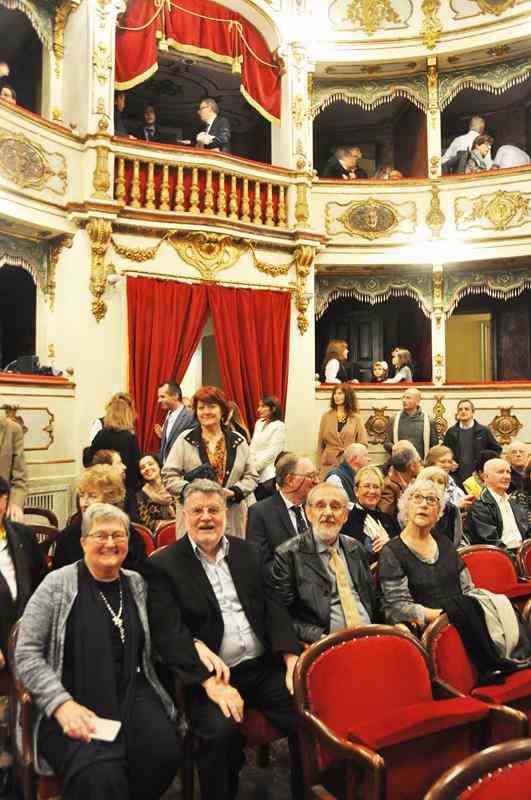
Nearby is Le Roncole where Verdi was born.
Verdi was the first child of Carlo Giuseppe Verdi (1785–1867) and Luigia Uttini (1787–1851).
The baptismal register, prepared on 11 October 1813, lists Verdi as being "born yesterday",
but since days were often considered to begin at sunset, this could have meant either 9 or 10 October.
Following his mother, Verdi always celebrated his birthday on 9 October, the day he himself believed he was born.
From the age of four, Verdi was given private lessons in Latin and Italian by the village schoolmaster, Baistrocchi, and at six he attended the local school.
After learning to play the organ, he showed so much interest in music that his parents finally provided him with a spinet.
Verdi's gift for music was already apparent by 1820–21 when he began his association with this church, serving in the choir,
acting as an altar boy for a while, and taking organ lessons. After Baistrocchi's death, Verdi, at the age of eight, became the official paid organist.
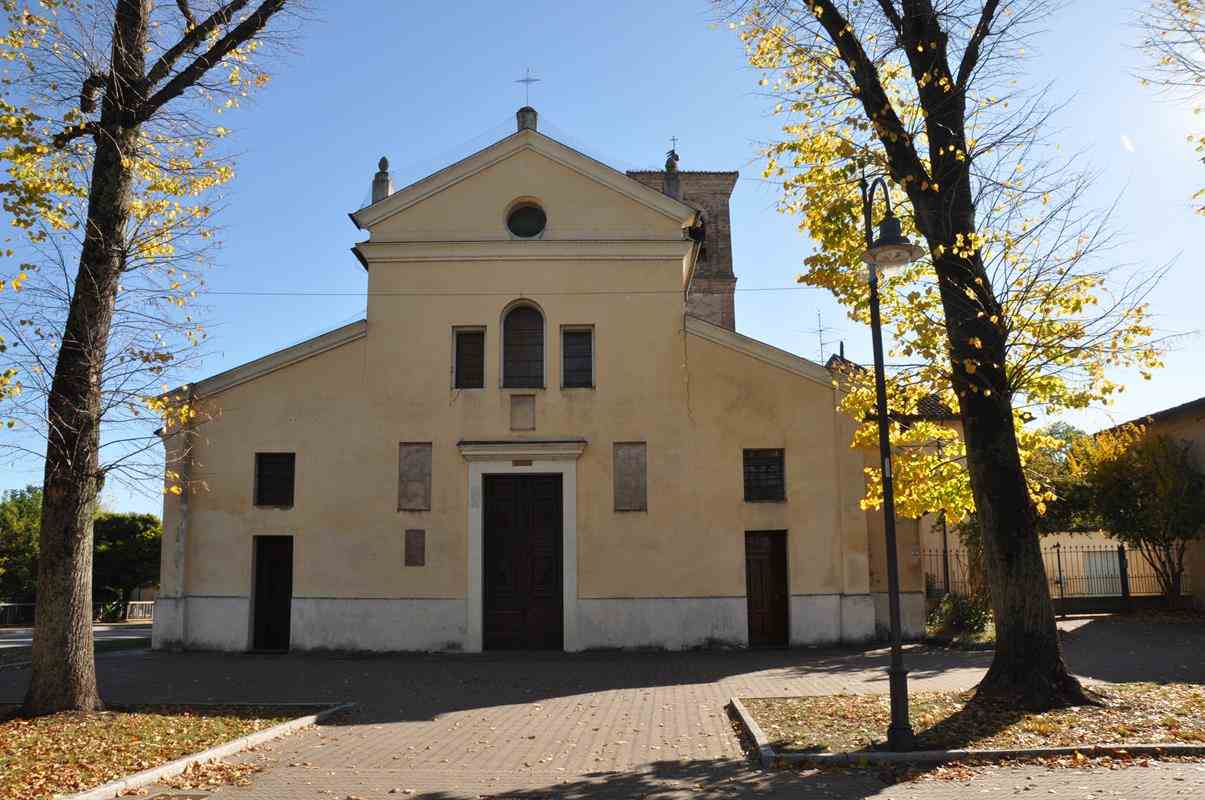
Villa Verdi - Sant'Agata
Villa Verdi is the house that composer Giuseppe Verdi owned from 1848 to the end of his life in 1901. It is located in the village of Sant'Agata,
less than 3km from the village of Le Roncole, where he was born in 1813, and the town of Busseto where he lived from 1824.
After buying the estate on which he began to build his house in 1848 and, after various stops and starts, it was completed in 1880.
Originally, the house was occupied by his parents, but, after the death of his mother, his father returned to Busseto.
Verdi and Giuseppina Strepponi, the opera singer with whom he lived prior to their 1859 marriage, moved into the Villa in 1851.
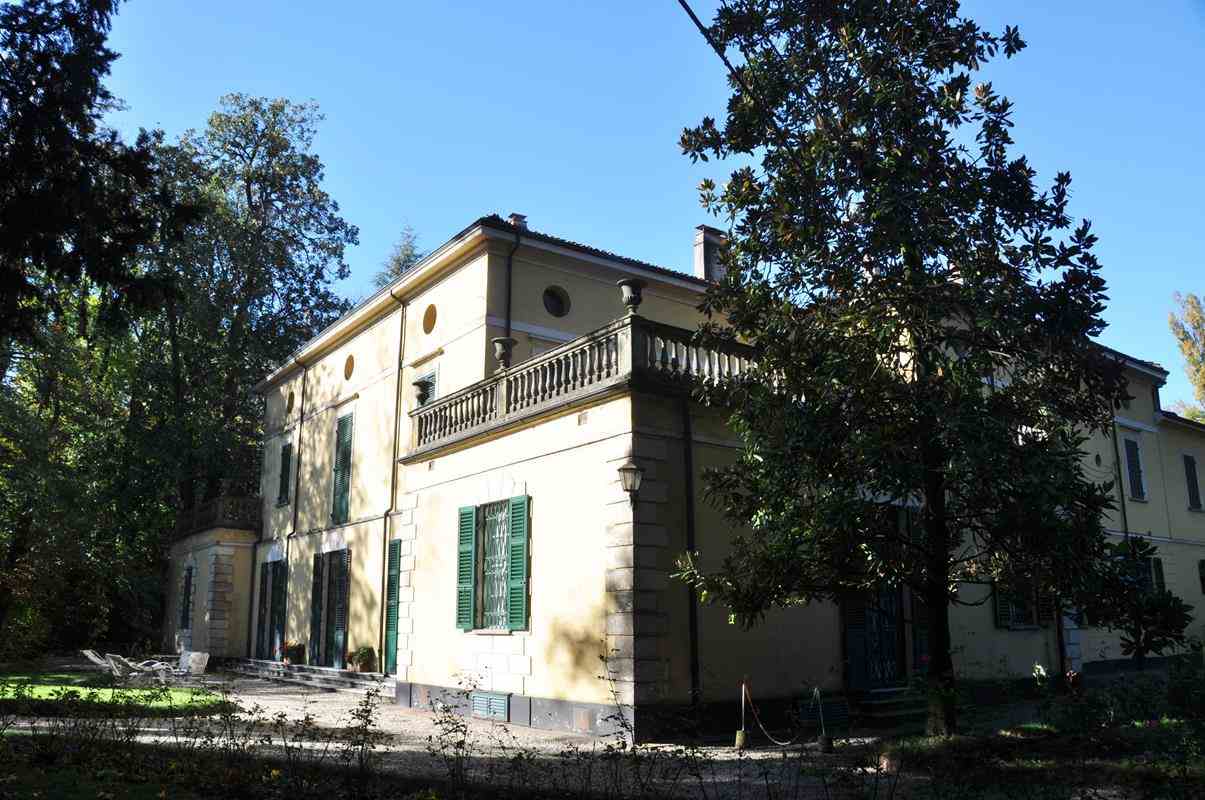

Cremona
On our way from Parma to Milan we visited Cremona.
Cremona is especially noted for its musical history and traditions, including some of the earliest and most renowned makers of stringed instruments.
Antonio Stradivari and many others made their famous violins and other stringed instruments here.
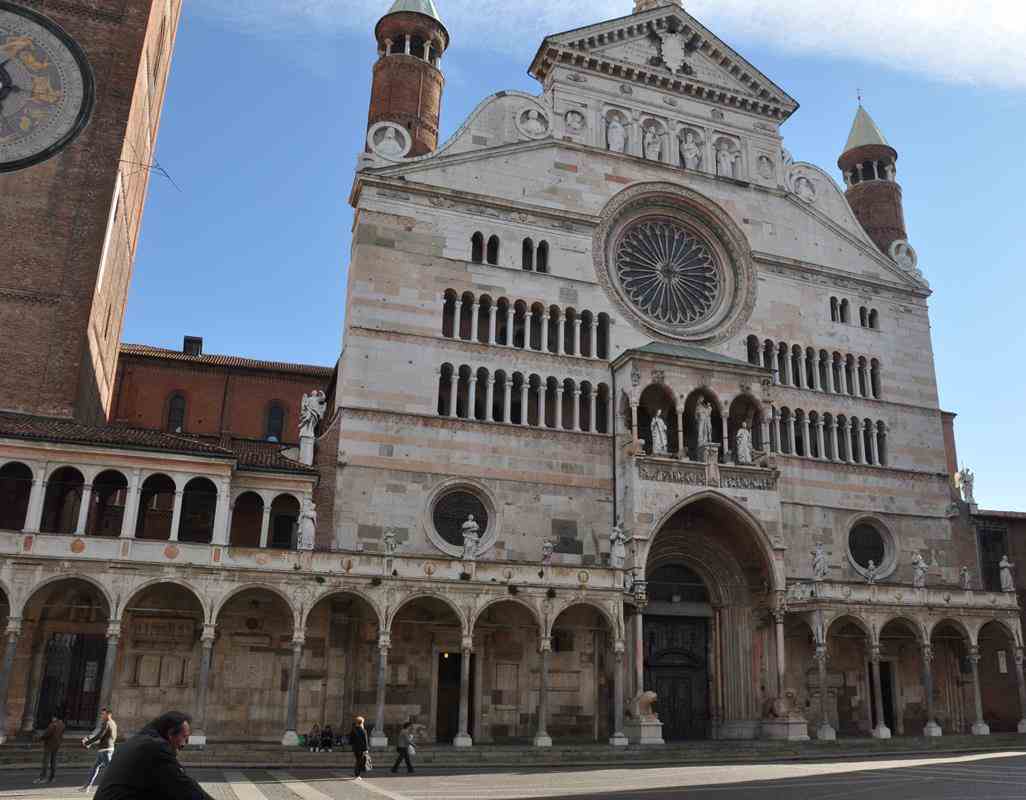
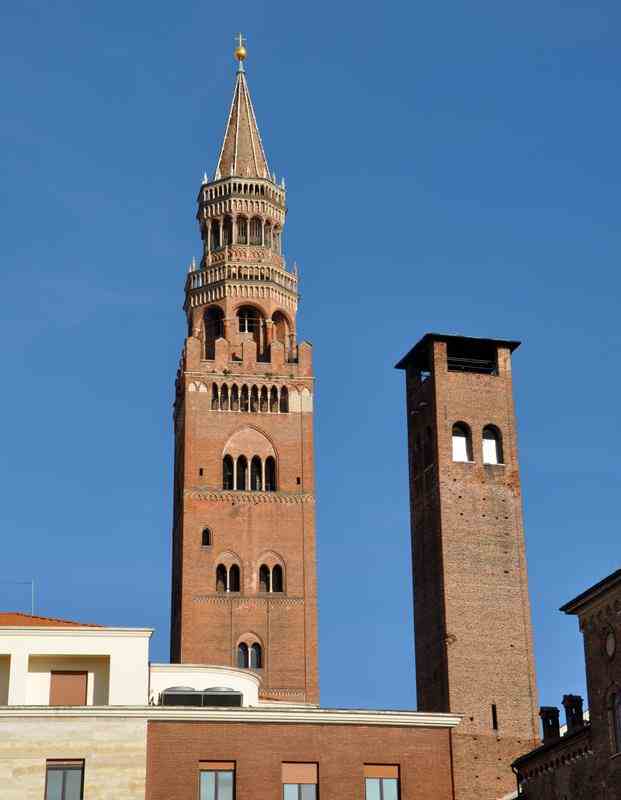
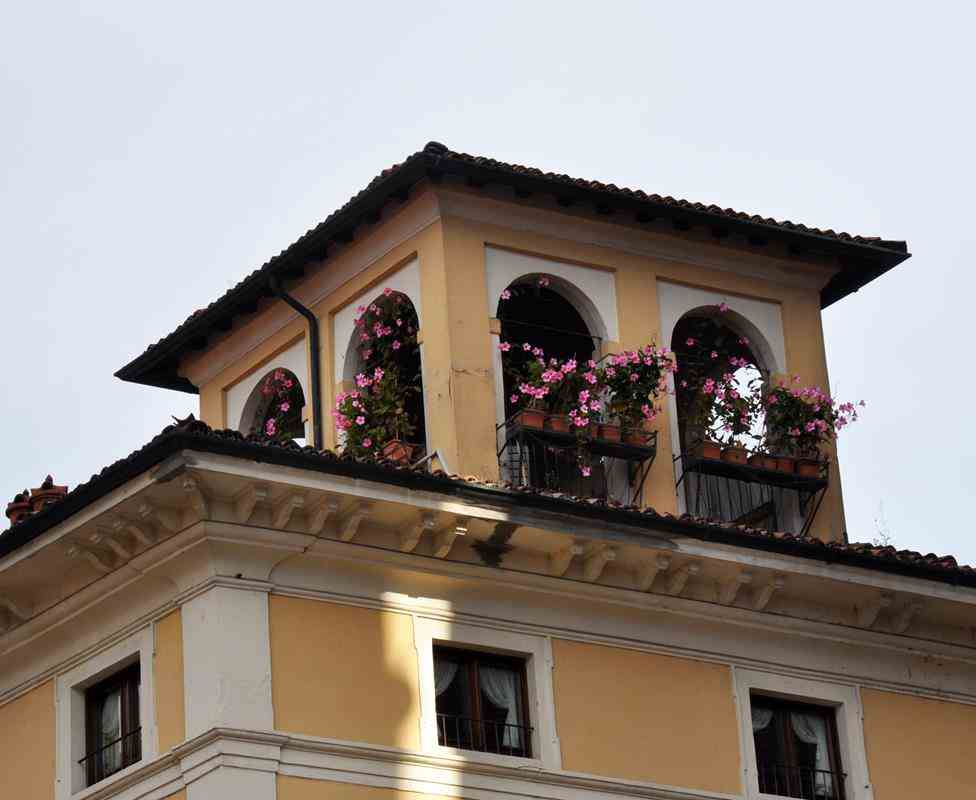
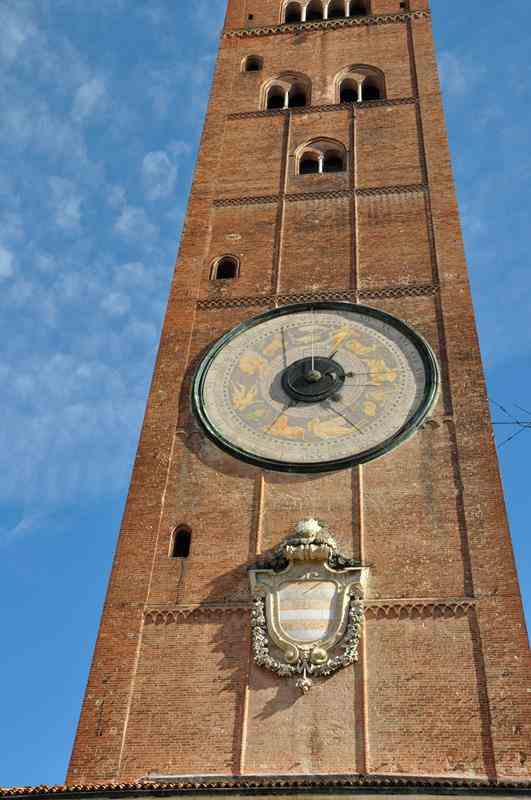
The Violin Museum in Cremona was brilliant.
The priceless instruments were beautifully diplayed and there was lots of information and history of stringed instruments.
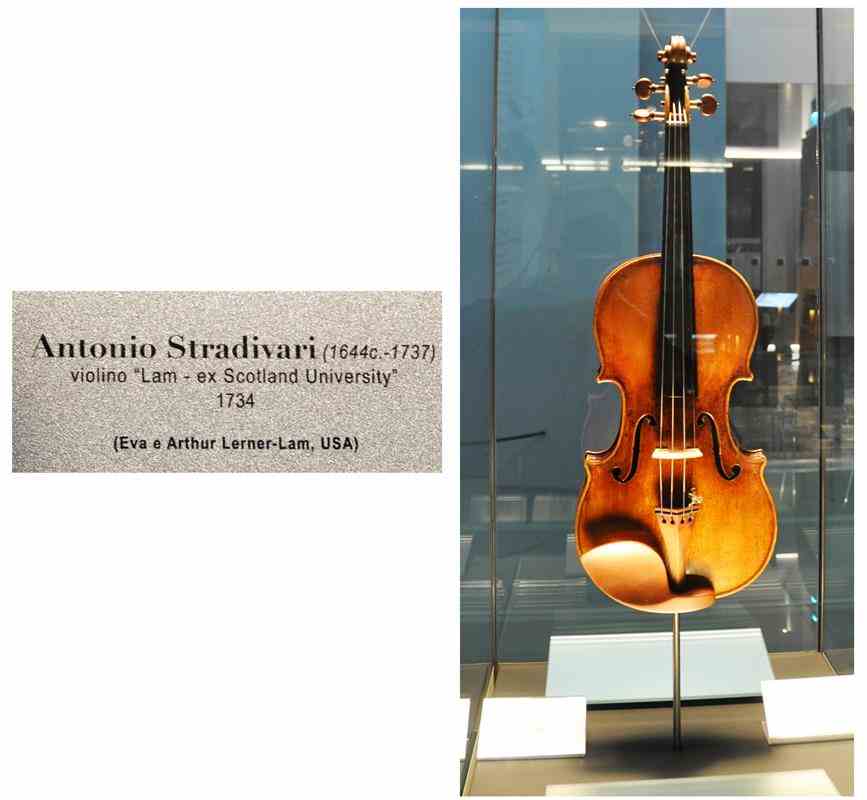
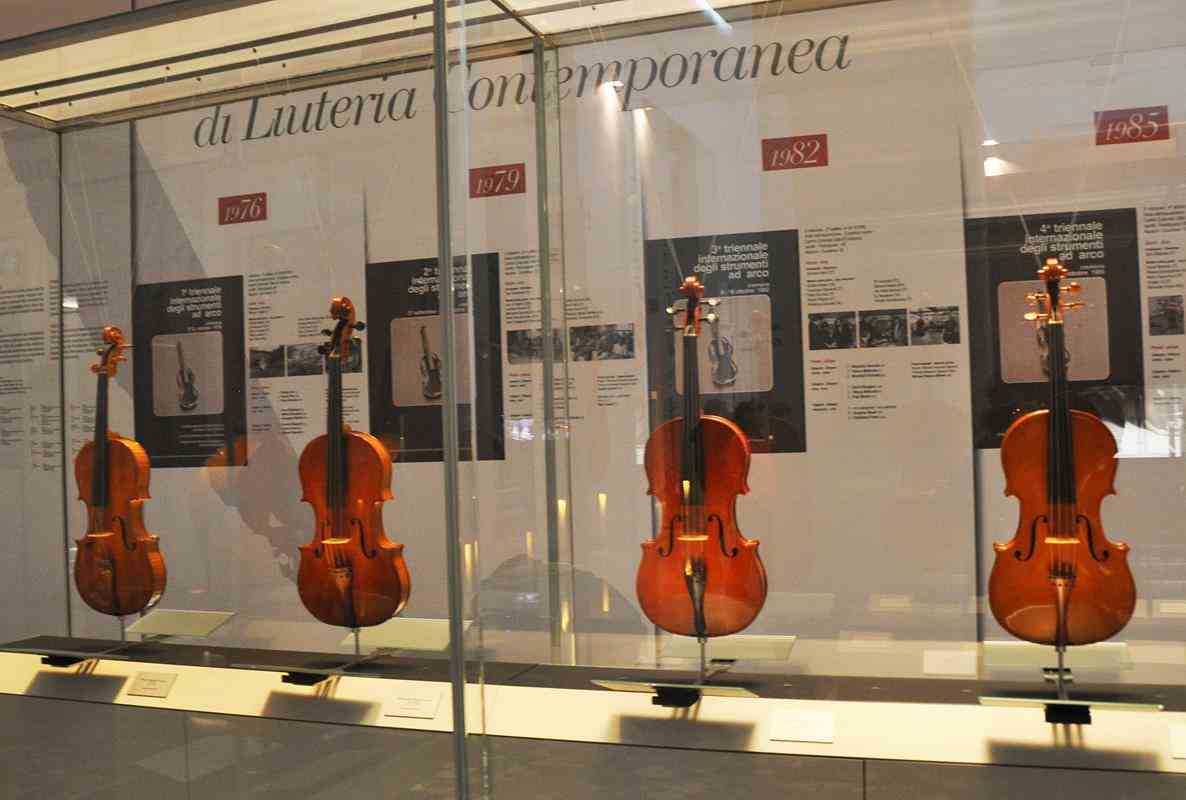
At a violin workshop we were given a talk on the making of violins.
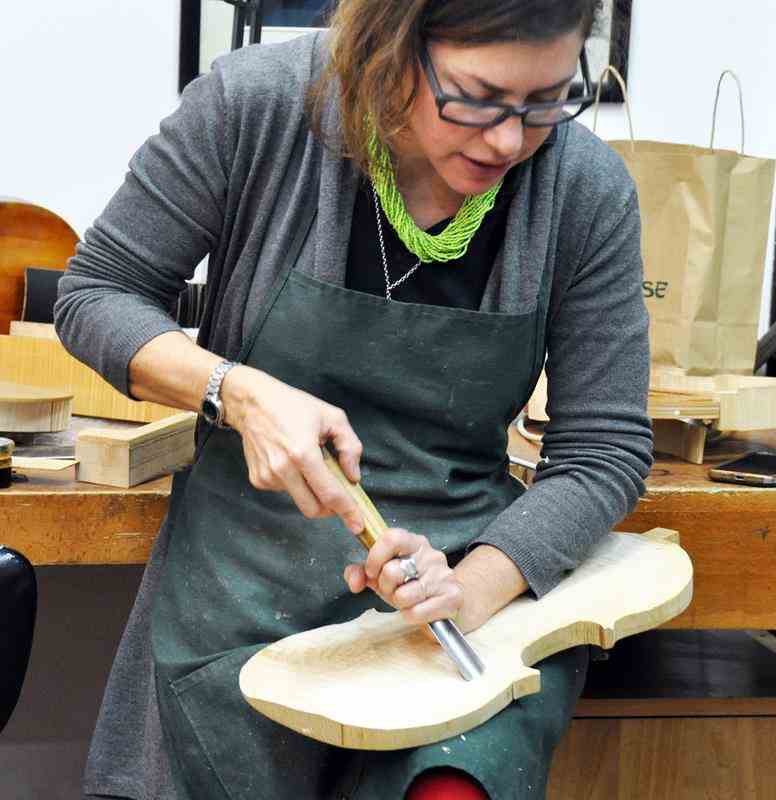
And lastly to Milan.
Milan Cathedral
The Duomo is a most impessive sight, right in the heart of Milan.
We were able to take a lift up to the top and walk on the roof and terraces.
Milan Cathedral, dedicated to St Mary of the Nativity (Santa Maria Nascente), is the 5th largest church in the world (by floor area).
Construction began in 1386. In 1805, Napoleon Bonaparte, about to be crowned King of Italy, ordered the façade to be finished.
In the following years, most of the missing arches and spires were constructed.
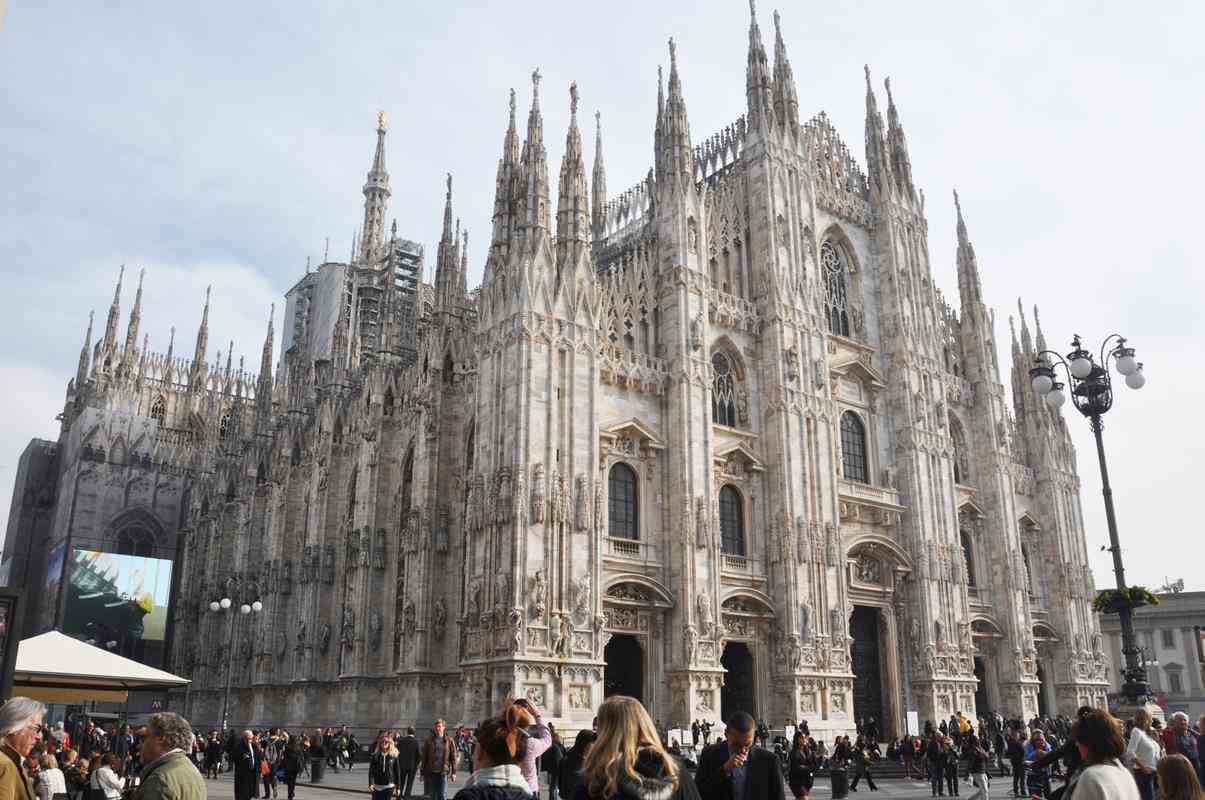
We were able to take the lift up to the roof and to walk on it.
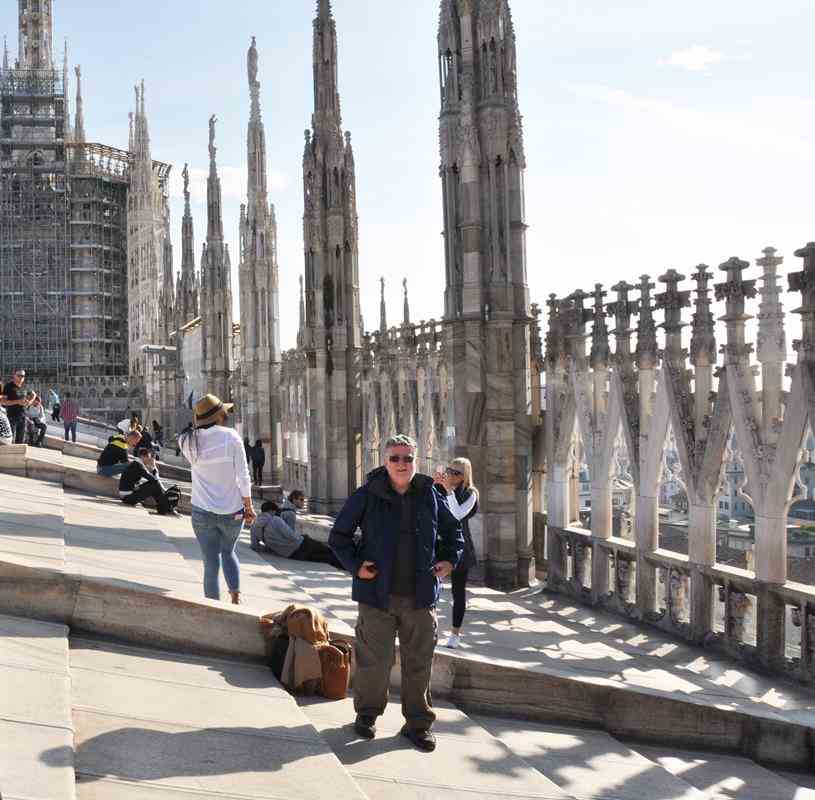
I love gargoyles. It was great to get up close to them.
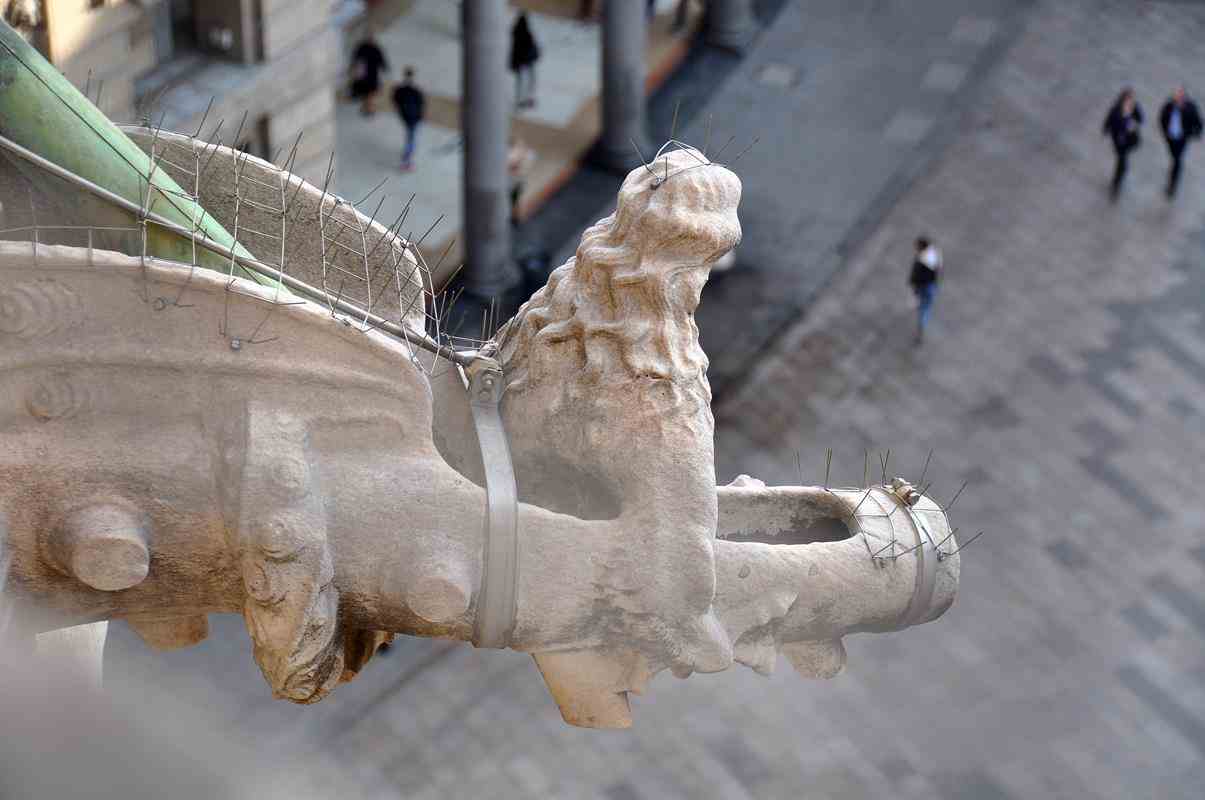
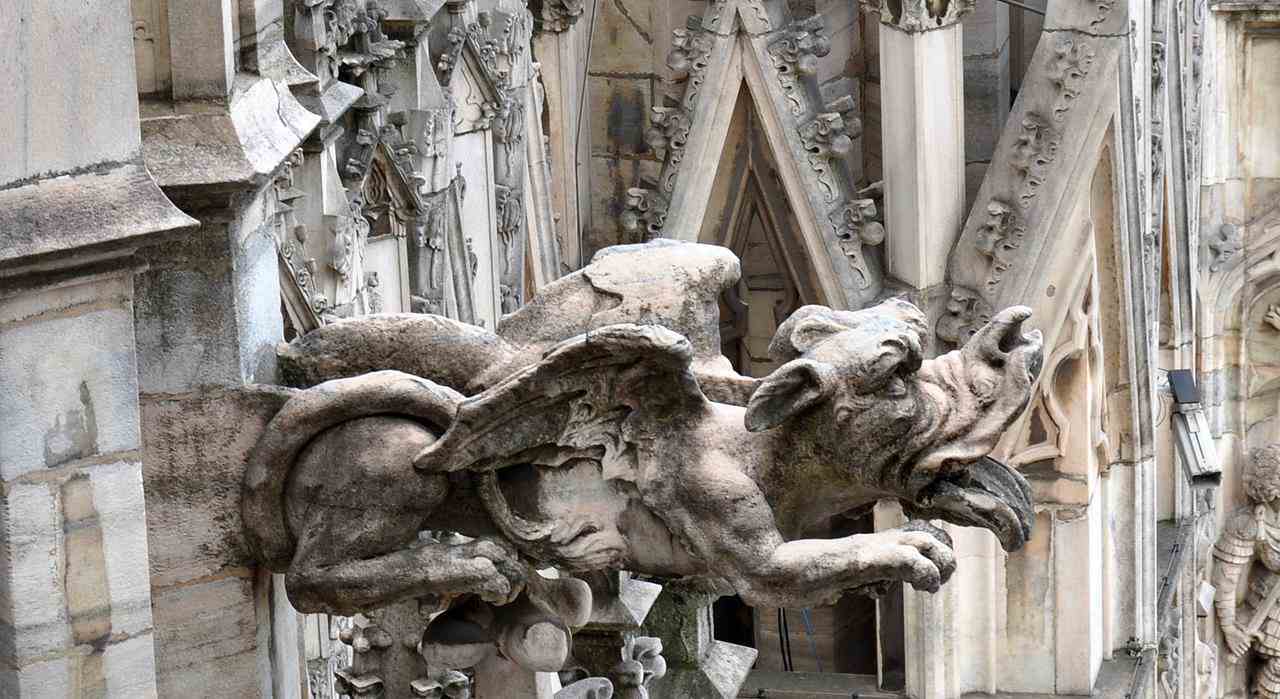
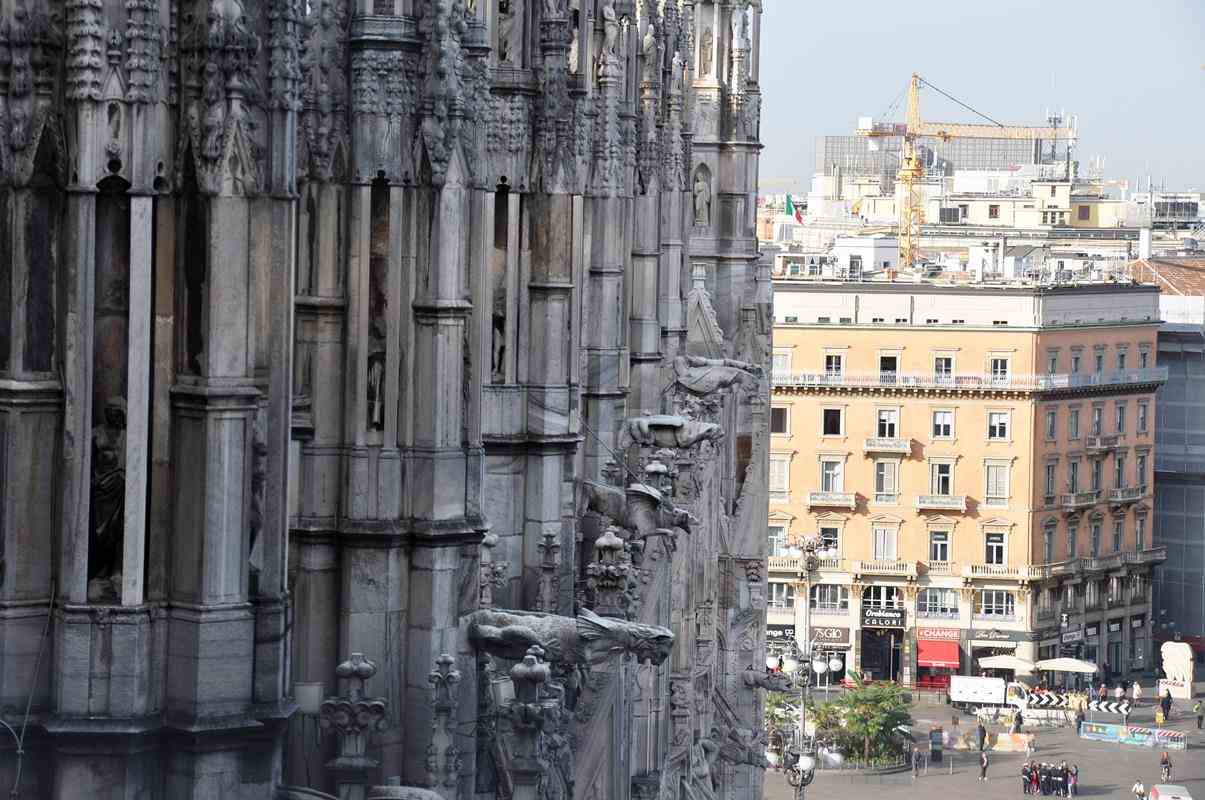
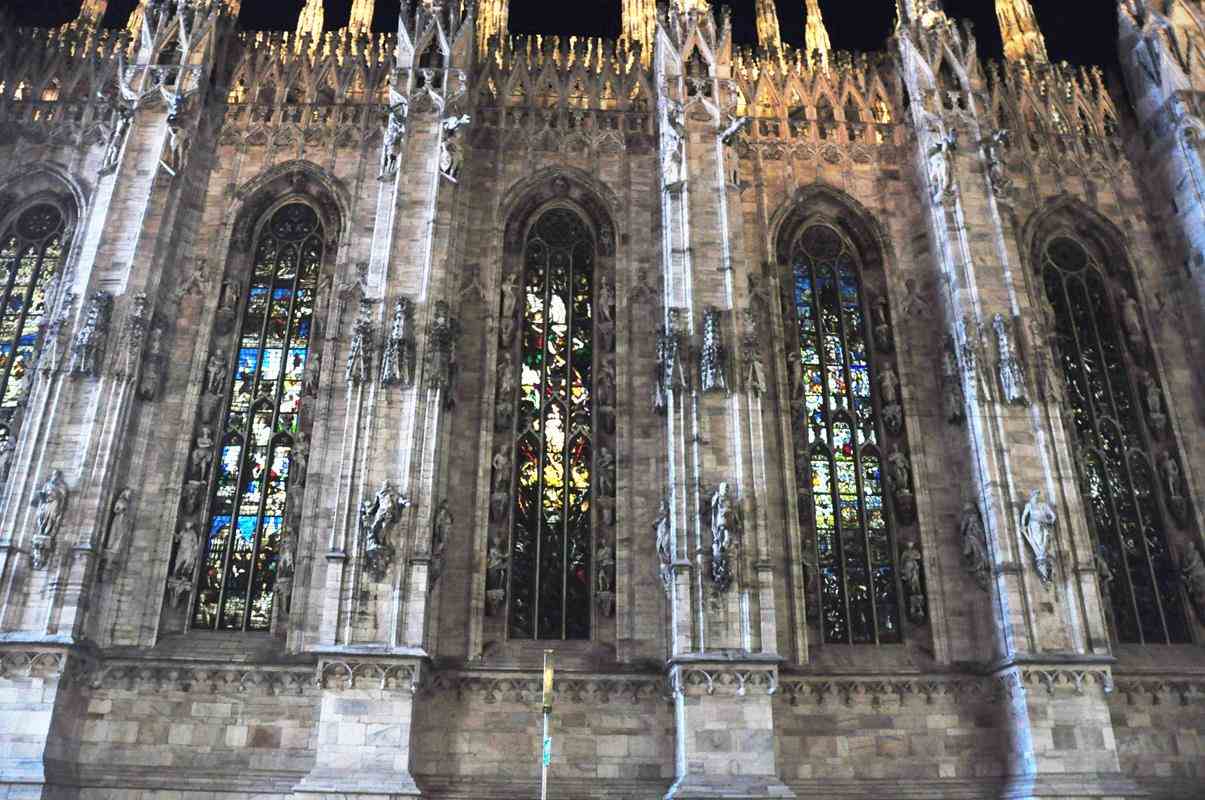
Inside the Cathedral.
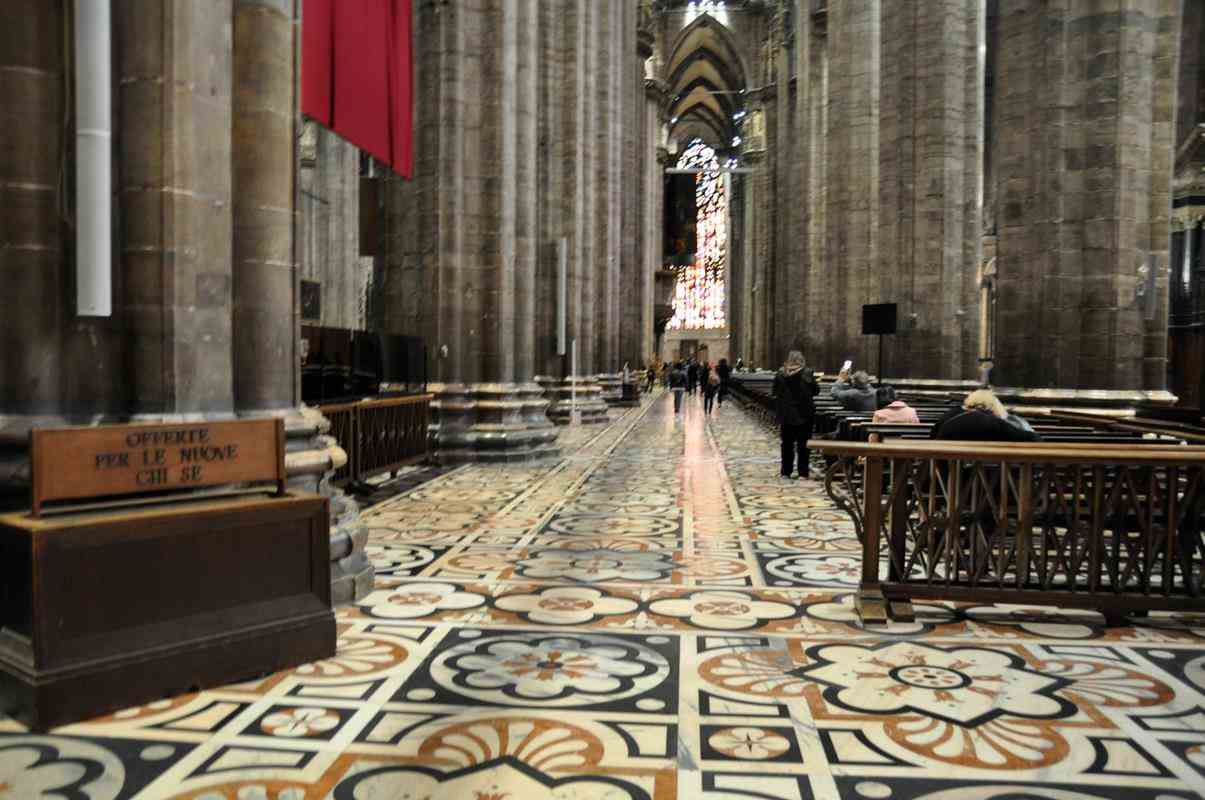
Galleria Vittorio Emanuele II
The Galleria Vittorio Emanuele II is Italy's oldest shopping mall and is named after Victor Emmanuel II,
the first King of the Kingdom of Italy.
It was designed in 1861 and built by architect Giuseppe Mengoni between 1865 and 1877.
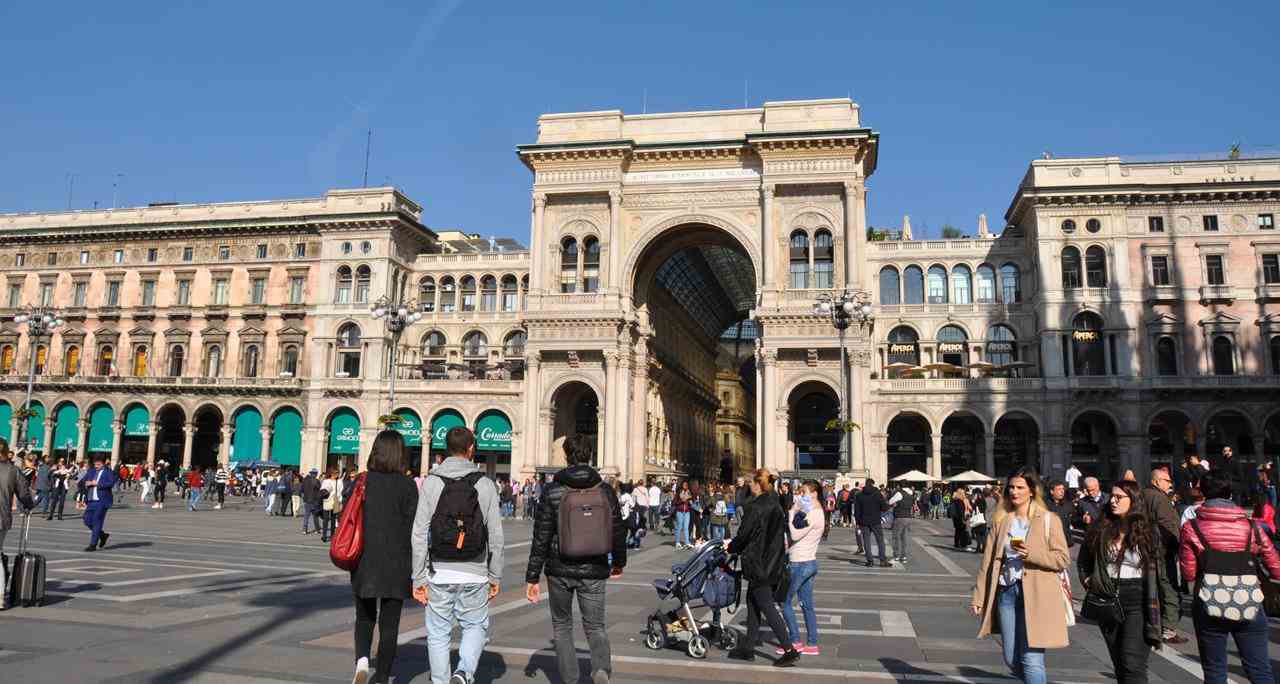
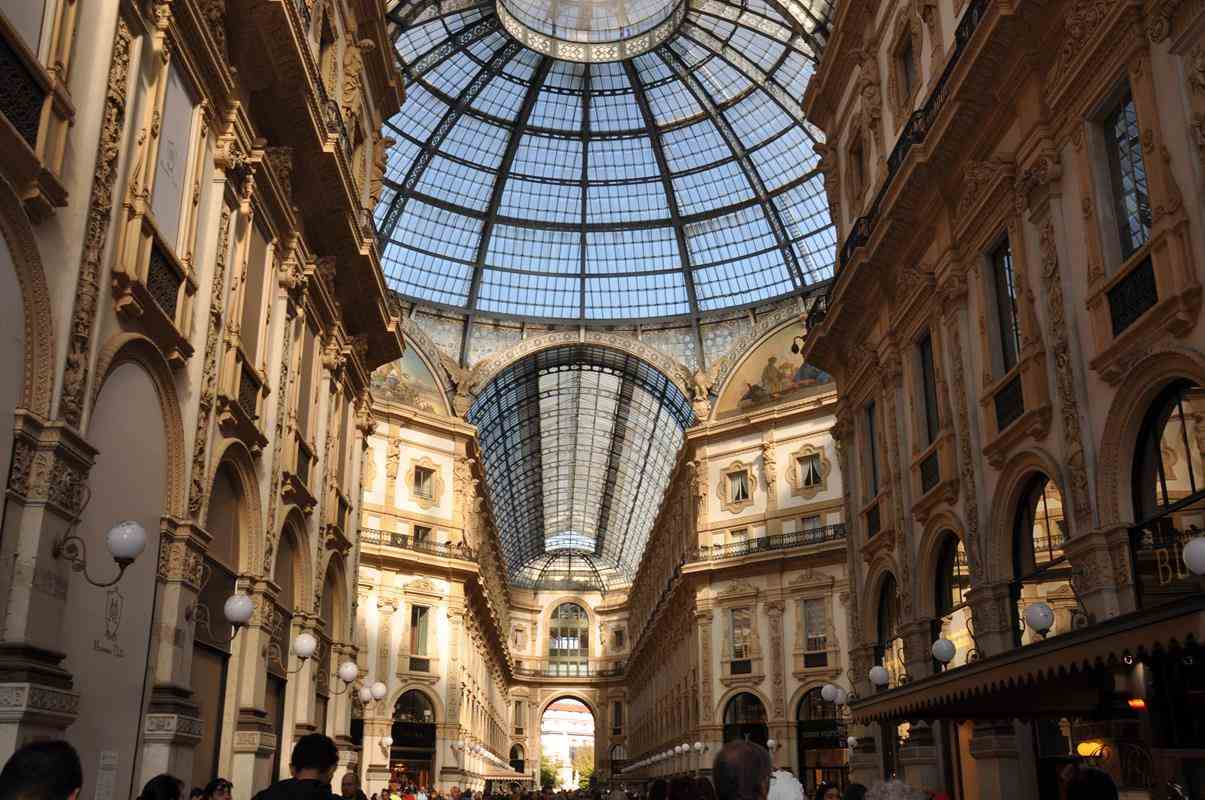
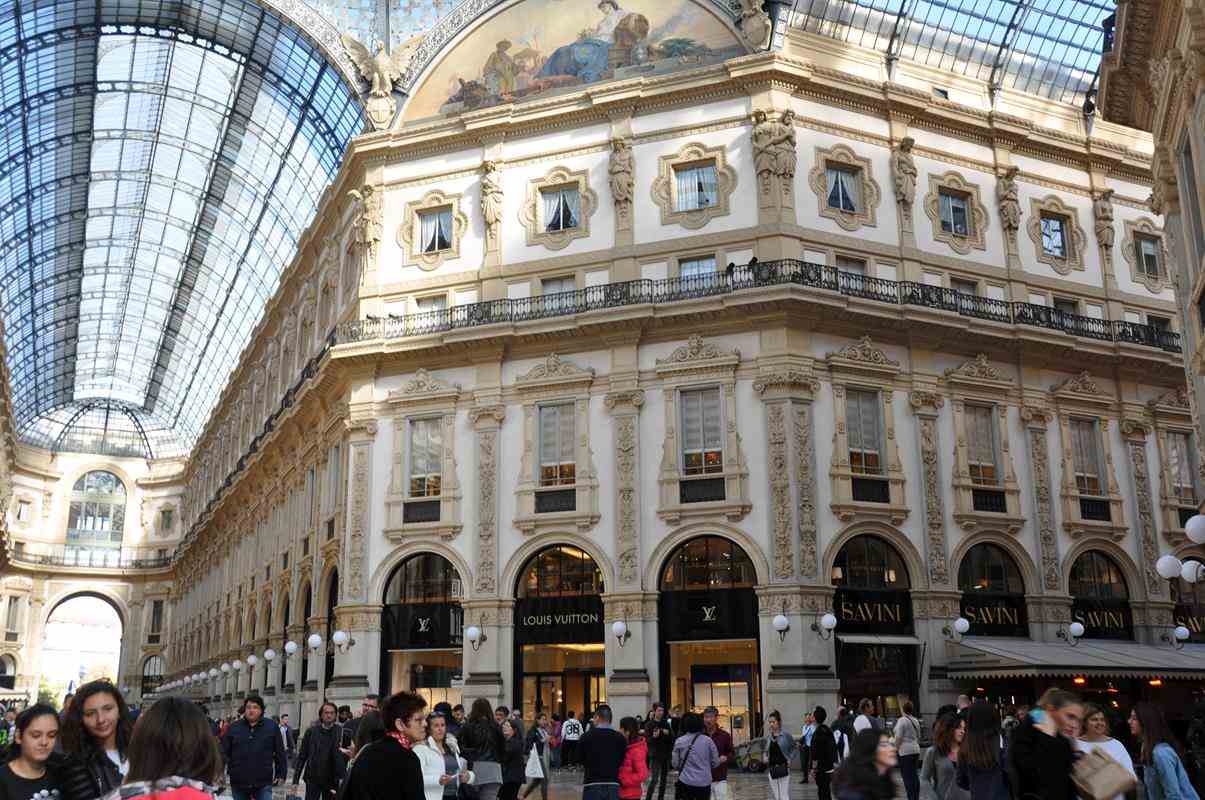
A cup coffee at the Galleria.
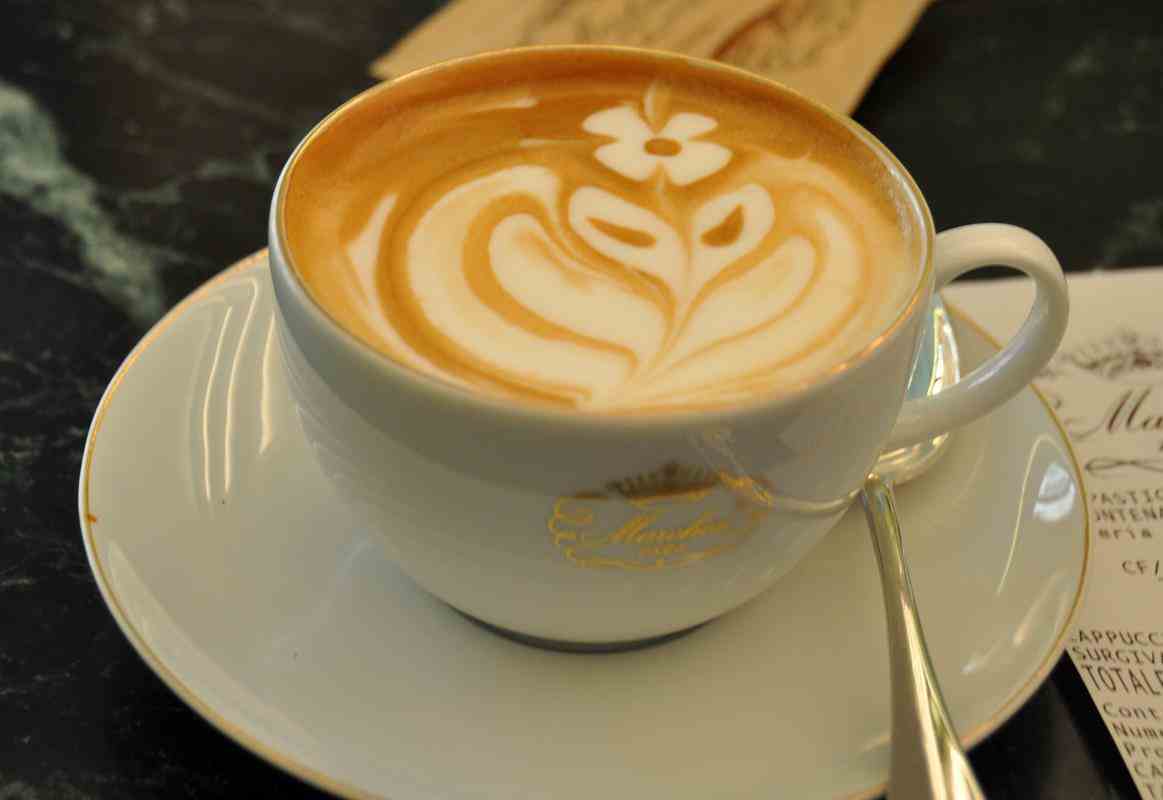
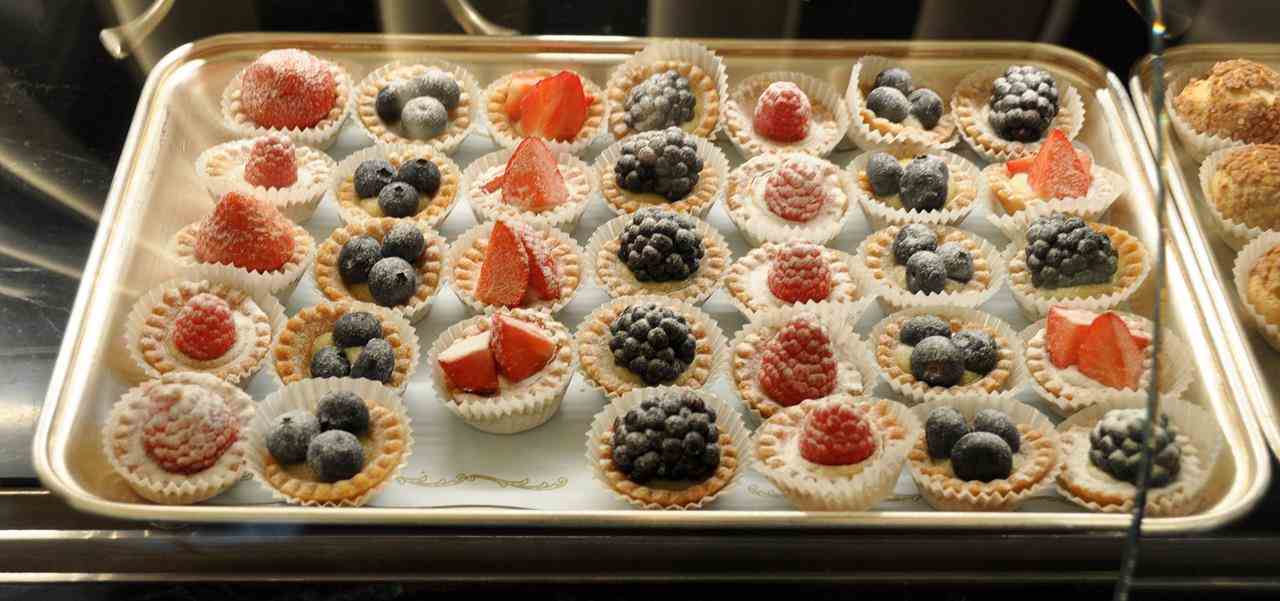
*************************************************************************************************************************************
The Block Arcade in Melbourne which was erected between 1891 and 1893 was designed by architect David C. Askew
whose brief was to produce something similar to the Galleria Vittorio Emanuele II in Milan.
The result was one of Melbourne's most richly decorated interior spaces, replete with mosaic tiled flooring, glass canopy, wrought iron and carved stone finishings.
The exterior façade of the six storey building has nearly identical facades on Collins and Elizabeth streets
is one of Australia's best surviving examples of the Victorian Mannerist style.
The name came from men walking around 'the block' one direction and women in the opposing direction,
as a tradition before going to the Victorian Football League matches.
Margaret says that it a poor cousin of the Galleria Vittorio Emanuele II, but it is still a very elegant arcade.
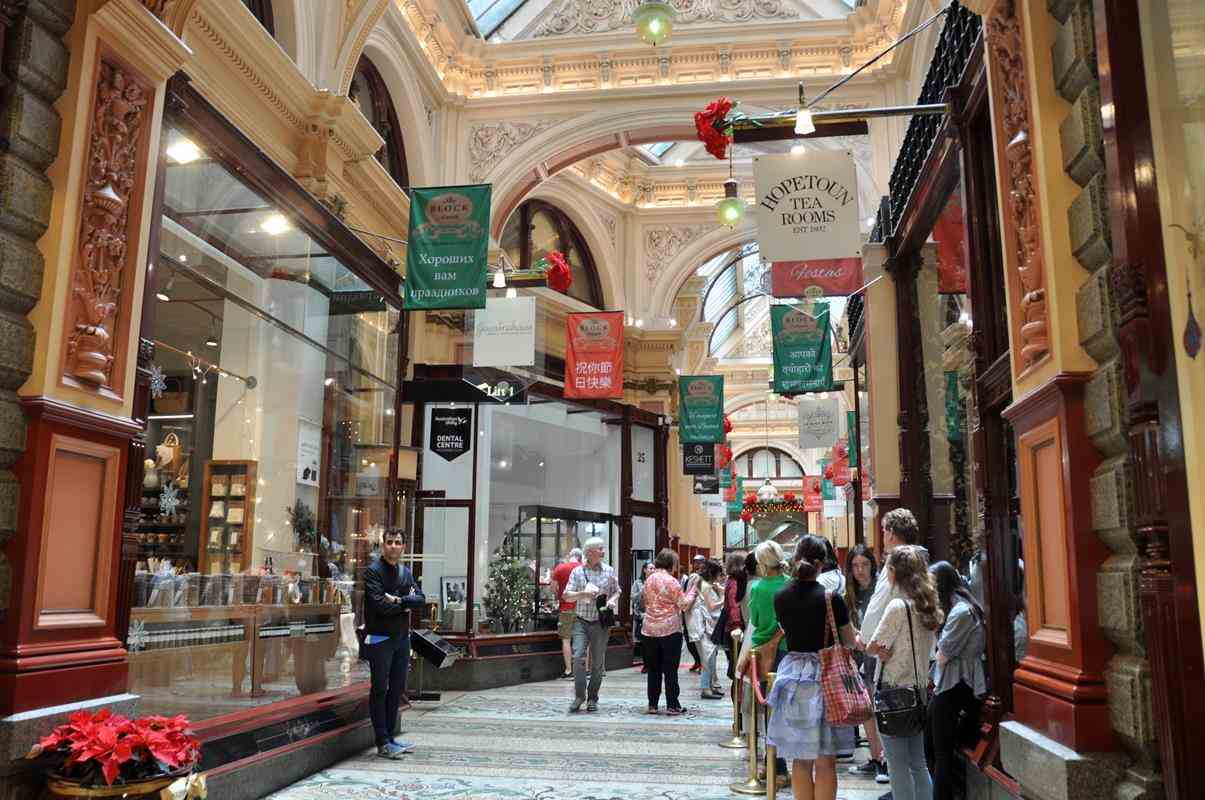
***************************************************************************************************************************************
La Scala Opera House
(Teatro alla Scala)
La Scala was inaugurated in 1778.
The premiere performance was Antonio Salieri's Europa Riconosciuta.
Many of the finest singers from around the world, have appeared at La Scala.
The theatre is regarded as one of the leading opera and ballet theatres in the world.
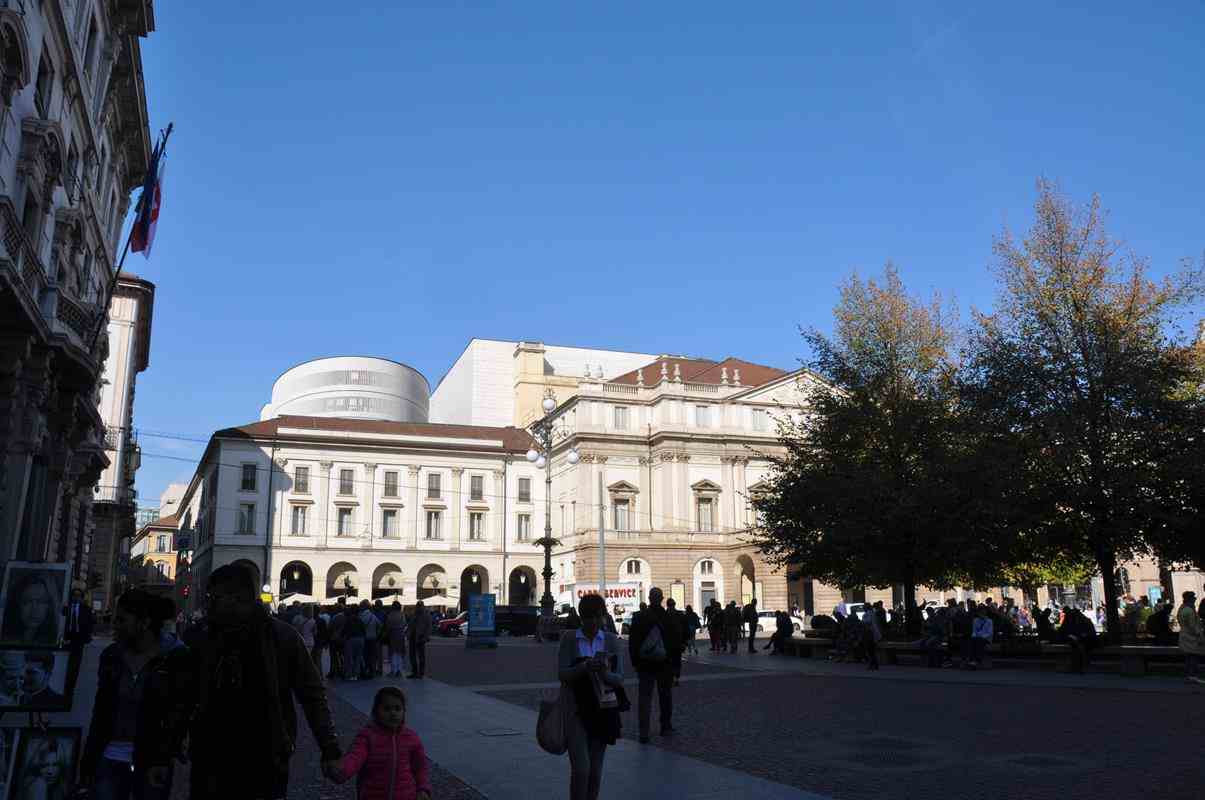
A fire destroyed a previous theatre, the Teatro Regio Ducale, in 1776, after a carnival gala.
After much argument it was decided to build a new theatre on the former location of the church of Santa Maria alla Scala.
The church was deconsecrated and demolished and, over a period of two years, the theatre was completed.
The name Scala comes from the powerful Scala family of Verona.
In the 1300s Verona was the capital of a wide territory that extended over almost the whole of north-east of Italy.
As it often happened at that time, together with wars, Scala family leaders tried to consolidate their power through wedding alliances with neighboring countries.
In 1350, Mastino II della Scala, Lord of Verona, gave his doughter Beatrice away to Bernabò Visconti,
eminent lord of Milan that was extending his control over Lombardy down to the West coast of Lake Garda, right to the border of Verona territory.
Despite the marriage being arranged, it turned out succesful and abiding.
Bernabò and Beatrice had fifteen children and when she died in 1384, he imposed on all Milan citizens a year of mourning.
Because of her great dignity and royal manners Beatrice was known by everybody as Regina: Queen.
In 1381 she ordered the the reconstruction of the church of Sant Veronica in Milan.
The new chuch was dedicated to the Assumption of the Virgin Mary, but everybody ended up calling it with the name of its founder - Santa Maria della Scala.
The church had ups and downs through the centuries and ended up in ruin.
In 1776, under the Austrian domination of Milan, Maria Theresa of Habsburg ordered its demolition to make space
for a new theatre that preserved in its name the memory of the old church - Scala Theatre.
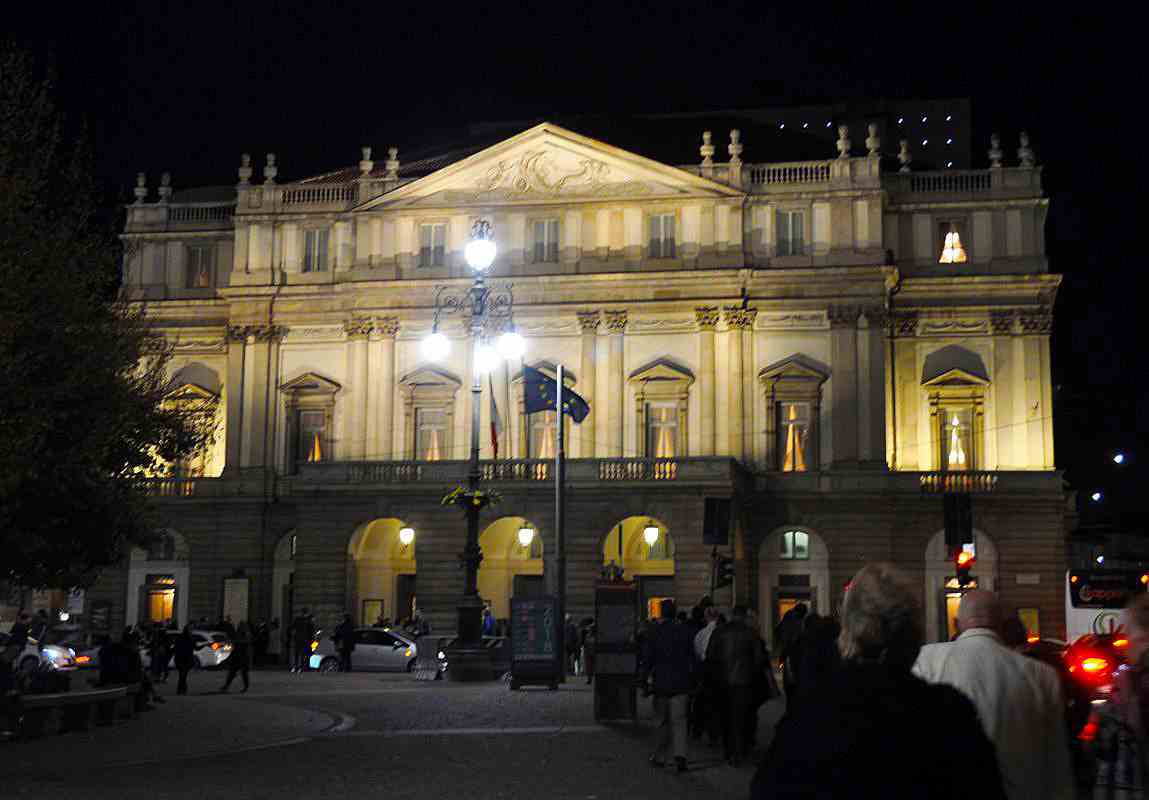
We had a comprehensive tour of the opera house.
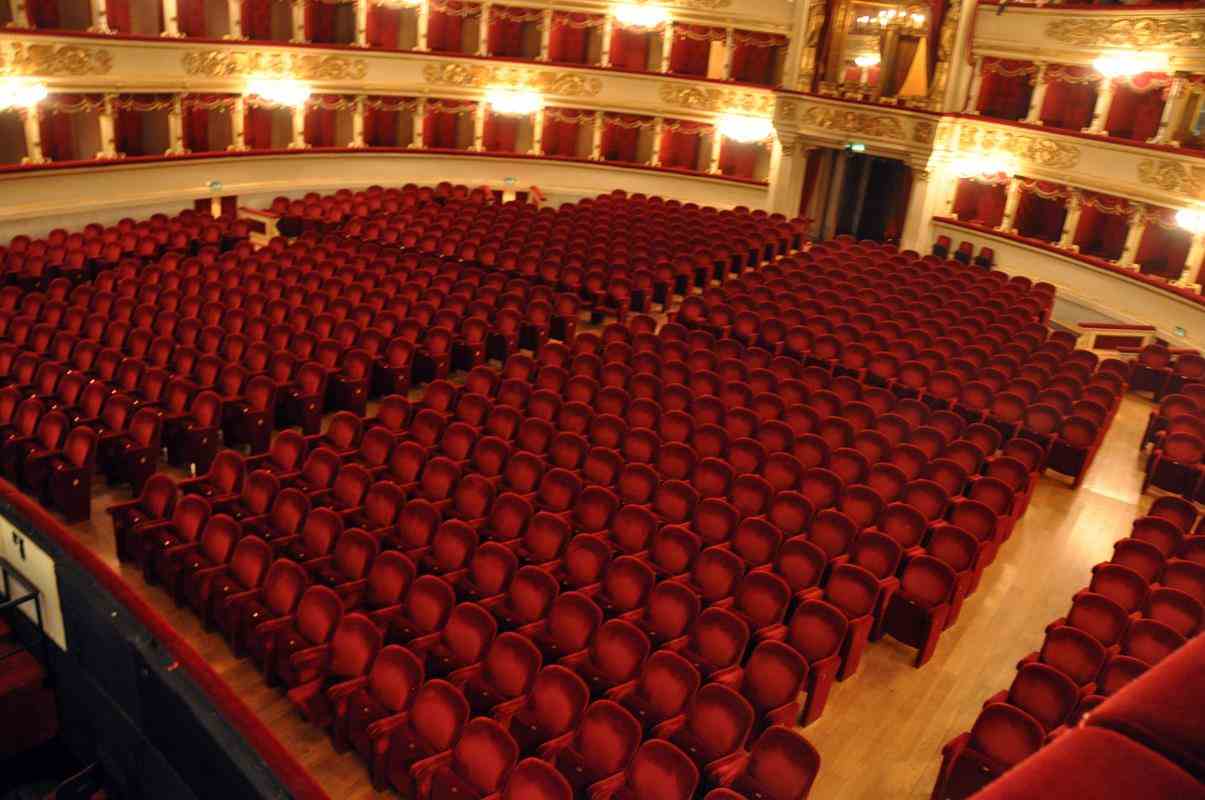
The view from a private box.
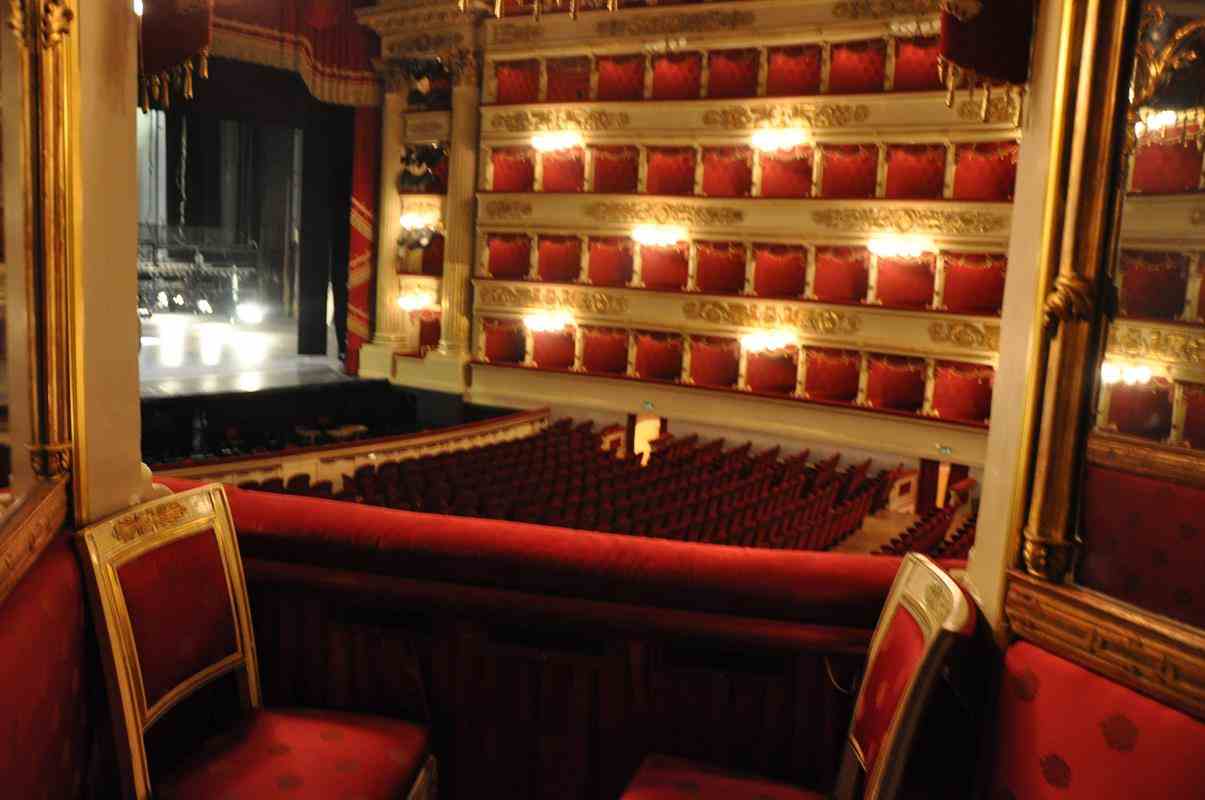
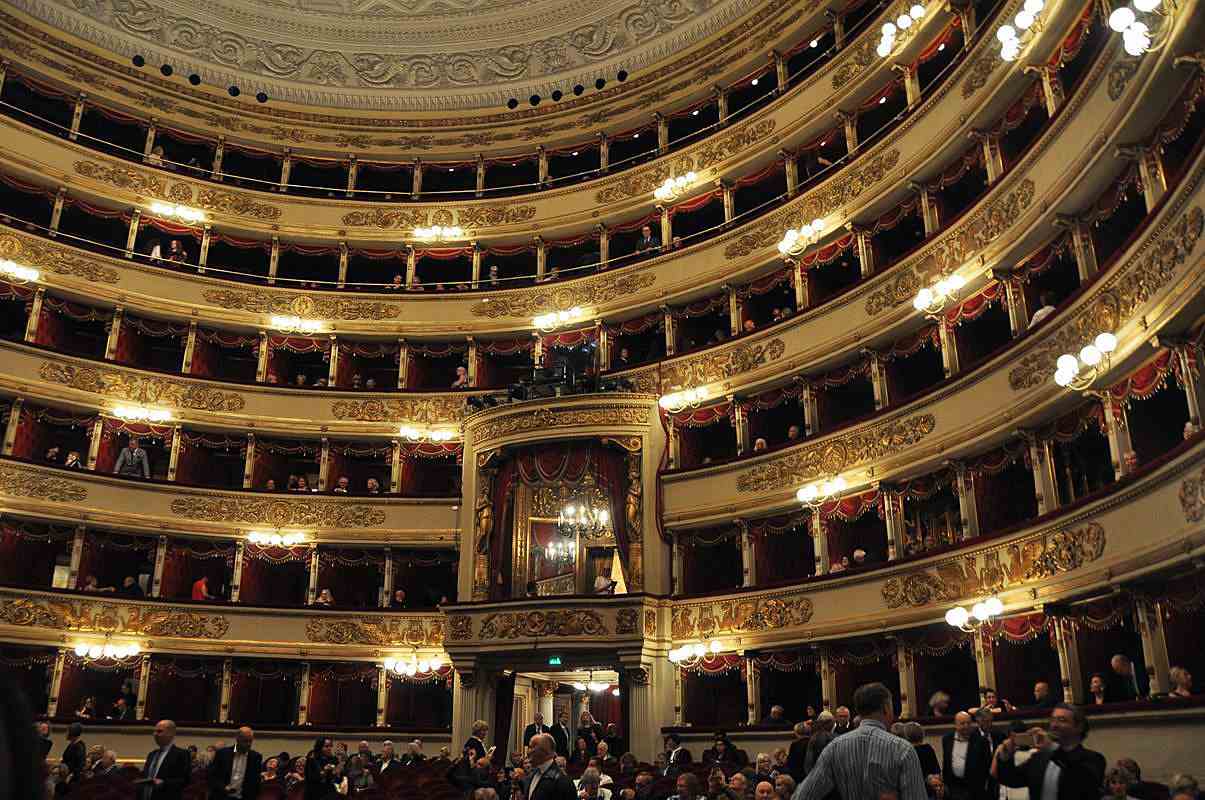
We saw Verdi's opera, Nambucco, which is based on the biblical books of Jeremiah and Daniel.
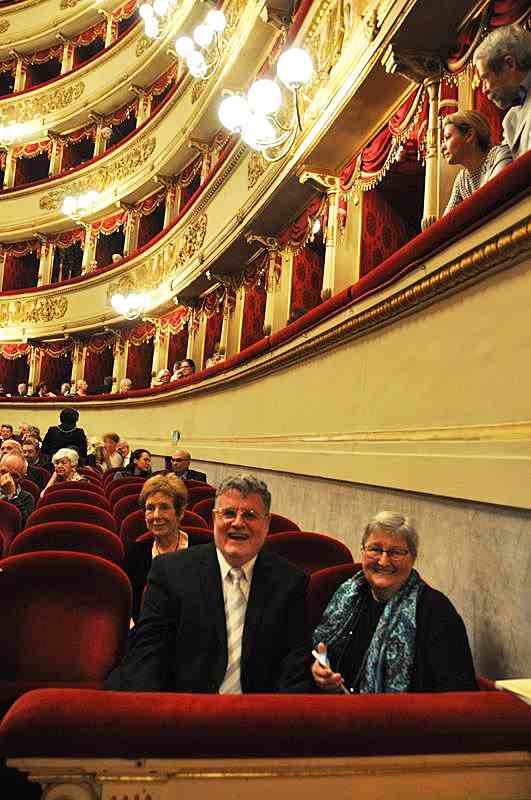
Nambucco premiered in this theatre in 1842.
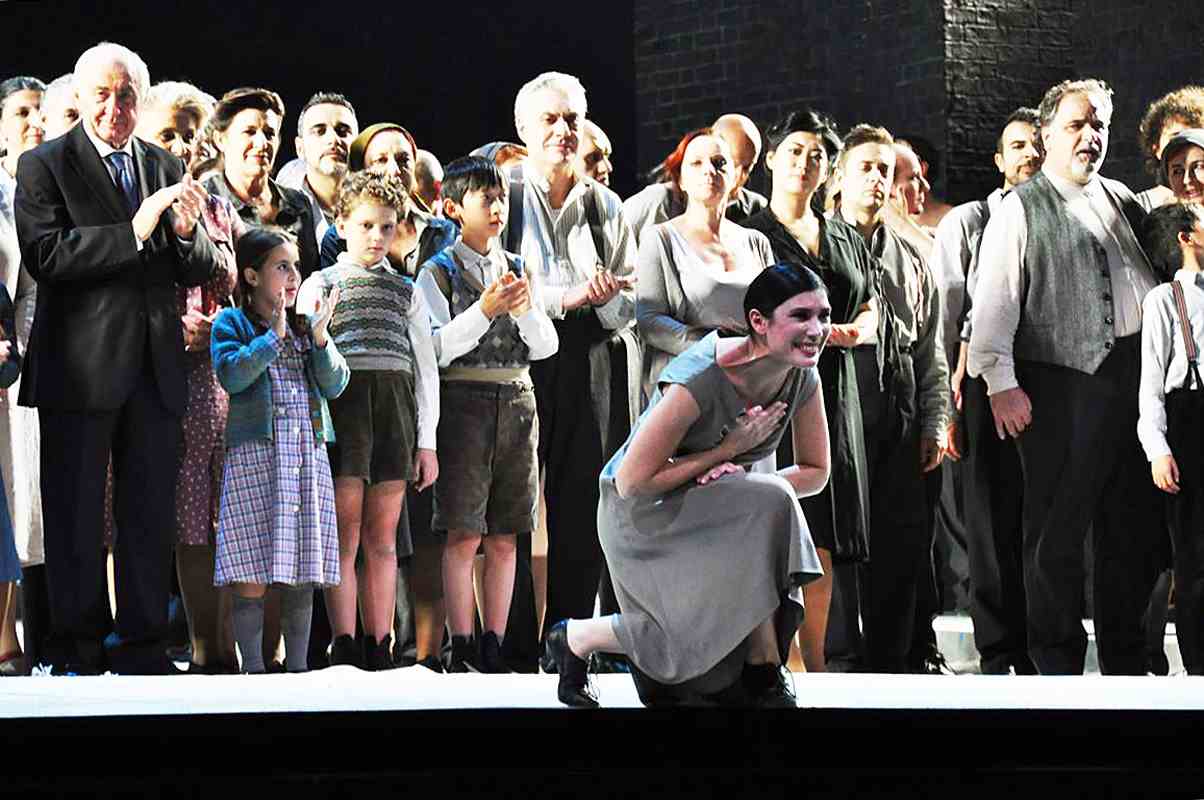
Margaret in front of a statue of Gioachino Rossini, her favourite composer.
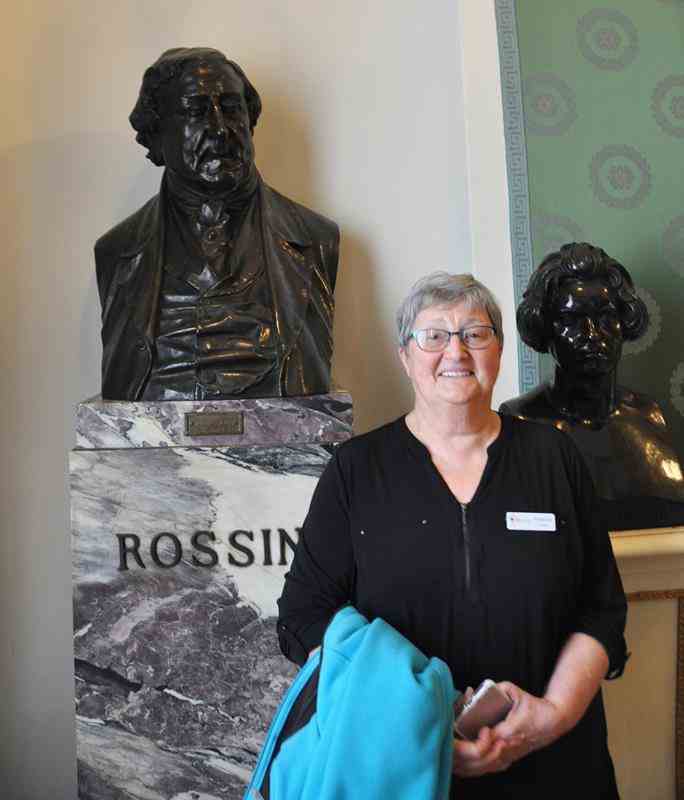
Gaetano Donizetti is her favourite opera composer.
His L'elisir d'amore (The Elixir of Love), a comic opera is her favourite opera.
It premiered in 1832 in another theatre in Milan.
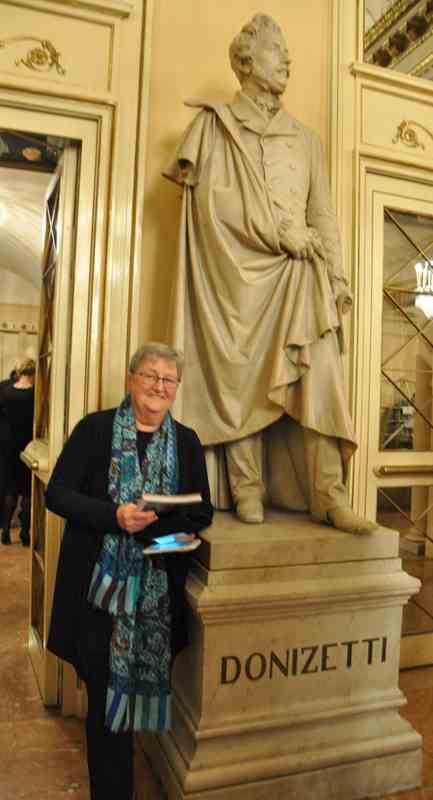
Guiseppe Verdi
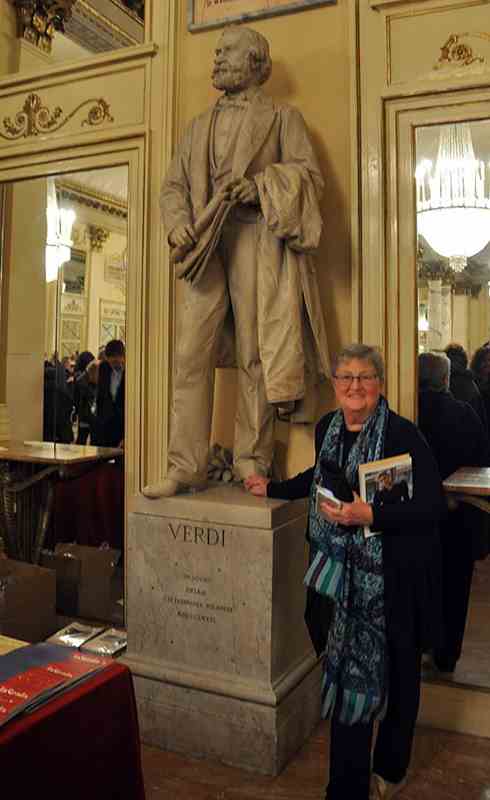
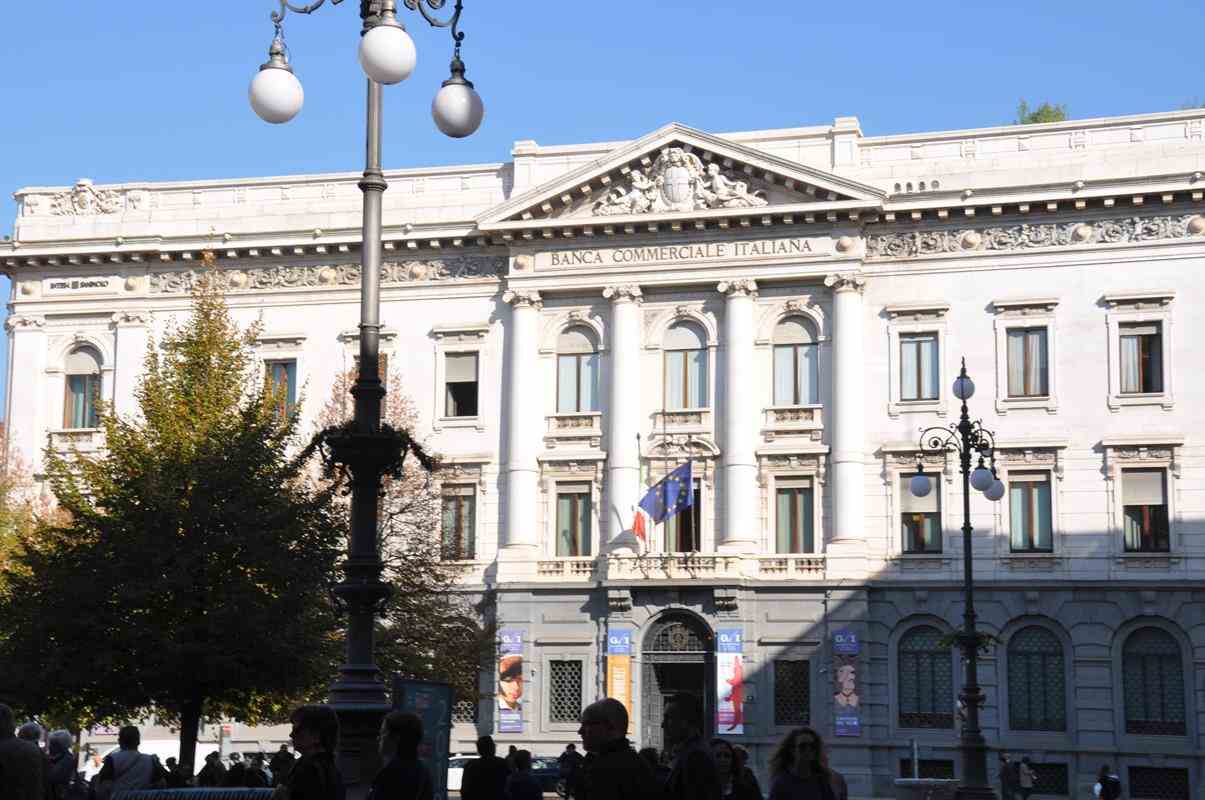
Verdi's tomb at Verdi Casa di Riposa.
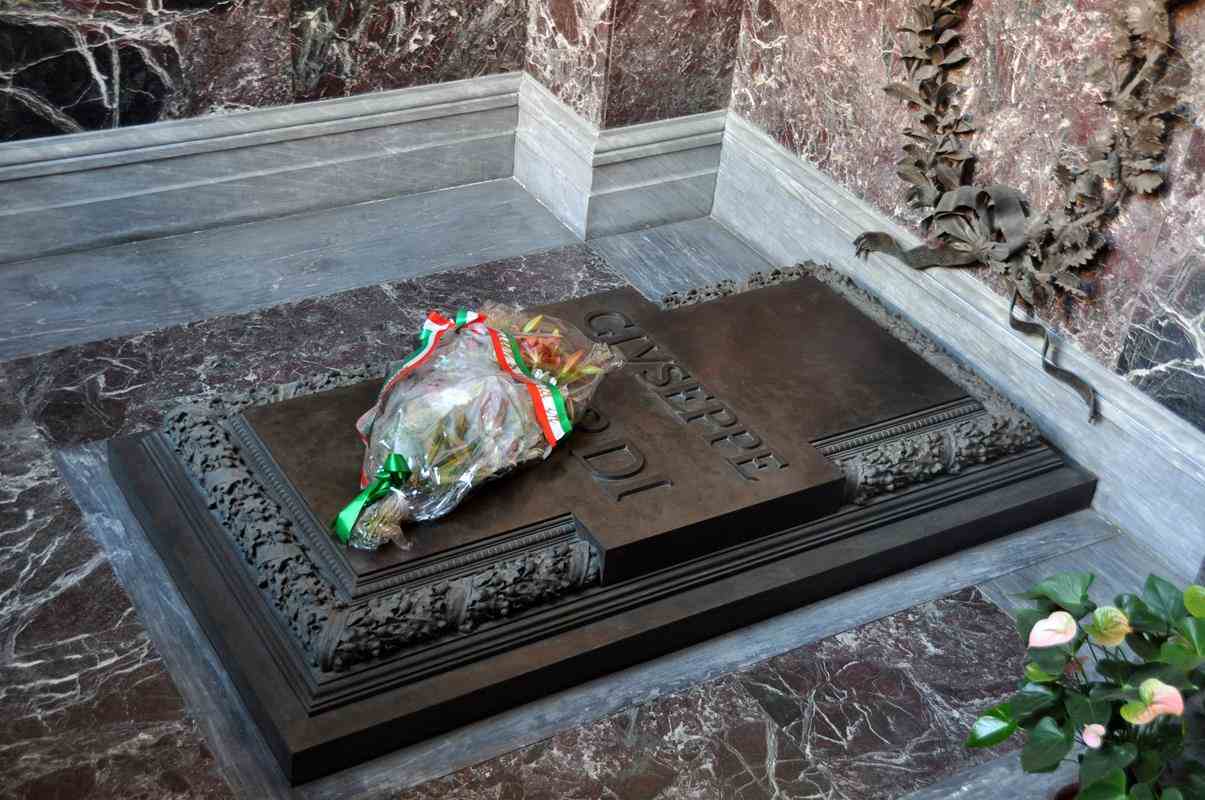
Sforza Castle - Castello Sforzesco
Sforza Castle was built in the 15th century by Francesco Sforza, Duke of Milan, on the remnants of a 14th-century fortification.
Later renovated and enlarged, in the 16th and 17th centuries it was one of the largest citadels in Europe.
Extensively rebuilt by Luca Beltrami in 1891–1905, it now houses several of the city's museums and art collections.
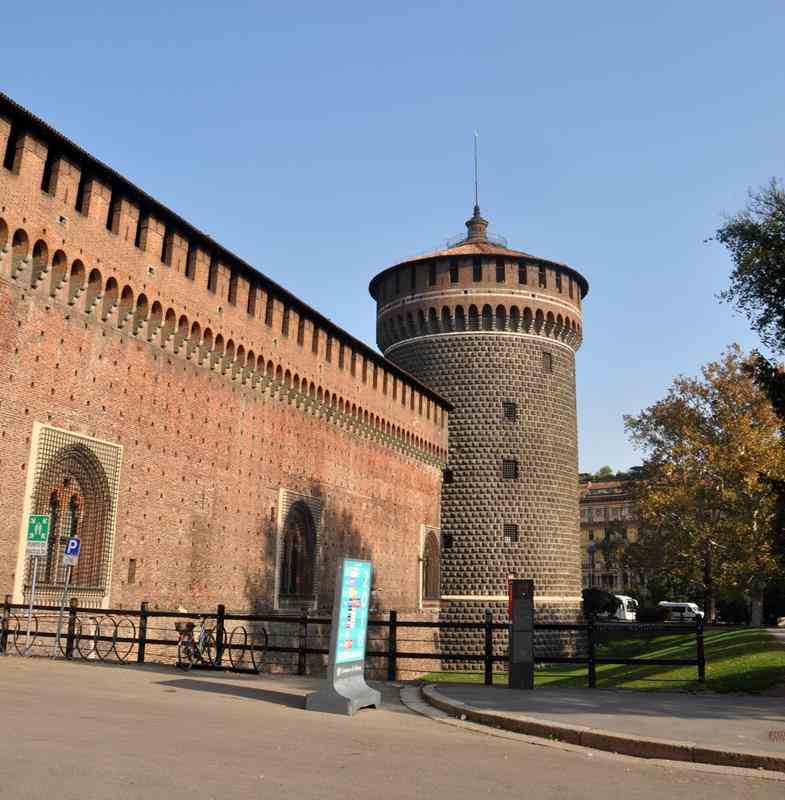
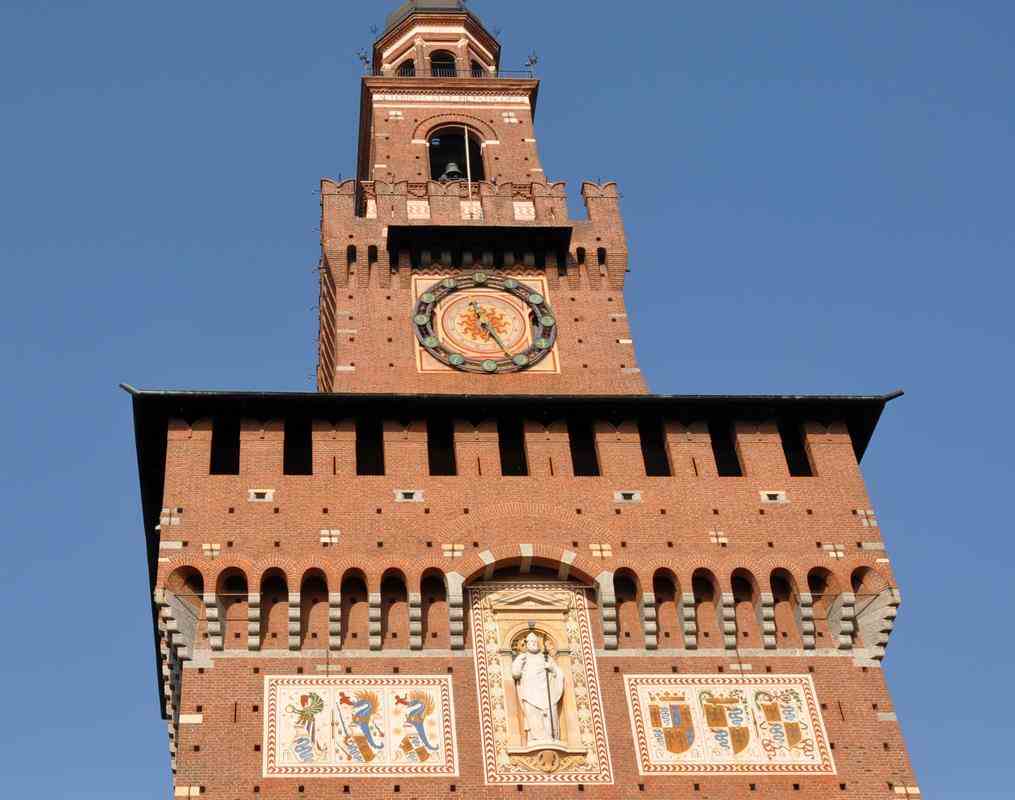
An interesting musical instrument in the museum at the castle.
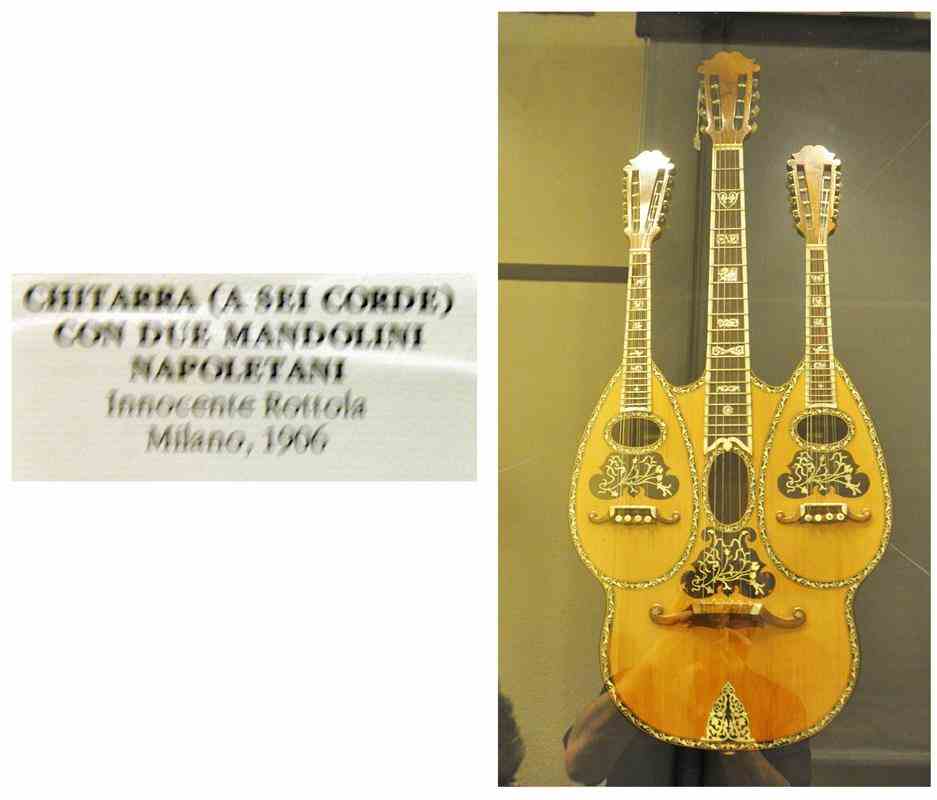
Operatif Music-lovers Verdi tour.
(Dubai – Bologna – Reggio Emilia – Parma – Milan - Dubai)
After a night in Dubai, we flew to Bologna.
Bologna
Bologna is the largest city of the Emilia-Romagna Region in Northern Italy.
It is the seventh most populous city in Italy, at the heart of a metropolitan area of about one million people.
Bologna has a well-preserved historical centre,
thanks to a careful restoration and conservation policy which began at the end of the 1970s.
Home to the oldest university in the world, the University of Bologna, established in AD 1088,
the city has a large student population that gives it a cosmopolitan character.
In 2000 it was declared European capital of culture and in 2006, a UNESCO "city of music".
Bologna is noted for its collonades. There are more than 40km of them.
Bologna’s porticos were built because of the city’s early growth when eager students rushed to the world’s first university.
Bologna simply needed more room. Porticos created more liveable space higher above ground level, with shops underneath them.
Arches at least 4 metres tall meant people riding their horses could easily pass through.
Even artists and craftsmen could work outside, sheltered from the elements.

University of Bologna - The Archiginnasio
The University of Bologna, founded in 1088, is the oldest university in continuous operation,
as well as one of the leading academic institutions in Italy and Europe.
It is prestigious, commonly ranking first in Italian national rankings.
This building (The Archiginnasio) was built very quickly (1562-1563).
The goal of this project was to create a single place where the Schools of the "Legisti" (Canon and Civil law)
and "Artisti" (philosophy, medicine, mathematics, natural sciences and physics),
previously located in various places across the town, could be hosted together.
The building of the new "Schools" was named Archiginnasio after the classical term which was used to designate the Studium,
as the University was first called, of Bologna.
The Archiginnasio ceased from being a University in 1803 when the University was moved to Palazzo Poggi where it is still located today.
Later we visited the museum at the Palazzo Poggi.

The Anatomical Theatre of the Archiginnasio at the University of Bologna
This beautiful, ornate wood-lined lecture theatre was built between 1636 and 1638.
The ceiling and the wall decorations were completed from 1647 to 1649.
The theatre was almost completely destroyed during the Second World War, by an air raid on January 29, 1944.
After the war the theatre was rebuilt using many of the original pieces recovered among the rubble of the building.

Biblioteca comunale dell'Archiginnasio
This ornate library is a another beautiful part of the Archiginnasio at the University of Bologna.
It dates from 1838 when this section of the Archiginnasio palace was used to house and preserve the books
collected from the closure of the religious orders made by Napoleon
Besides purchases there have been many donations from eminent people and scholars of Bologna since then..
Many of the handwritten and printed items deal with the civil, cultural, religious and social history of Bologna
and its territory from the Middle Ages to the present day.


Views of Bologna from the roof of San Petronio Basilica
We rode a lift to a viewing platform on the roof of the Basilica.
It was a temporary platform unlike the walk on the roof and beautiful terraces of Milan Cathedral later on our tour.



Poggi Museum
The Palazzo Poggi was built as the home of Alessandro Poggi and his brother the future Cardinal Giovanni Poggi.
The building was erected between 1549 and 1560.
In 1714 the Palazzo Poggi became the House of the Instituto dell Scienze of Bologna.
The Institute of Science was a model learning establishment in Europe during the Age of Enlightenment and a key part
of the University of Bologna.
The beautiful library of the university was built in 1744.

There was a large collection of wax models of difficult birth situations
that had been used as teaching aids in the Obstretic School of the University.


An Australian "Professor" in one of the ornate lecture rooms.

Ravenna
Ravenna, about an hours drive from Bologna, was the capital city of the Western Roman Empire from 402 until that empire collapsed in 476.
It then served as the capital of the Ostrogothic Kingdom until it was re-conquered in 540 by the Eastern Roman (Byzantine) Empire.
Afterwards, the city formed the centre of the Byzantine Exarchate of Ravenna until the invasion of the Lombards in 751,
after which it became the seat of the Kingdom of the Lombards.
Although an inland city, Ravenna is connected to the Adriatic Sea by the Candiano Canal.
It is known for its well-preserved late Roman and Byzantine architecture and mosaics, and has eight World Heritage Sites.
Basilica of Sant' Apollinare Nuovo - Ravenna
The Basilica of Sant' Apollinare Nuovo was erected by Ostrogoth King Theodoric the Great as his palace chapel during the first quarter of the 6th century.
This Arian church was originally dedicated in 504 AD to "Christ the Redeemer".
It was reconsecrated in 561 AD, under the rule of the Byzantine emperor Justinian I, under the new name "Sanctus Martinus in Coelo Aureo"
("Saint Martin in Golden Heaven").Suppressing the Arian cult, the church was dedicated to Saint Martin of Tours, a foe of Arianism.
According to legend, Pope Gregory the Great ordered that the mosaics in the church be blackened, as their golden glory distracted worshipers from their prayers.


Basilica di San Vitale - Ravenna
The Basilica has an octagonal plan. The building combines Roman elements (the dome, shape of doorways, and stepped towers)
with Byzantine elements (polygonal apse, capitals, narrow bricks), and an early example of flying buttresses.
The church is most famous for its wealth of Byzantine mosaics, the largest and best preserved outside of Constantinople
The church was begun by Bishop Ecclesius in 526, when Ravenna was under the rule of the Ostrogoths
and completed by the 27th Bishop of Ravenna, Maximian, in 547 preceding the Byzantine Exarchate of Ravenna.
The church is of extreme importance in Byzantine art, as it is the only major church from the period of the Emperor Justinian I
to survive virtually intact to the present day.

There were lots and lots of stunning mosaics inside the Basilica.

Battisero delgi Orthodossi
The Baptistery of Neon (Battistero Neoniano) is the most ancient monument remaining in the city.
The octagonal brick structure was partly erected on the site of Roman baths at the end of the 4th century.
It is also called the Orthodox Baptistery.
The original floor is now some 3 metres underground, so the proper structure and extent of the building can no longer be seen.
The octagonal design of the building, employed in virtually all Early Christian baptisteries,
symbolizes the seven days of the week plus the Day of the Resurrection and Eternal Life.
The Baptistery was part of the great Basilica which was destroyed in 1734.
Before you could enter the Basilicas or Cathedrals you had to be baptised.
Hence Baptisteries were built for this ceremony.
It is not known at what time the baptistery became absorbed into the Basilica.
The change was made earlier in Rome than elsewhere.

A pizza in Ravenna.

Pavarotti's House
Pavarotti built this house near Modena in 2005. He lived here until he died in 2007.
He acquired this small rural property in the mid-eighties. In keeping with his passion for horses, he built a riding school on the property.
From 1991, for 11 years, he hosted a prestigious show jumping competition attended by
the most famous show-jumpers of the international horse riding circuit.
The Luciano Pavarotti Foundation has transformed Casa Pavarotti into a museum





Reggio Emilia
After leaving Bologna we stayed 3 nights at Reggio Emilia, a small city about 75km away.
The Reggio Emilia approach to preschool and early primary education was developed after World War II
by psychologist Loris Malaguzzi and parents in the villages around the city and has now been adopted world-wide.
It is a pedagogy described as student-centered and constructivist that utilizes self-directed, experiential learning in relationship-driven environments.
The program is based on the principles of respect, responsibility, and community through exploration and discovery through a self-guided curriculum.
At its core is an assumption that children form their own personality during early years of development and are endowed with "a hundred languages",
through which they can express their ideas.
The aim of the Reggio approach is to teach children how to use these symbolic languages (e.g., painting, sculpting, drama) in everyday life



Cavazzone Vinegar Factory and Restaurant
We had an excursion to this vinegary in the undulating hills outside Reggio Emilia.
We were taken on a tour and given a talk about how they make high-quality balsamic vinegar.
After the tour we had a delicious 3-course meal in their restaurant.
We had many fine meals on this tour but this one was the best.



Sabbioneta
On our way from Reggio Emilia to Parma we stopped at Sabbioneta, a World Heritage town.
The main attraction in Sabbioneta is The Teatro all'antica ("Theatre in the style of the ancients"),
the first free-standing, purpose-built theatre in the modern world.
The theatre was constructed between 1588 and 1590.
Up until this time theatres were built as part of palace complexes.
The Duke Vespasiano-Gonzaga wanted to turn his tiny Ducal seat into an idealized classical city and
the theatre was to be a sign of a civilized society that the Duke was trying to create.
The Teatro all'antica is the second-oldest surviving indoor theatre in the world (after the Teatro Olimpico in Vicenza),
and is, along with that theatre and the Teatro Farnese in Parma, one of only three Renaissance theatres still in existence.


Parma
We stayed 5 nights in Parma. Most of the Verdi Festival operas and concerts were taking place here.
The city is famous for its prosciutto (ham), cheese, architecture, music and surrounding countryside.
It is home to the University of Parma, one of the oldest universities in the world.
The name Parma means circular shield.
Parma Opera House
We saw 3 shows here, a Verdi Concert and 2 Verdi operas - Jerusalem and Falstaff.


9:35pm - the clock in the opera house.

Baptistery of Parma Cathedral
This striking octagonal building was commissioned in 1196.
Before you could enter the Cathedral you had to be baptised.
Hence Baptisteries were built for this ceremony.
It is not known at what time the Baptistery became absorbed into the Basilica.
The octagonal design of the building, employed in virtually all Early Christian baptisteries,
symbolizes the seven days of the week plus the Day of the Resurrection and Eternal Life.



Busseto
Not far from Parma, Busseto is a small town that has many associations with Verdi.
He was born in the nearby village of Le Roncole in 1813 and he moved to the town in 1824.
The Rocca dei Marchesi Pallavicino on the Piazza Giuseppe Verdi in Busseto.
From the 13th century, the “rocca” or “fortress” was the family’s palace; it is now the city hall after being acquired by the municipality in 1856.
Teatro Giuseppe Verdi (the Giuseppe Verdi Theatre) is a small opera house located in a wing of the former fortress.

Although Verdi opposed its construction (it would be “too expensive and useless in the future”, he said)
and is reputed never to have set foot in it,
he did contribute 10,000 lire towards the construction and maintained his own box.
The Theatre opened in 1868 when 2 Verdi operas were presented - Rigoletto and Un Ballo in Maschera.
Verdi did not attend even though he lived only two miles away at his home, the Villa Verdi, in the village of Sant’Agata.
We saw a Verdi concert here.

Nearby is Le Roncole where Verdi was born.
Verdi was the first child of Carlo Giuseppe Verdi (1785–1867) and Luigia Uttini (1787–1851).
The baptismal register, prepared on 11 October 1813, lists Verdi as being "born yesterday",
but since days were often considered to begin at sunset, this could have meant either 9 or 10 October.
Following his mother, Verdi always celebrated his birthday on 9 October, the day he himself believed he was born.
From the age of four, Verdi was given private lessons in Latin and Italian by the village schoolmaster, Baistrocchi, and at six he attended the local school.
After learning to play the organ, he showed so much interest in music that his parents finally provided him with a spinet.
Verdi's gift for music was already apparent by 1820–21 when he began his association with this church, serving in the choir,
acting as an altar boy for a while, and taking organ lessons. After Baistrocchi's death, Verdi, at the age of eight, became the official paid organist.

Villa Verdi - Sant'Agata
Villa Verdi is the house that composer Giuseppe Verdi owned from 1848 to the end of his life in 1901. It is located in the village of Sant'Agata,
less than 3km from the village of Le Roncole, where he was born in 1813, and the town of Busseto where he lived from 1824.
After buying the estate on which he began to build his house in 1848 and, after various stops and starts, it was completed in 1880.
Originally, the house was occupied by his parents, but, after the death of his mother, his father returned to Busseto.
Verdi and Giuseppina Strepponi, the opera singer with whom he lived prior to their 1859 marriage, moved into the Villa in 1851.


Cremona
On our way from Parma to Milan we visited Cremona.
Cremona is especially noted for its musical history and traditions, including some of the earliest and most renowned makers of stringed instruments.
Antonio Stradivari and many others made their famous violins and other stringed instruments here.




The Violin Museum in Cremona was brilliant.
The priceless instruments were beautifully diplayed and there was lots of information and history of stringed instruments.


At a violin workshop we were given a talk on the making of violins.

And lastly to Milan.
Milan Cathedral
The Duomo is a most impessive sight, right in the heart of Milan.
We were able to take a lift up to the top and walk on the roof and terraces.
Milan Cathedral, dedicated to St Mary of the Nativity (Santa Maria Nascente), is the 5th largest church in the world (by floor area).
Construction began in 1386. In 1805, Napoleon Bonaparte, about to be crowned King of Italy, ordered the façade to be finished.
In the following years, most of the missing arches and spires were constructed.

We were able to take the lift up to the roof and to walk on it.

I love gargoyles. It was great to get up close to them.




Inside the Cathedral.

Galleria Vittorio Emanuele II
The Galleria Vittorio Emanuele II is Italy's oldest shopping mall and is named after Victor Emmanuel II,
the first King of the Kingdom of Italy.
It was designed in 1861 and built by architect Giuseppe Mengoni between 1865 and 1877.



A cup coffee at the Galleria.


*************************************************************************************************************************************
The Block Arcade in Melbourne which was erected between 1891 and 1893 was designed by architect David C. Askew
whose brief was to produce something similar to the Galleria Vittorio Emanuele II in Milan.
The result was one of Melbourne's most richly decorated interior spaces, replete with mosaic tiled flooring, glass canopy, wrought iron and carved stone finishings.
The exterior façade of the six storey building has nearly identical facades on Collins and Elizabeth streets
is one of Australia's best surviving examples of the Victorian Mannerist style.
The name came from men walking around 'the block' one direction and women in the opposing direction,
as a tradition before going to the Victorian Football League matches.
Margaret says that it a poor cousin of the Galleria Vittorio Emanuele II, but it is still a very elegant arcade.

***************************************************************************************************************************************
La Scala Opera House
(Teatro alla Scala)
La Scala was inaugurated in 1778.
The premiere performance was Antonio Salieri's Europa Riconosciuta.
Many of the finest singers from around the world, have appeared at La Scala.
The theatre is regarded as one of the leading opera and ballet theatres in the world.

A fire destroyed a previous theatre, the Teatro Regio Ducale, in 1776, after a carnival gala.
After much argument it was decided to build a new theatre on the former location of the church of Santa Maria alla Scala.
The church was deconsecrated and demolished and, over a period of two years, the theatre was completed.
The name Scala comes from the powerful Scala family of Verona.
In the 1300s Verona was the capital of a wide territory that extended over almost the whole of north-east of Italy.
As it often happened at that time, together with wars, Scala family leaders tried to consolidate their power through wedding alliances with neighboring countries.
In 1350, Mastino II della Scala, Lord of Verona, gave his doughter Beatrice away to Bernabò Visconti,
eminent lord of Milan that was extending his control over Lombardy down to the West coast of Lake Garda, right to the border of Verona territory.
Despite the marriage being arranged, it turned out succesful and abiding.
Bernabò and Beatrice had fifteen children and when she died in 1384, he imposed on all Milan citizens a year of mourning.
Because of her great dignity and royal manners Beatrice was known by everybody as Regina: Queen.
In 1381 she ordered the the reconstruction of the church of Sant Veronica in Milan.
The new chuch was dedicated to the Assumption of the Virgin Mary, but everybody ended up calling it with the name of its founder - Santa Maria della Scala.
The church had ups and downs through the centuries and ended up in ruin.
In 1776, under the Austrian domination of Milan, Maria Theresa of Habsburg ordered its demolition to make space
for a new theatre that preserved in its name the memory of the old church - Scala Theatre.

We had a comprehensive tour of the opera house.

The view from a private box.


We saw Verdi's opera, Nambucco, which is based on the biblical books of Jeremiah and Daniel.

Nambucco premiered in this theatre in 1842.

Margaret in front of a statue of Gioachino Rossini, her favourite composer.

Gaetano Donizetti is her favourite opera composer.
His L'elisir d'amore (The Elixir of Love), a comic opera is her favourite opera.
It premiered in 1832 in another theatre in Milan.

Guiseppe Verdi


Verdi's tomb at Verdi Casa di Riposa.

Sforza Castle - Castello Sforzesco
Sforza Castle was built in the 15th century by Francesco Sforza, Duke of Milan, on the remnants of a 14th-century fortification.
Later renovated and enlarged, in the 16th and 17th centuries it was one of the largest citadels in Europe.
Extensively rebuilt by Luca Beltrami in 1891–1905, it now houses several of the city's museums and art collections.


An interesting musical instrument in the museum at the castle.
